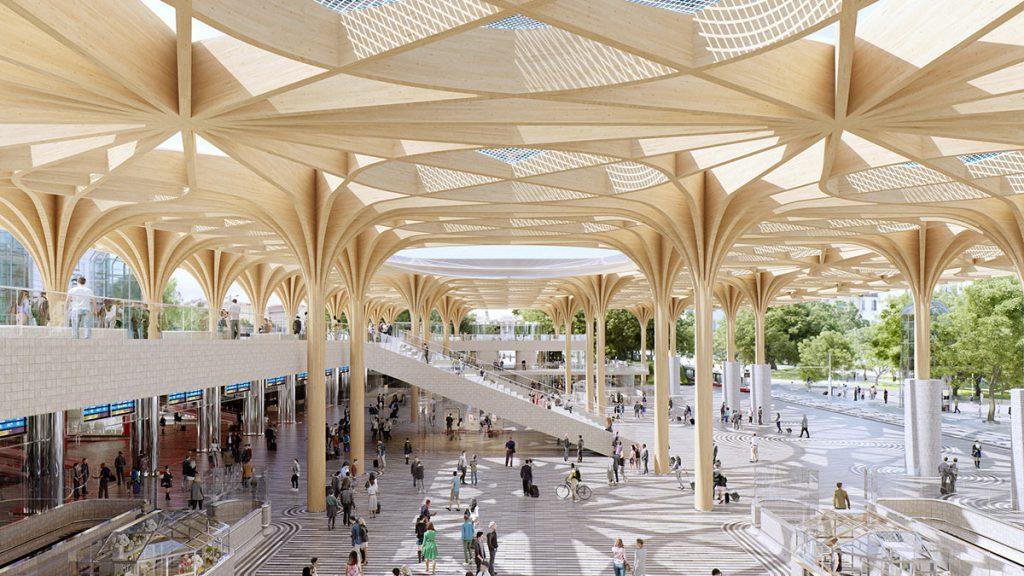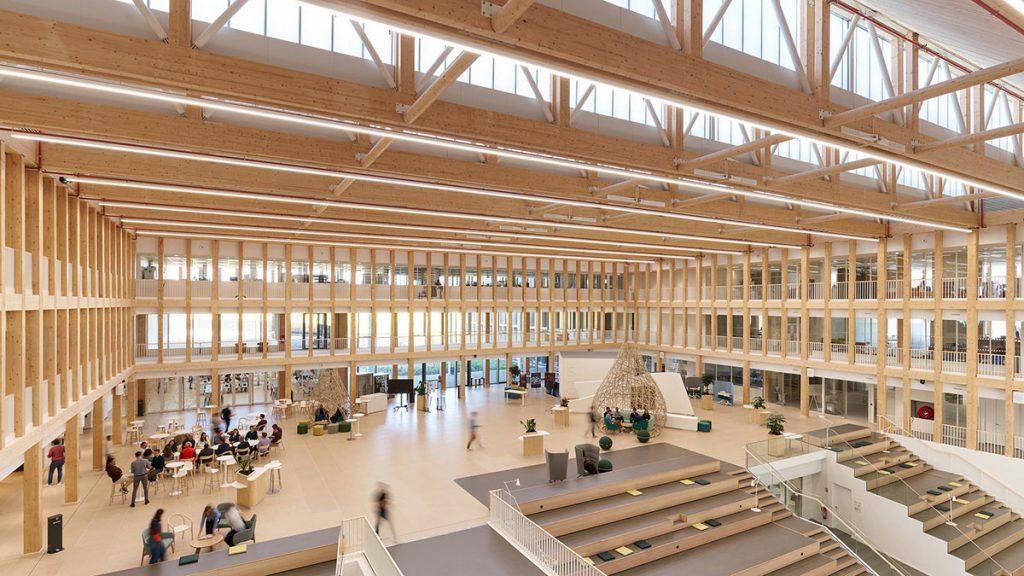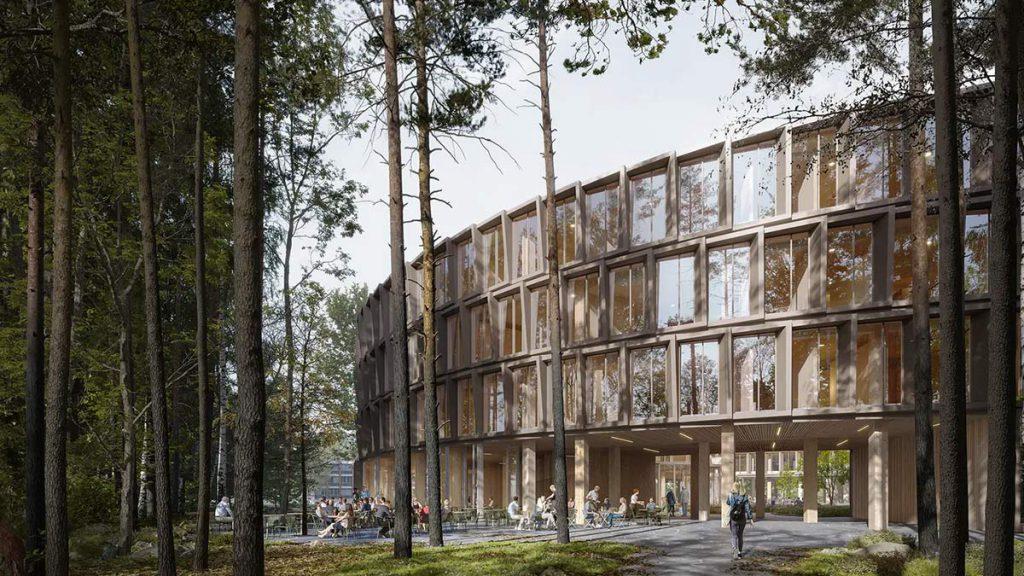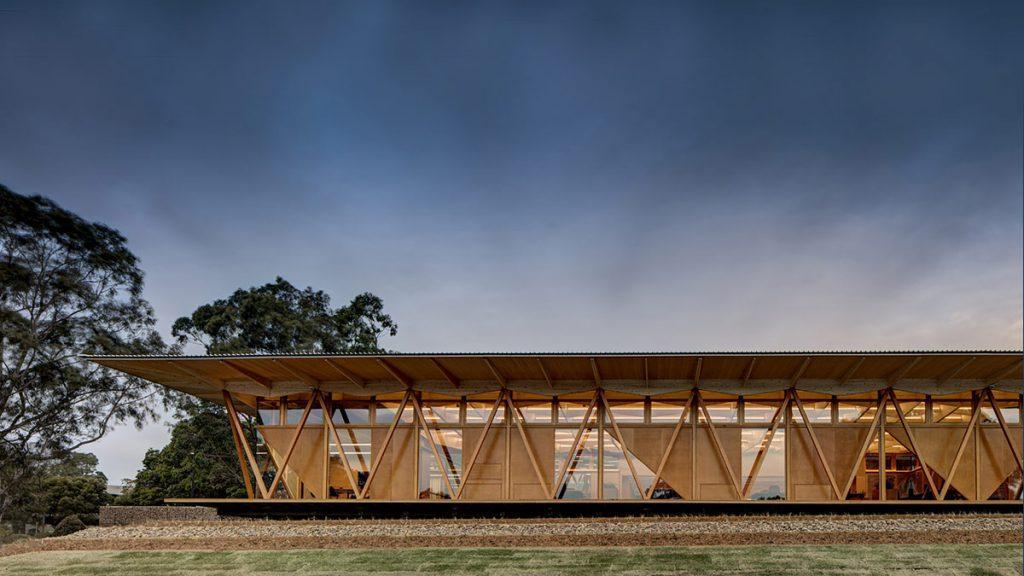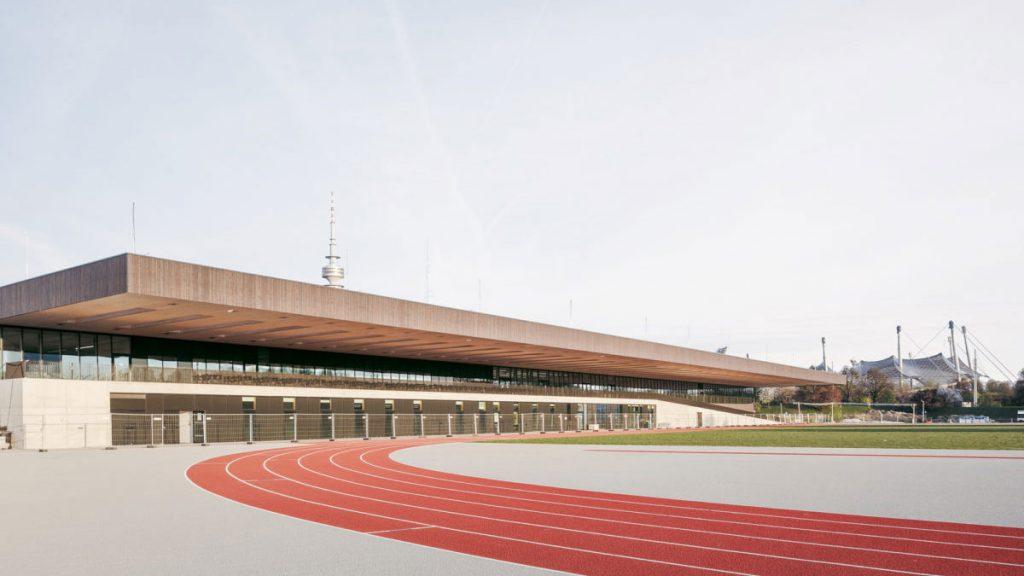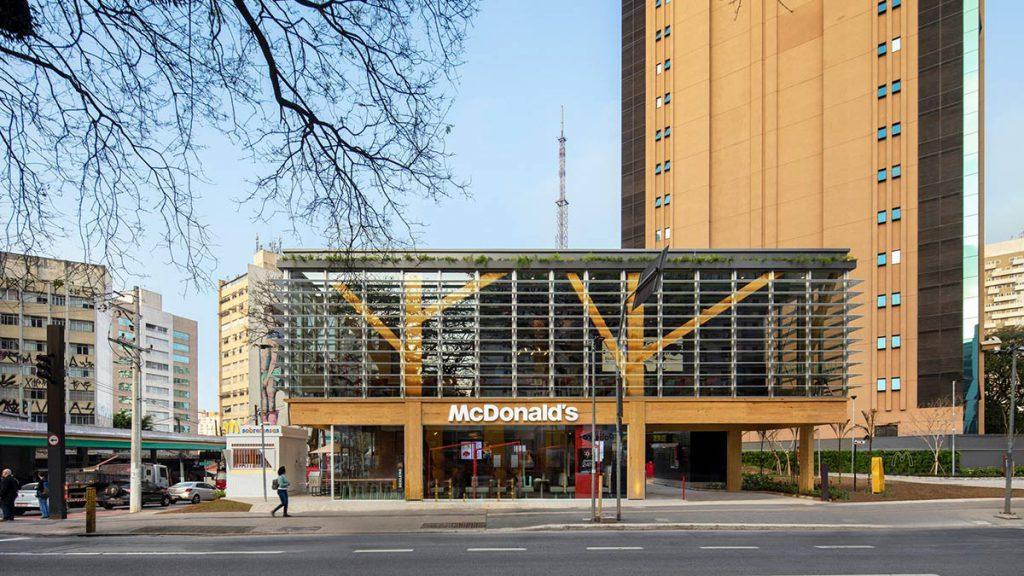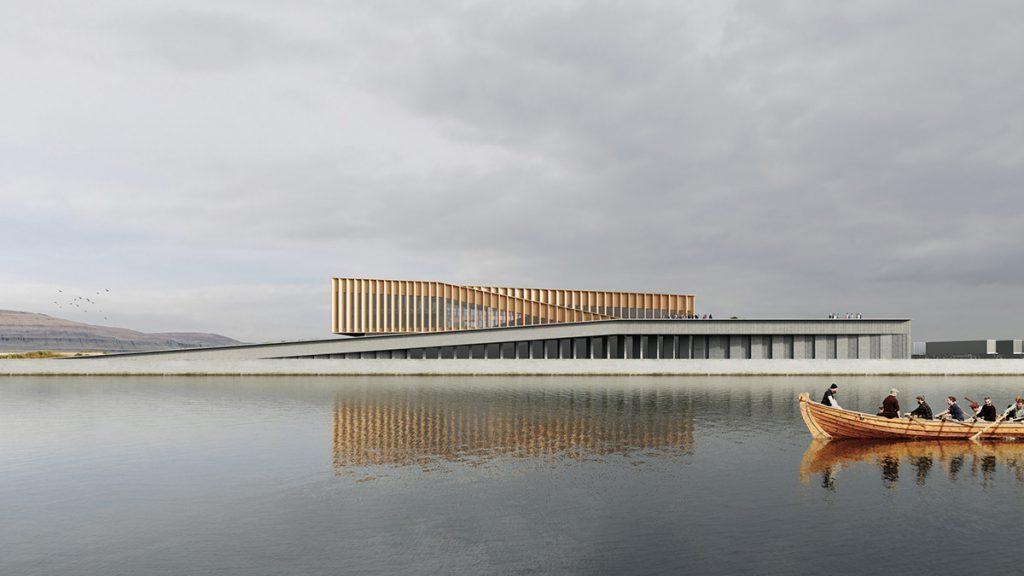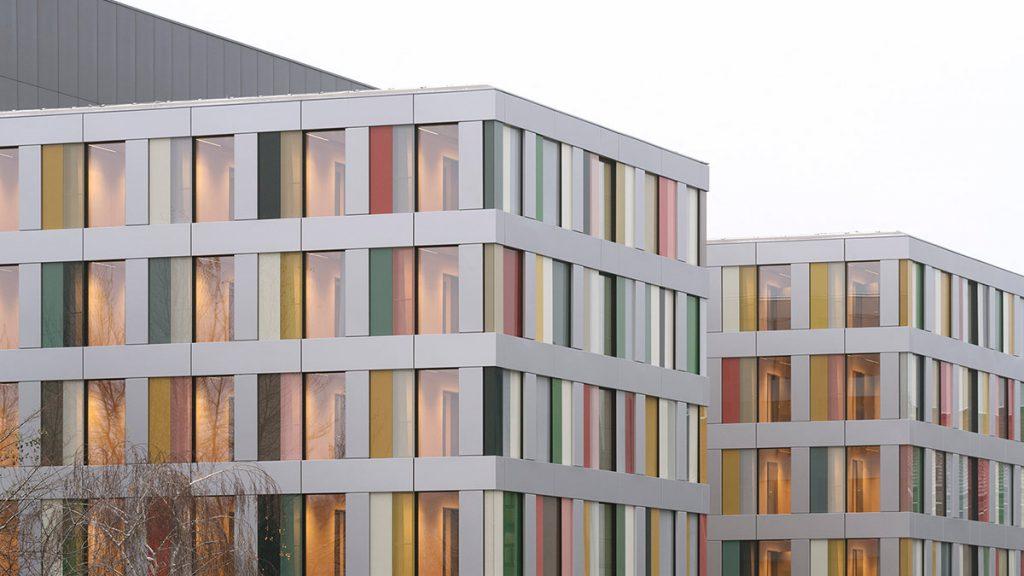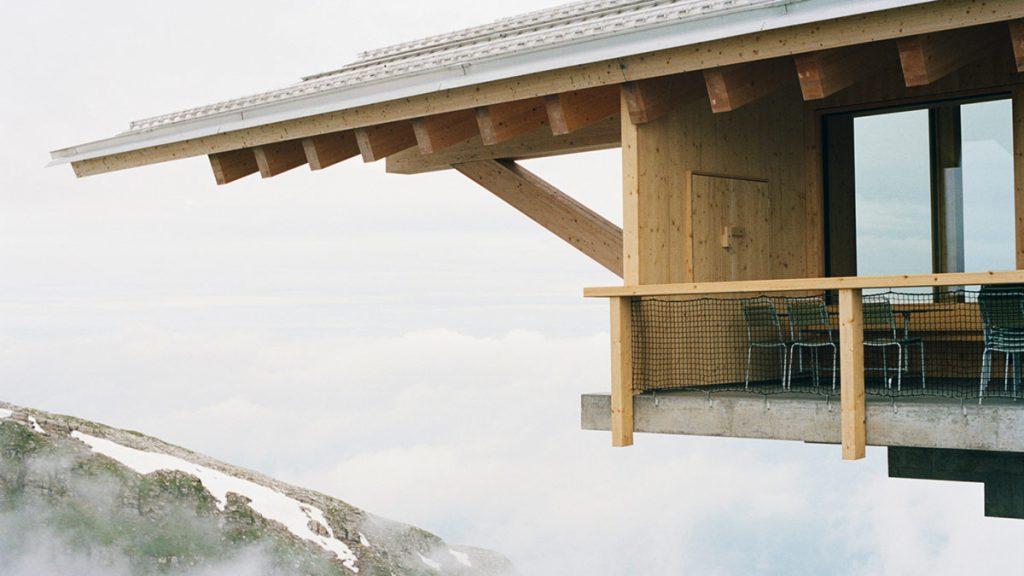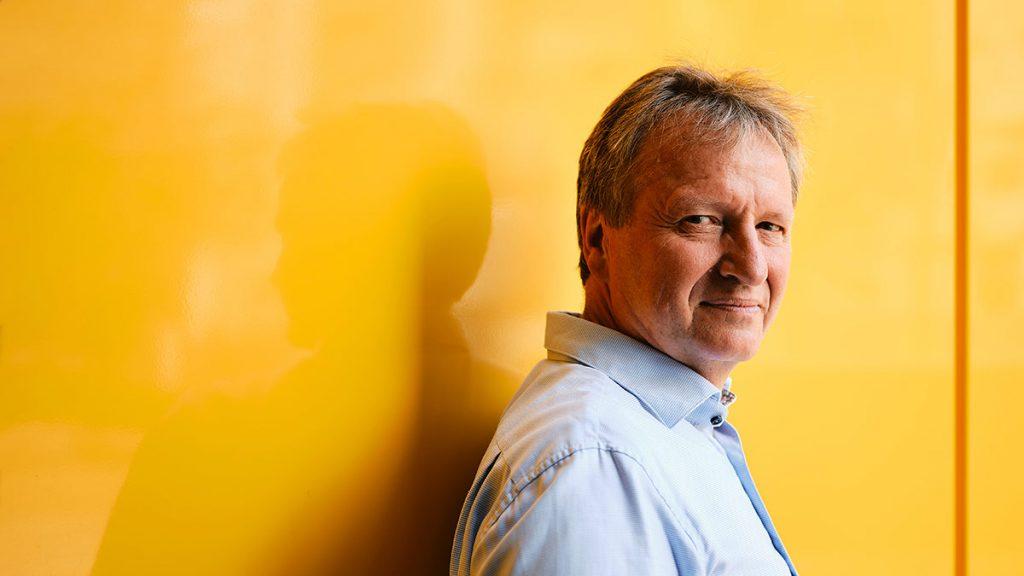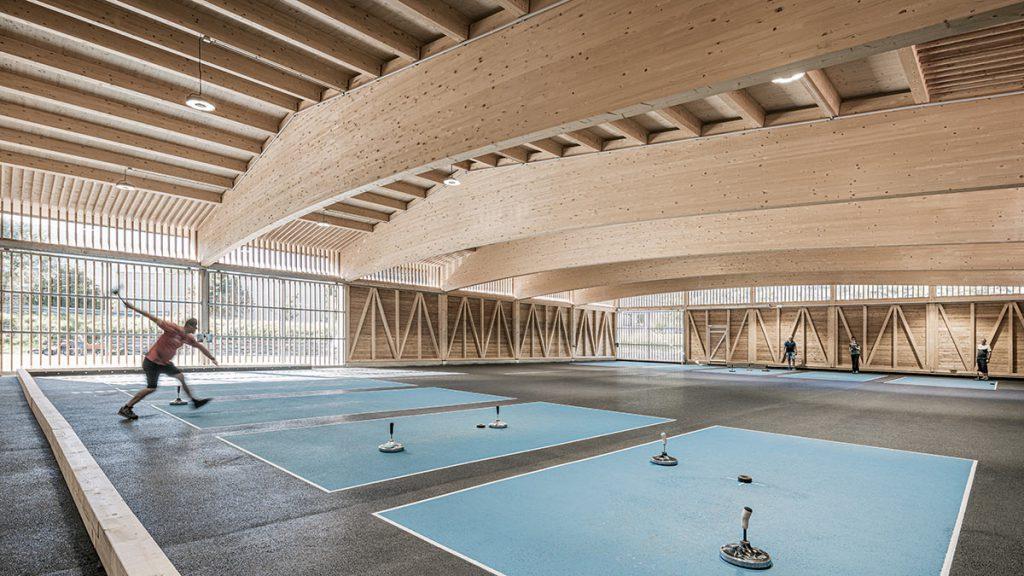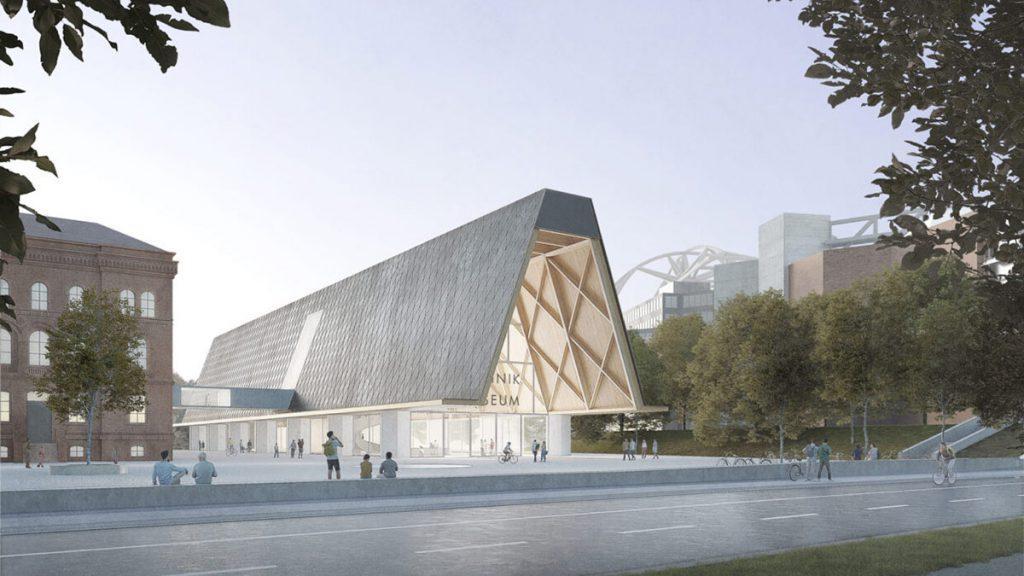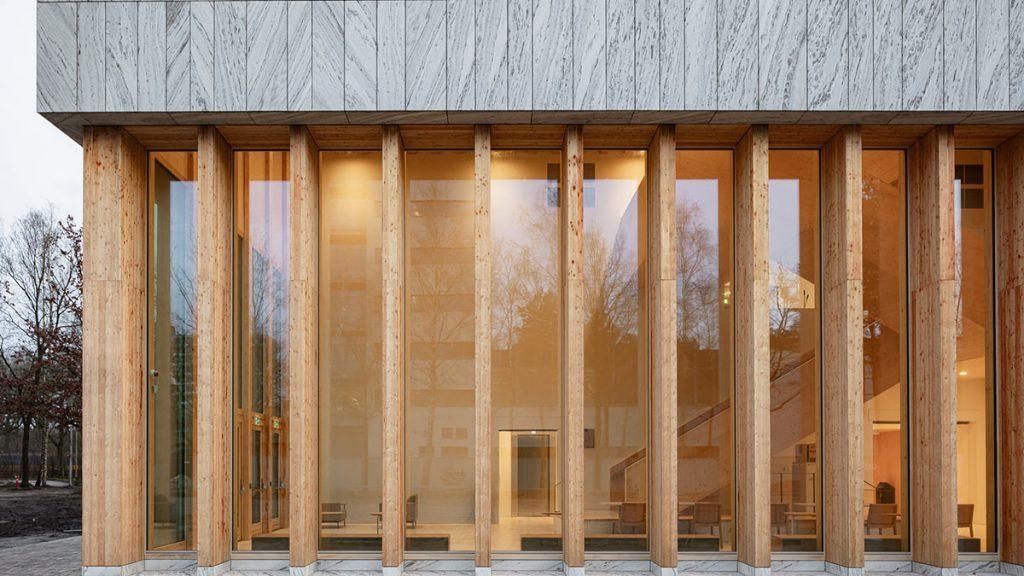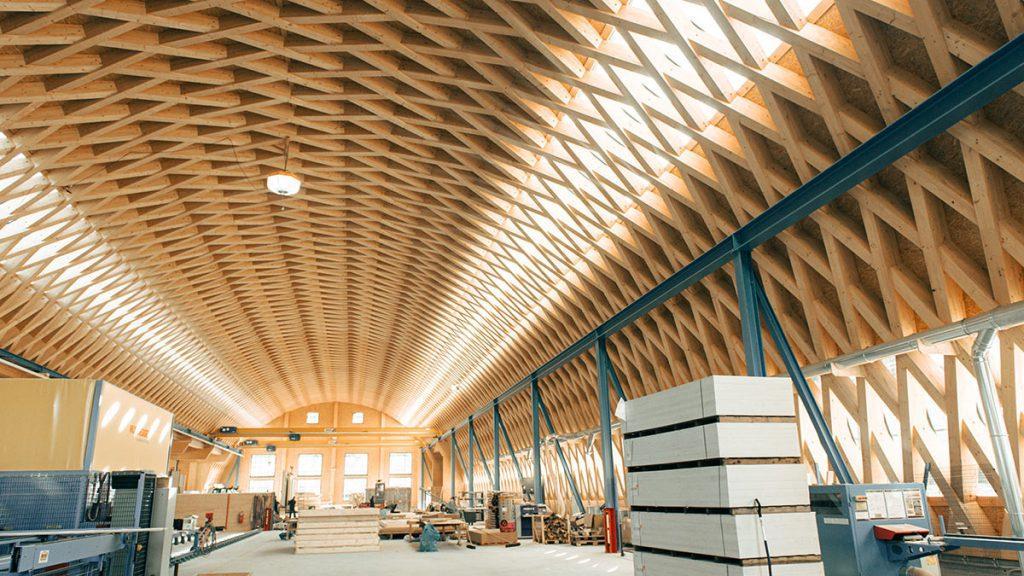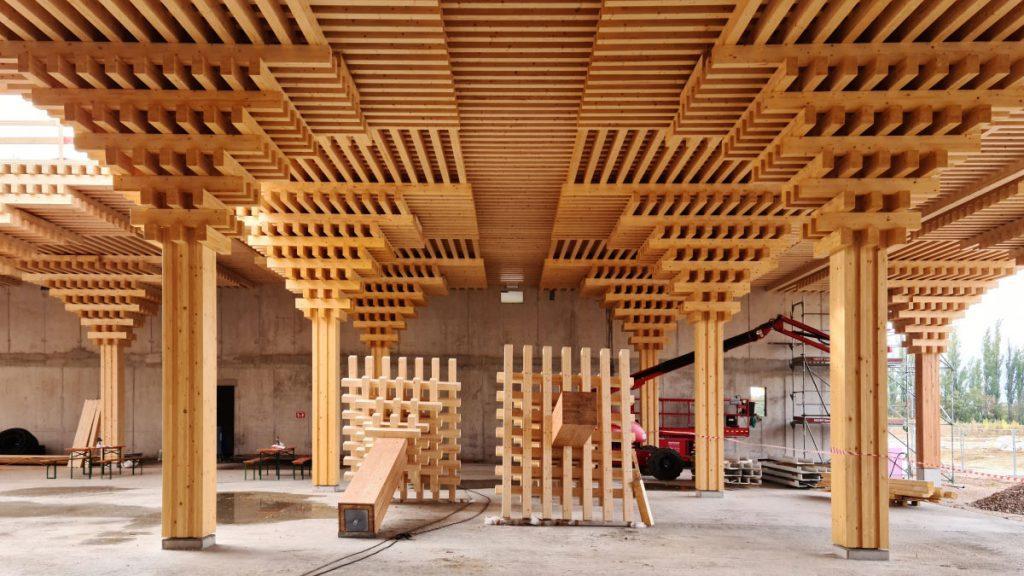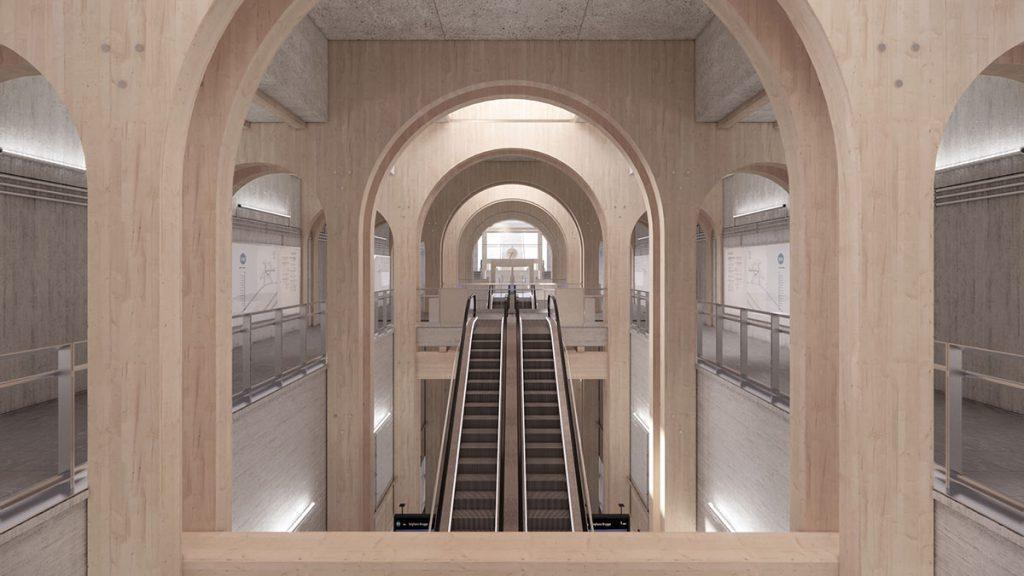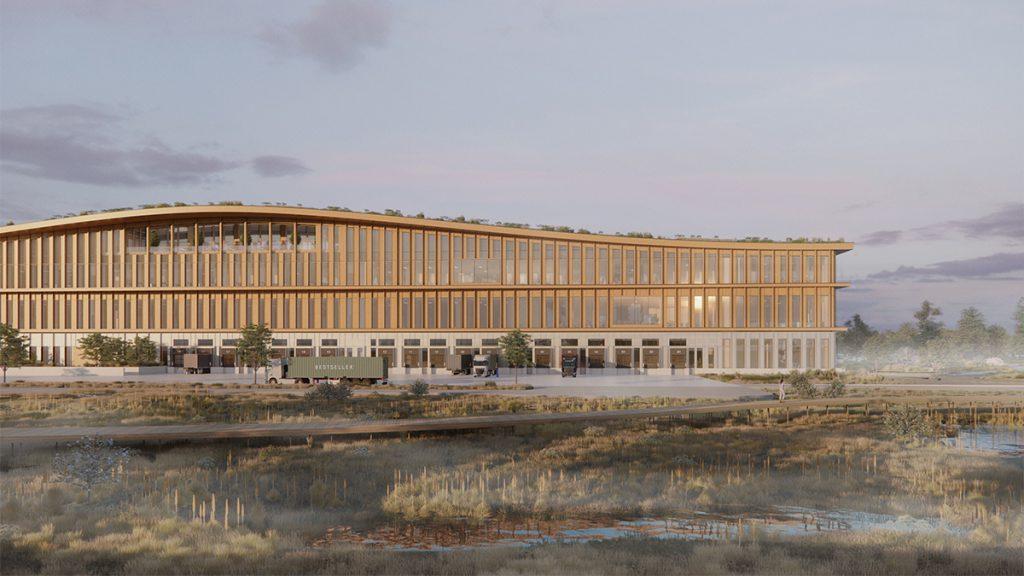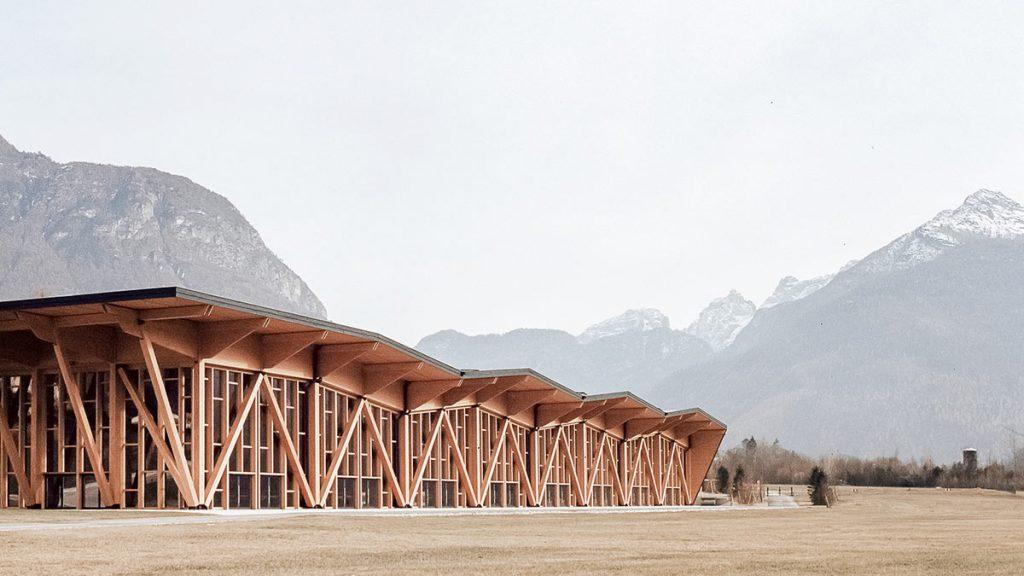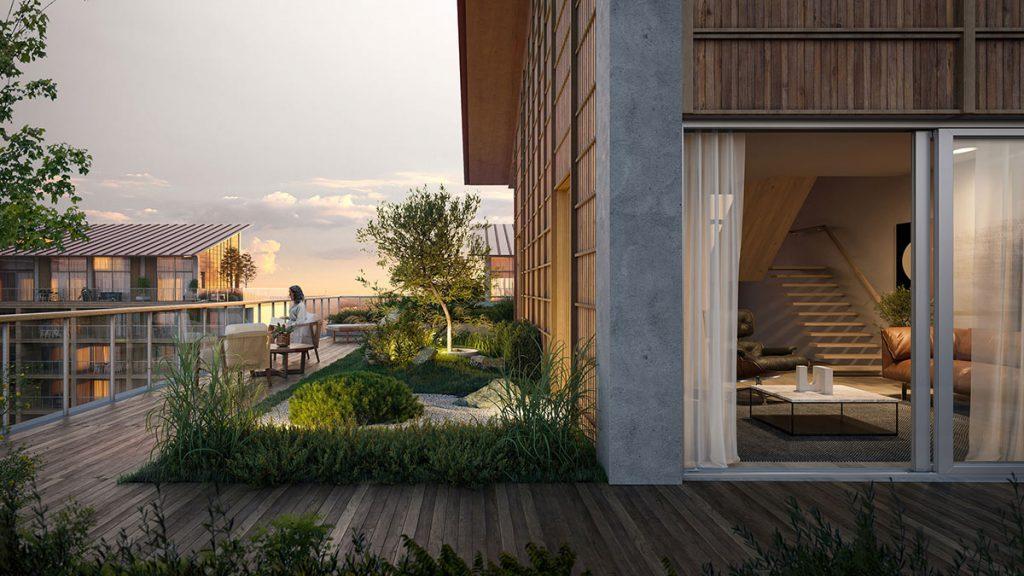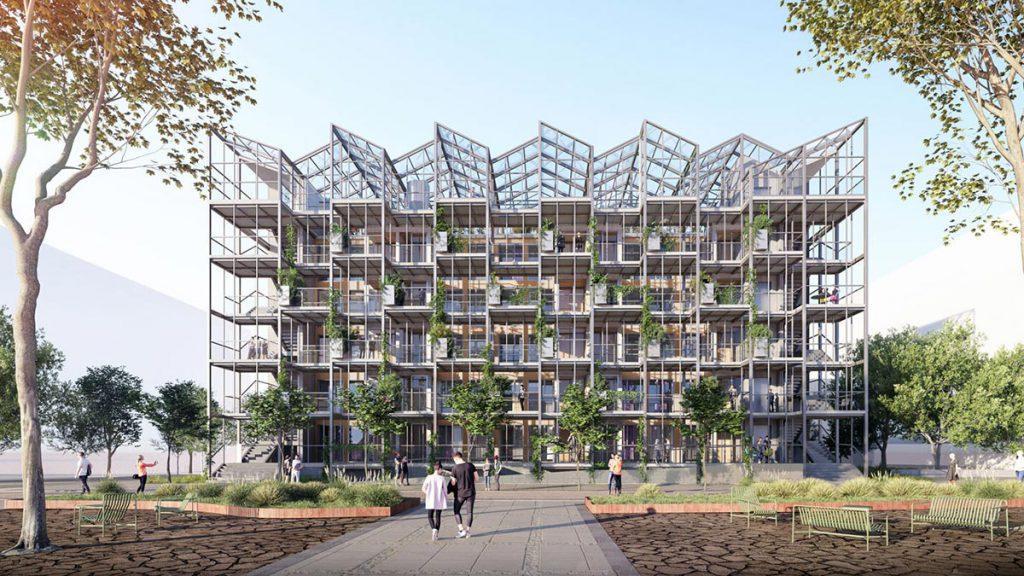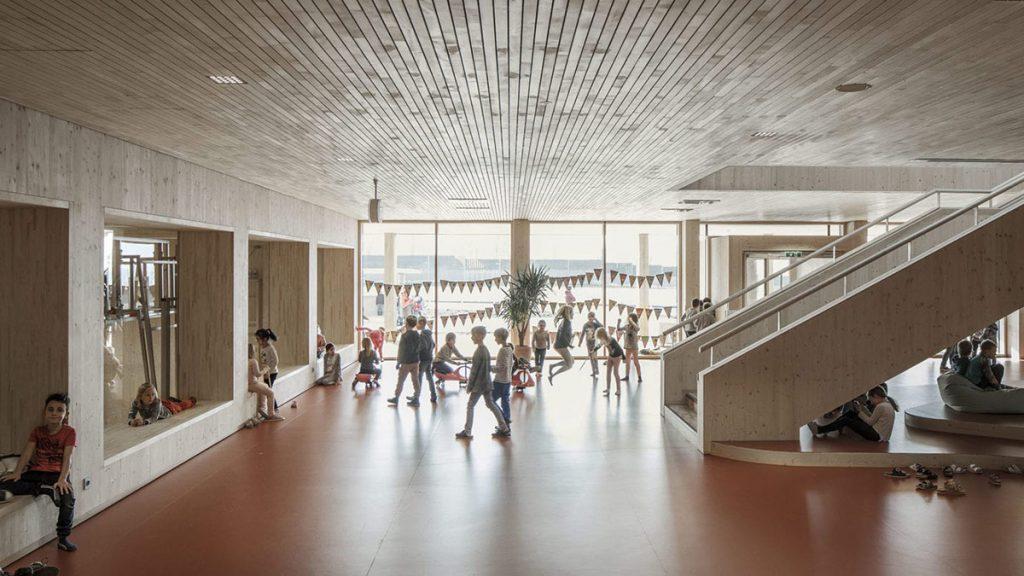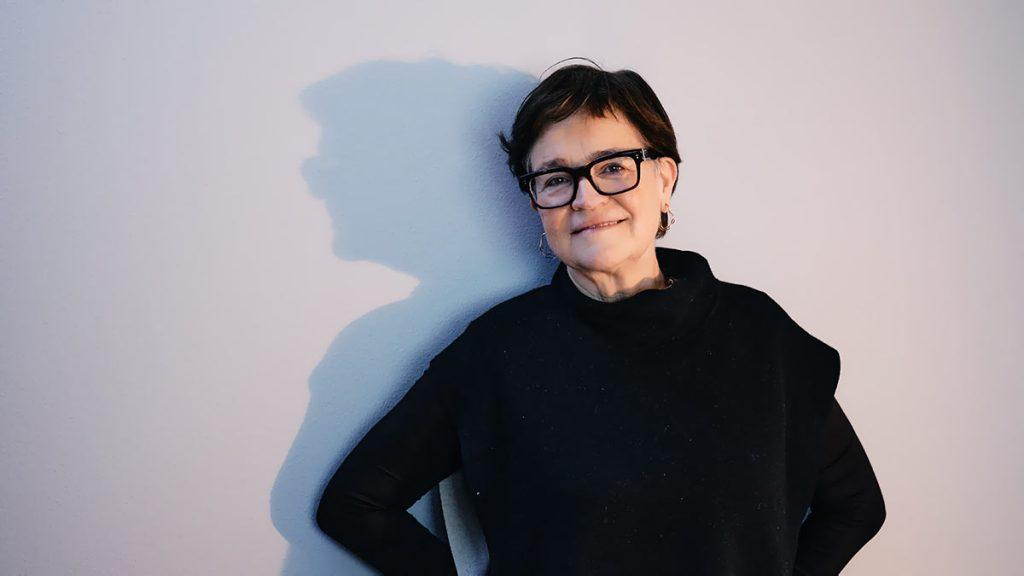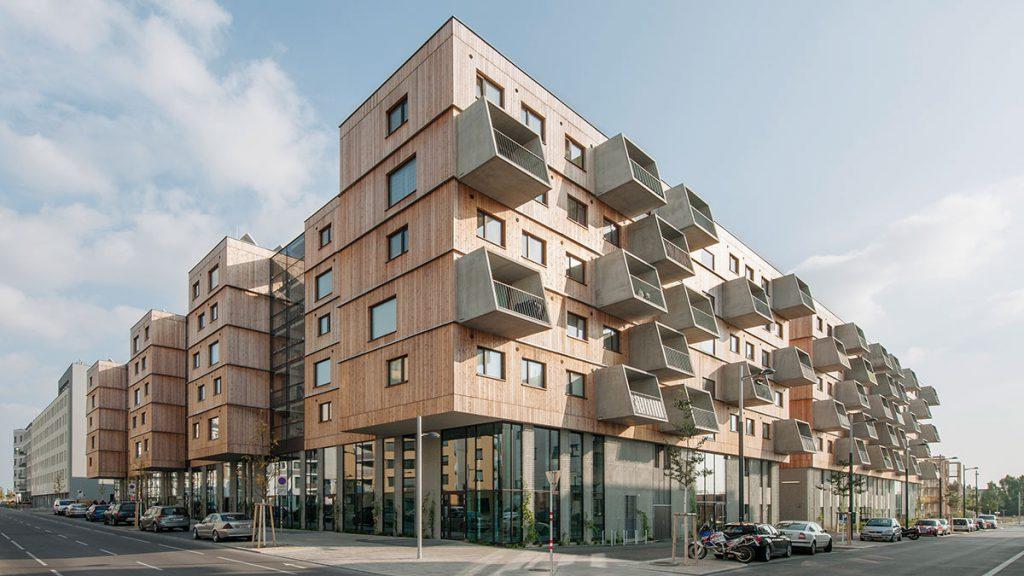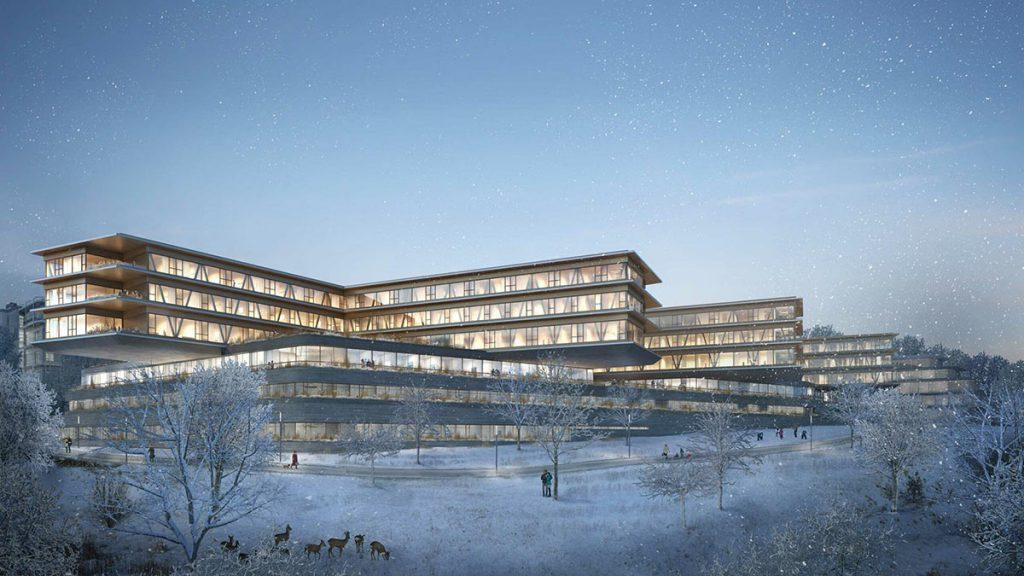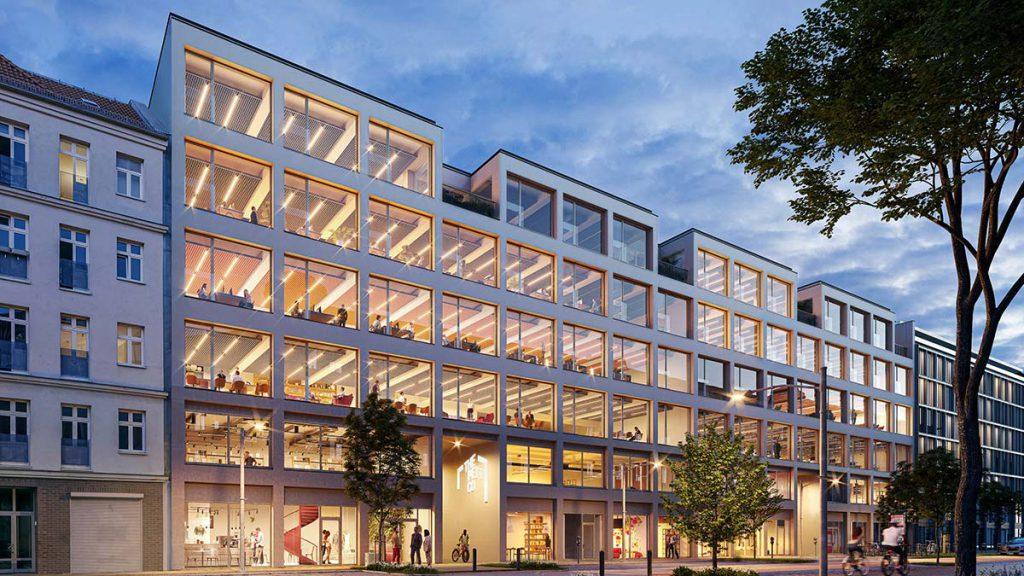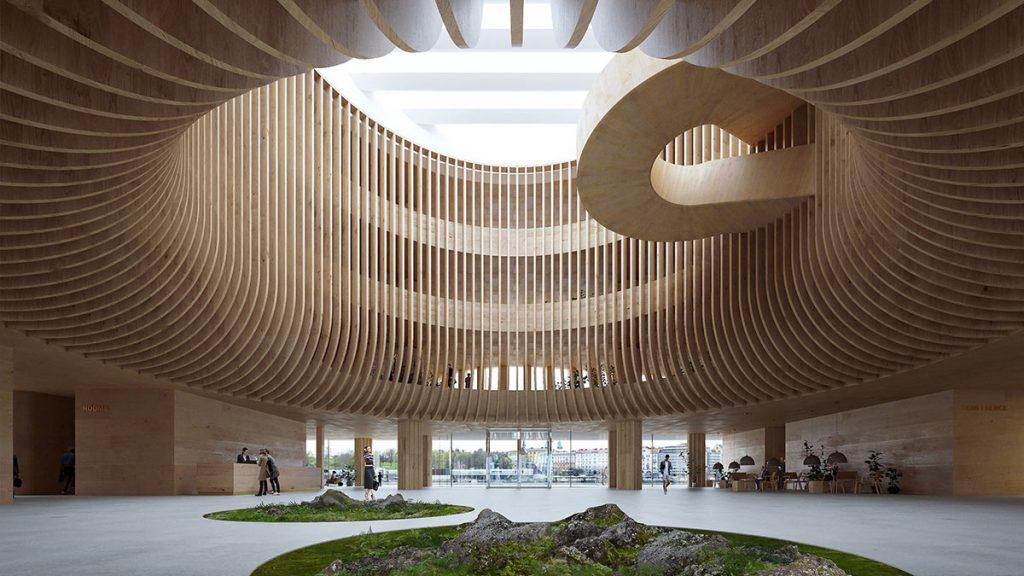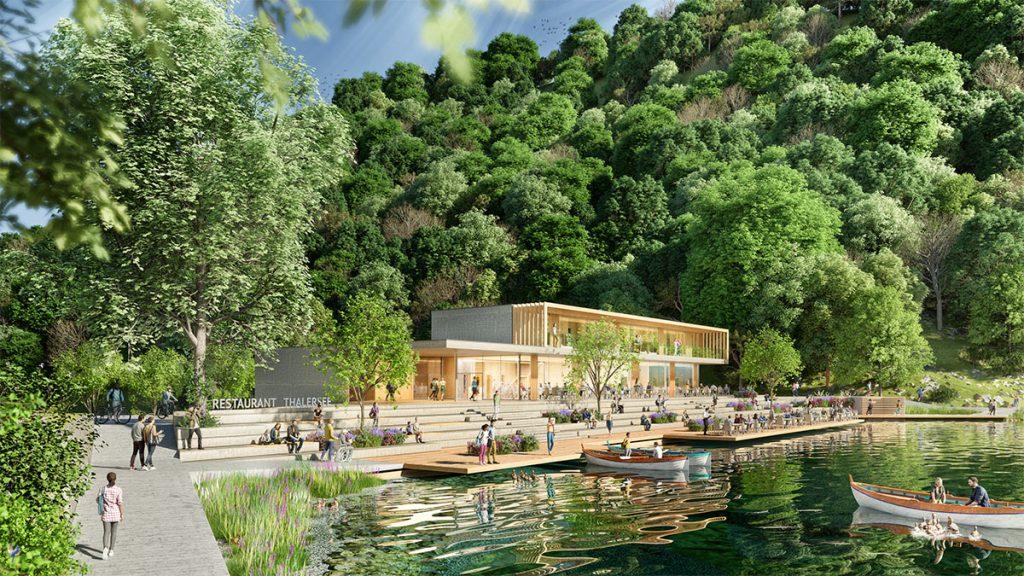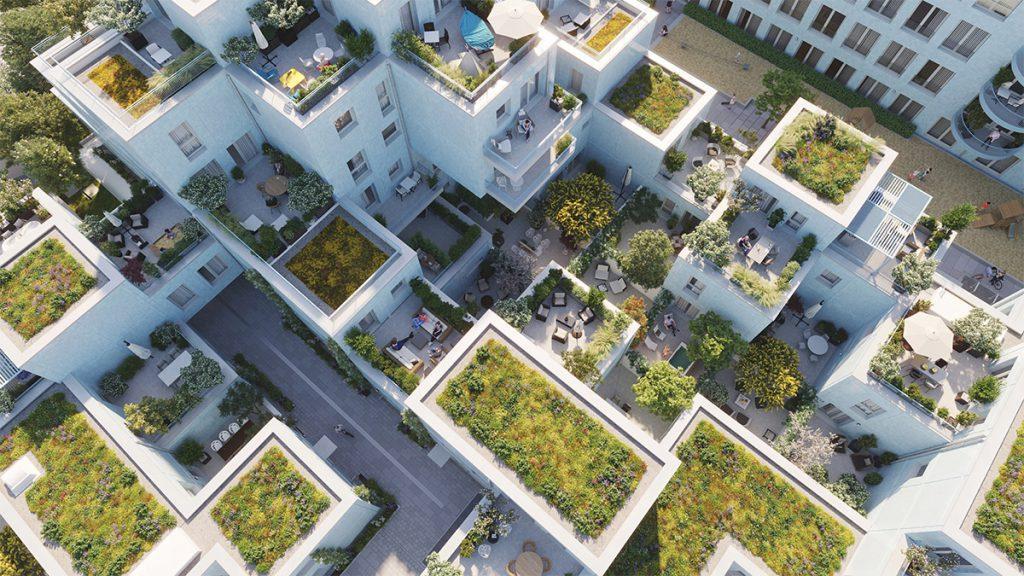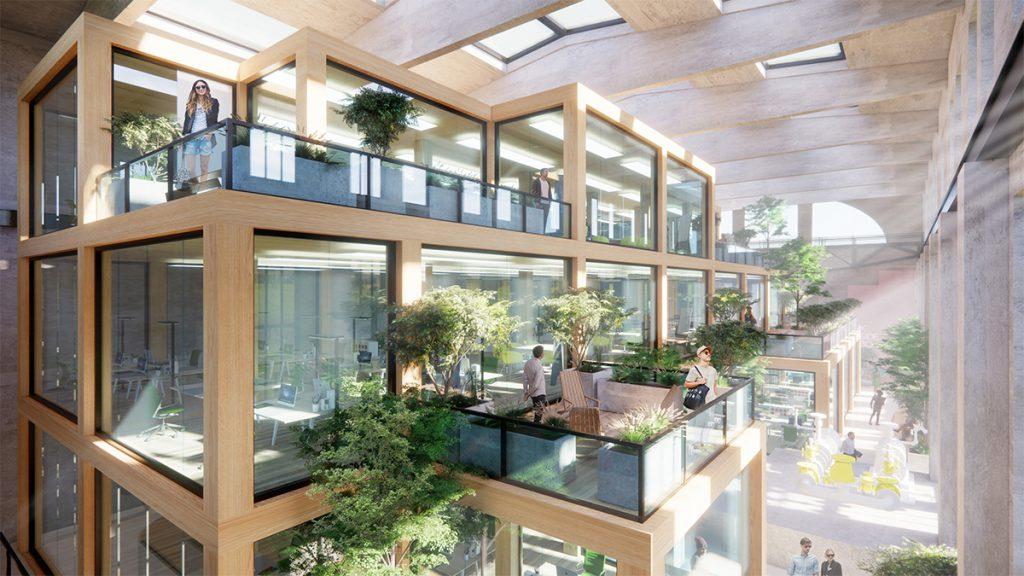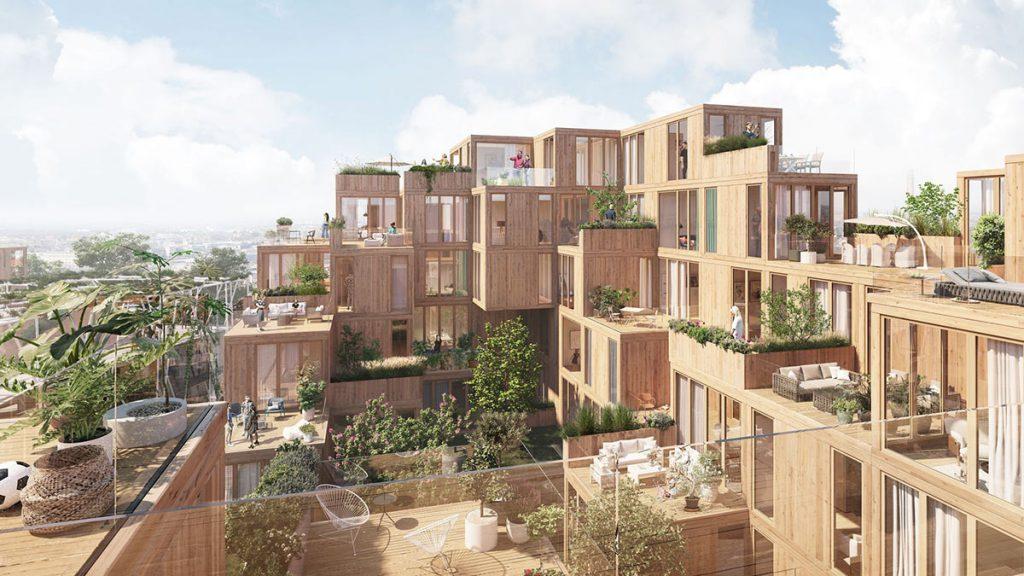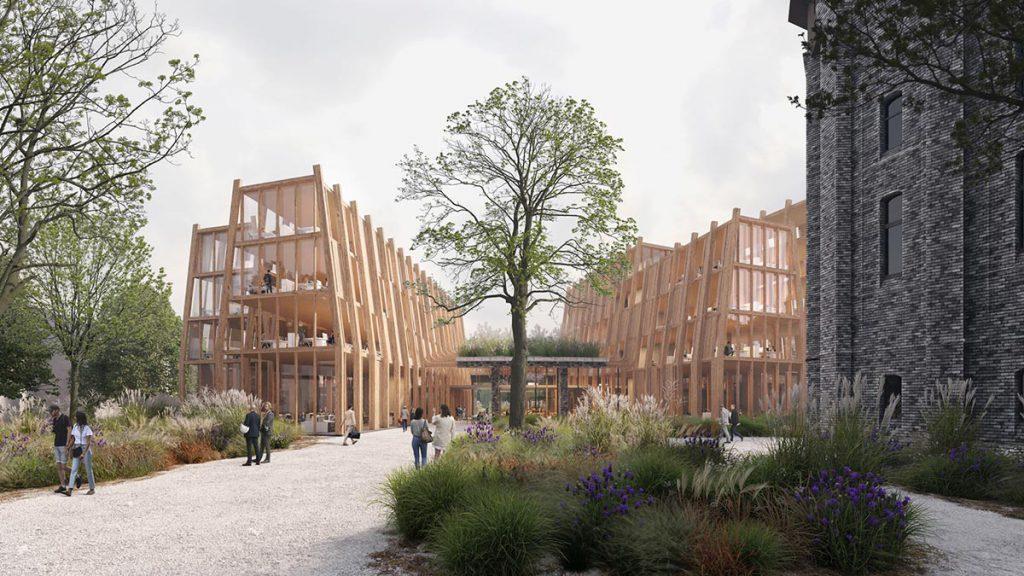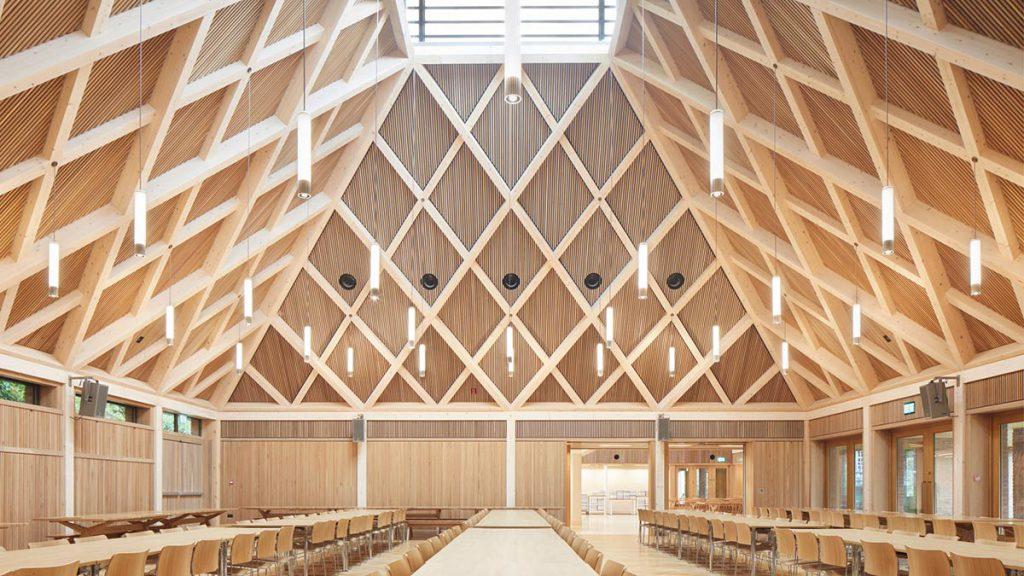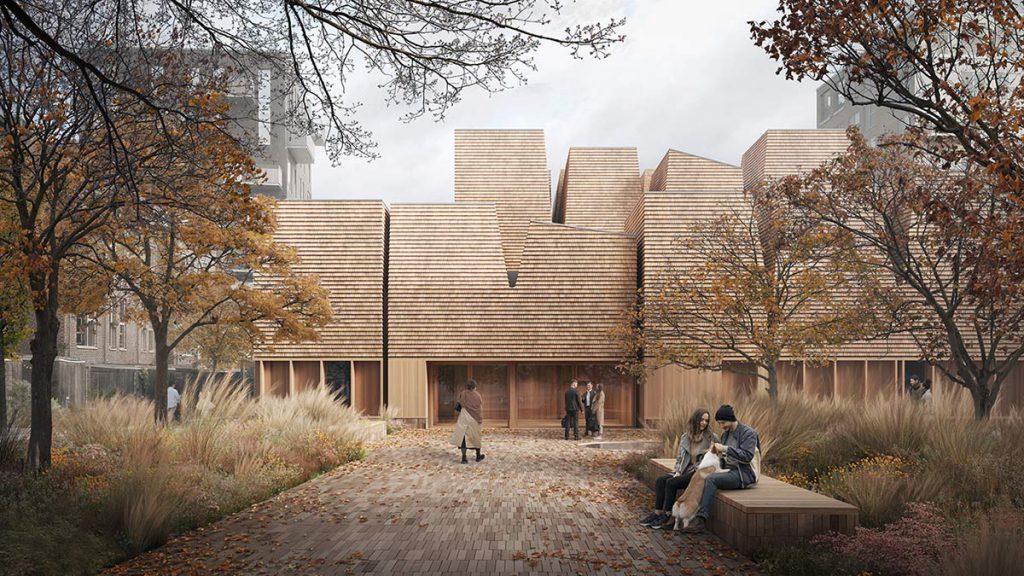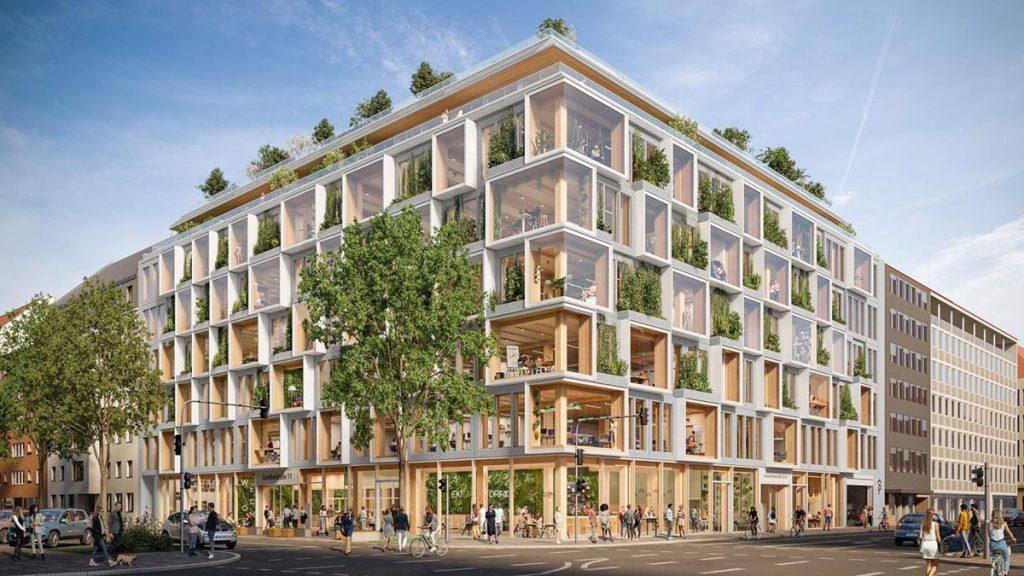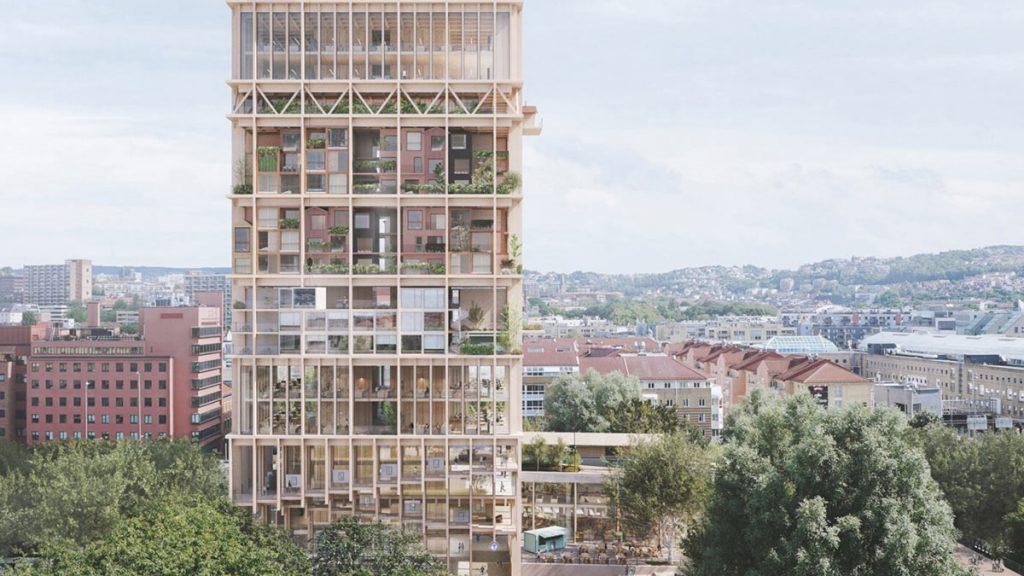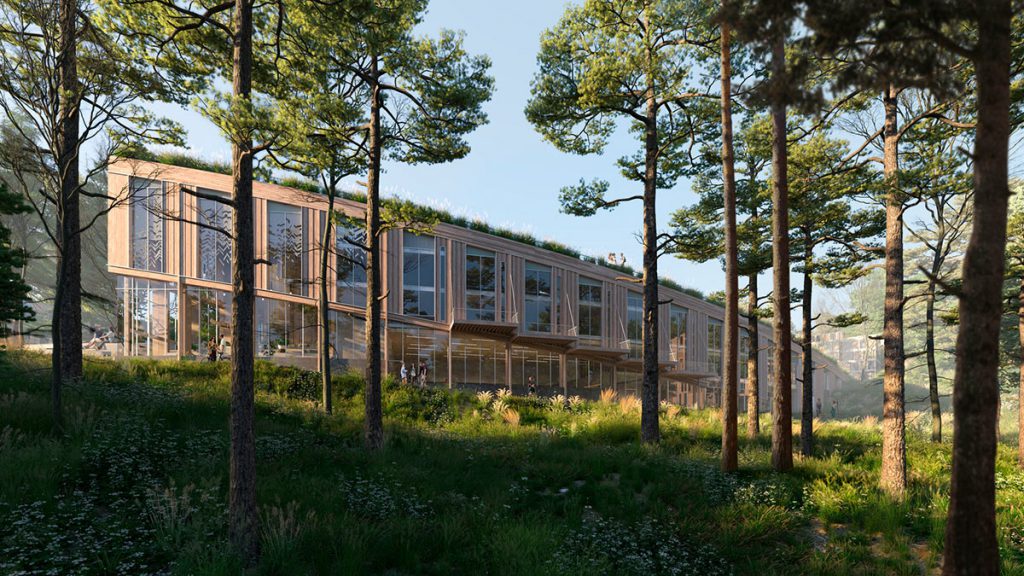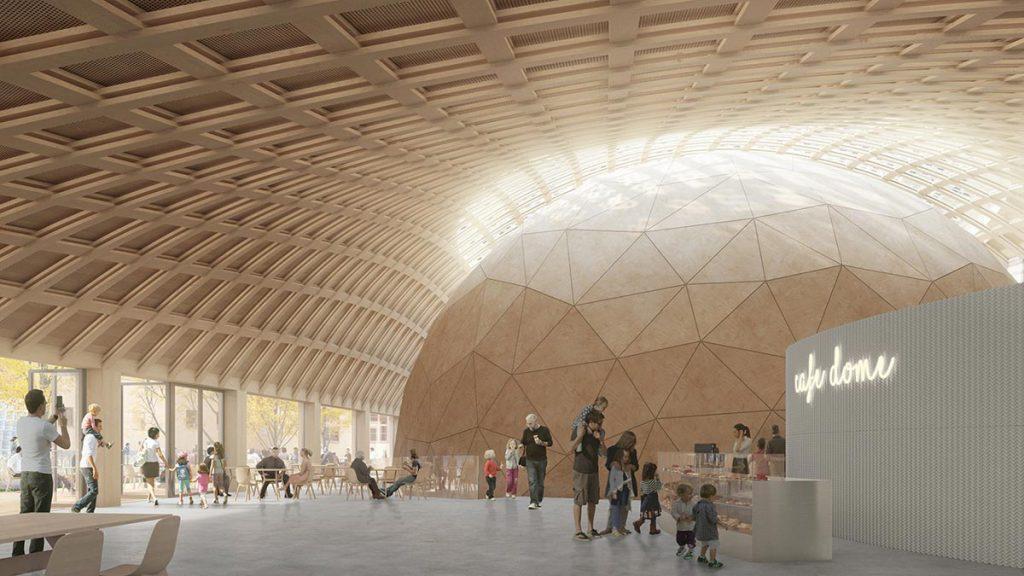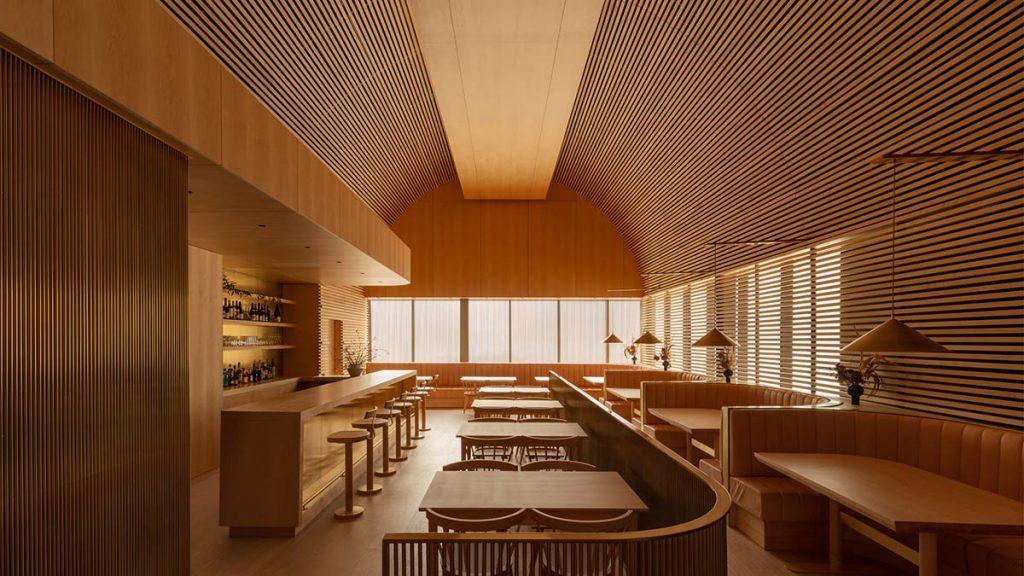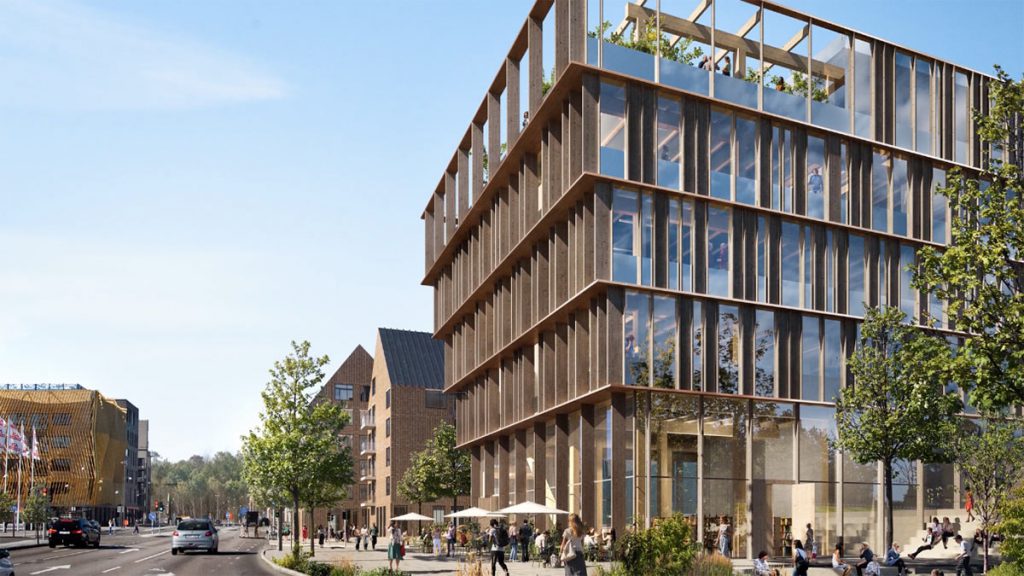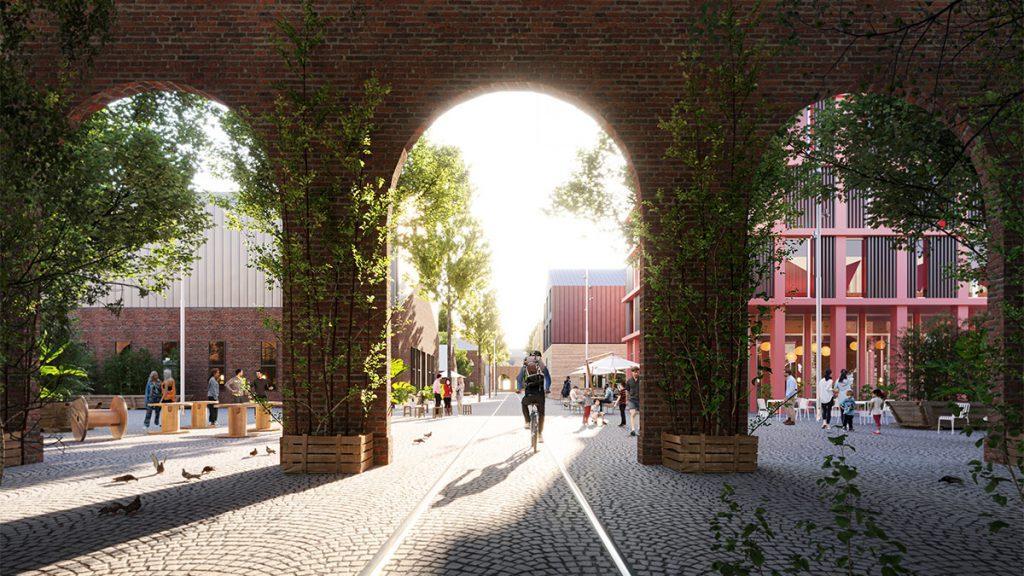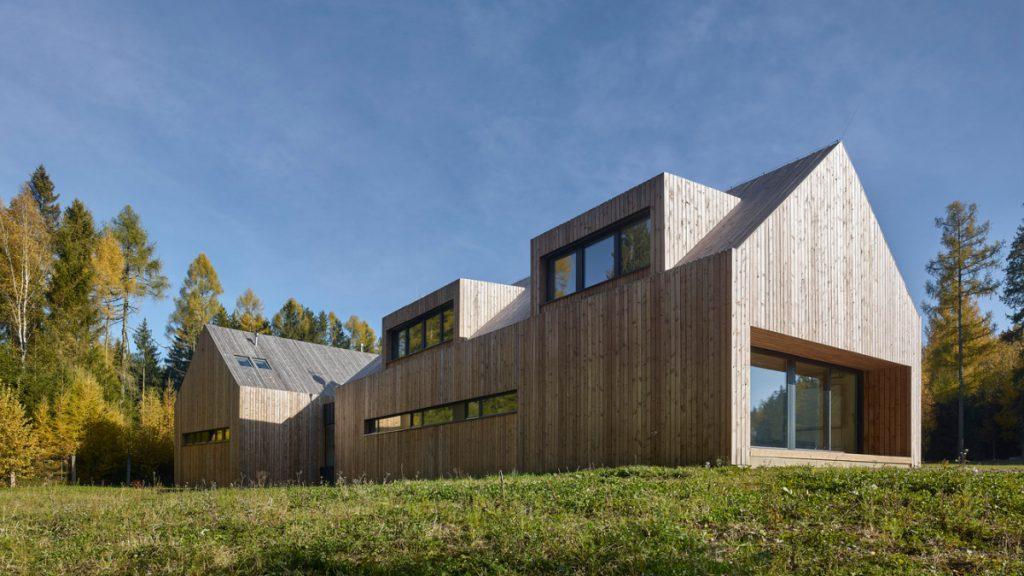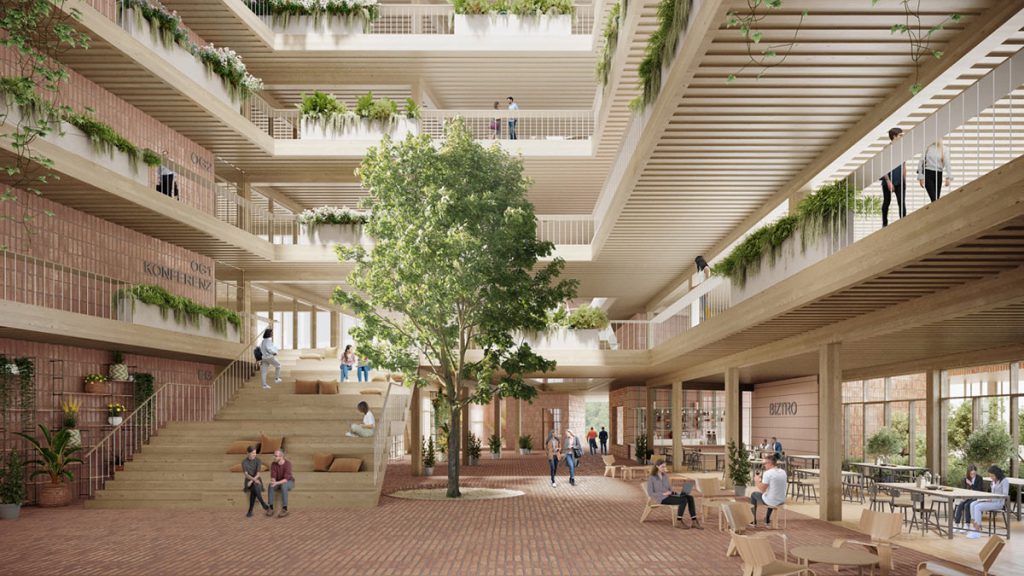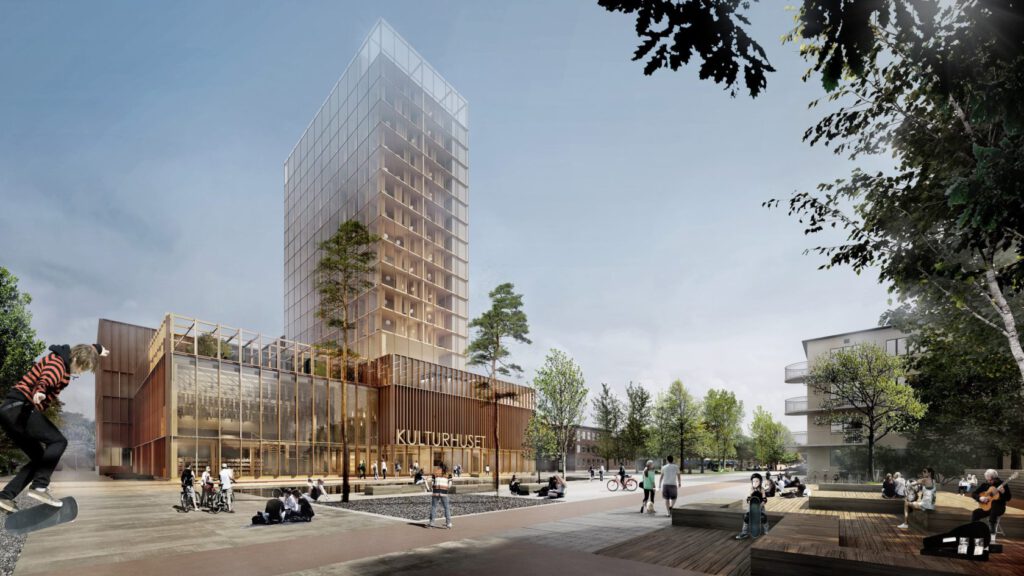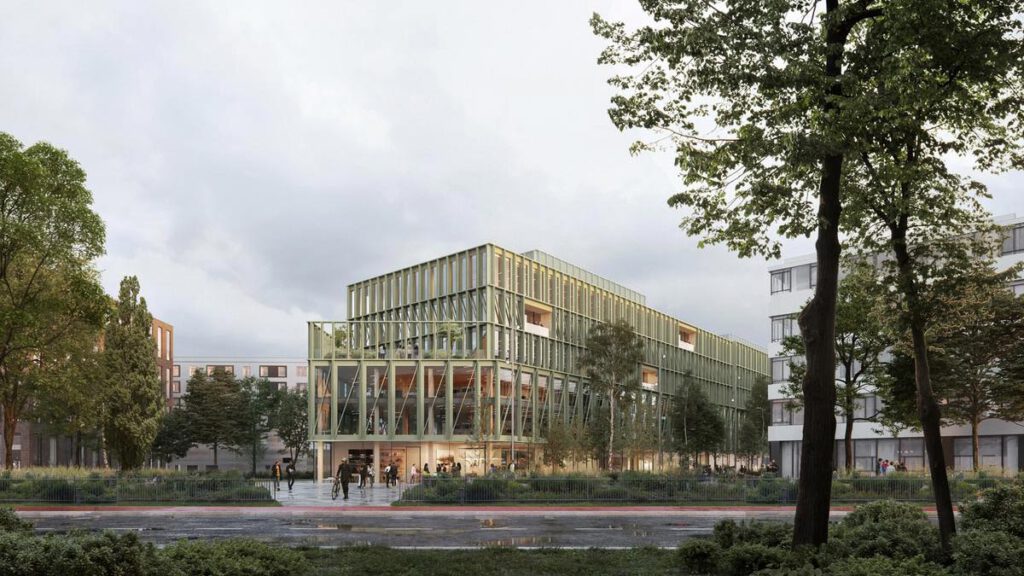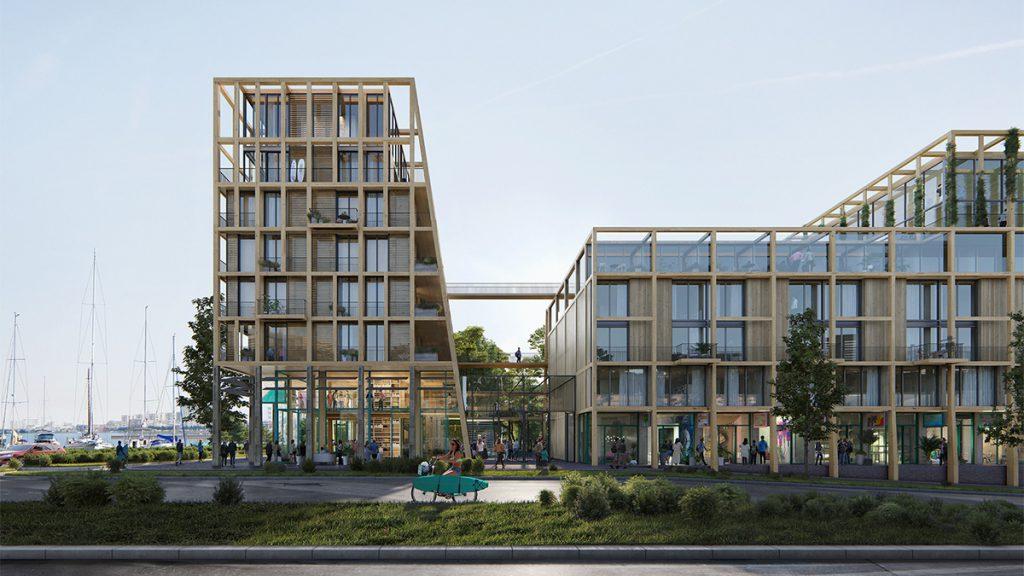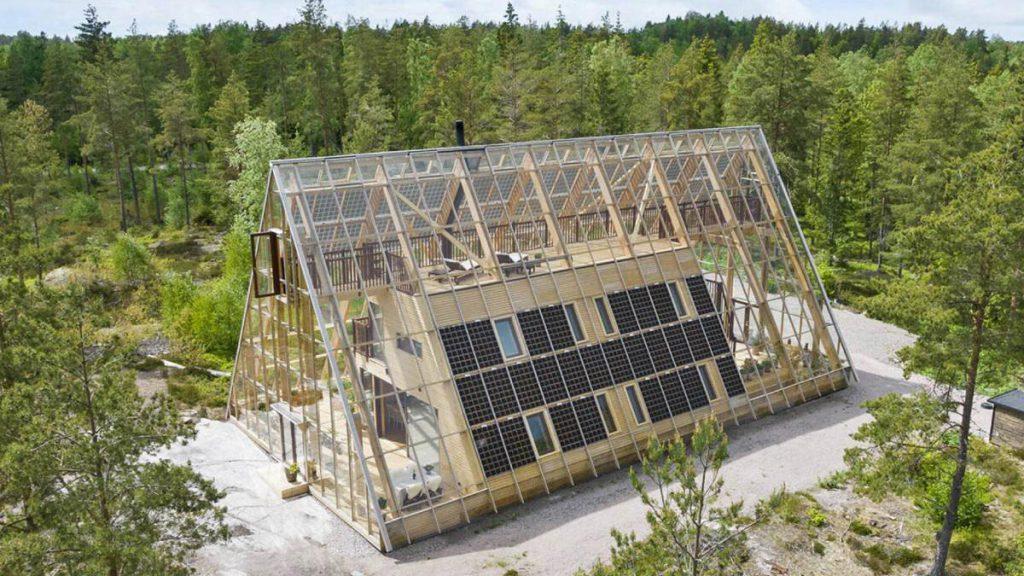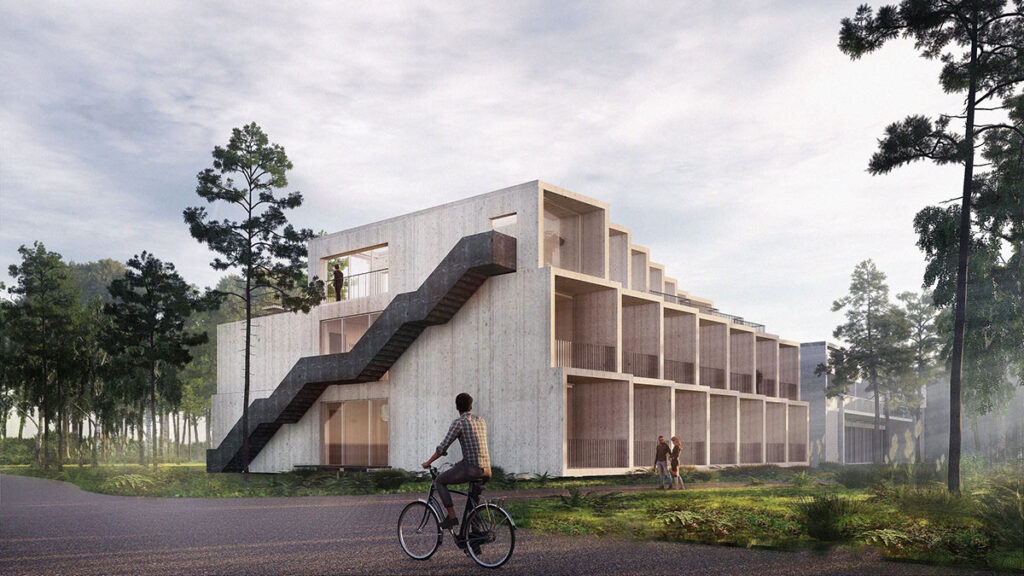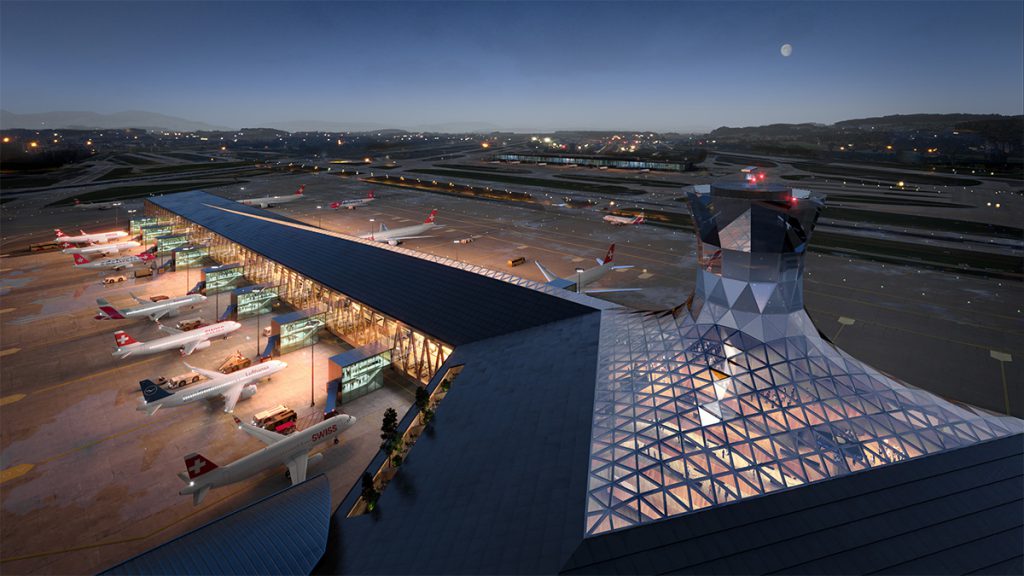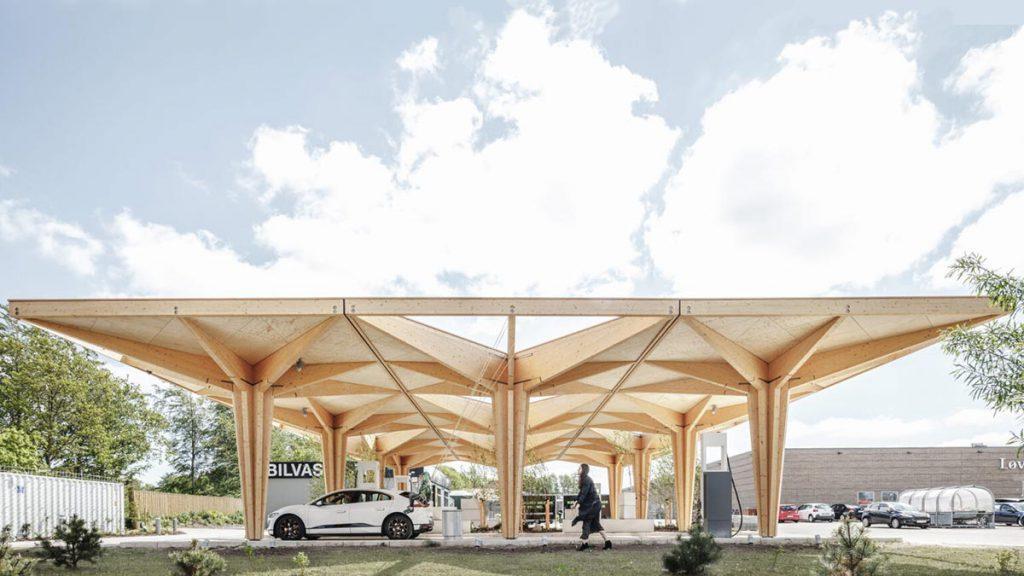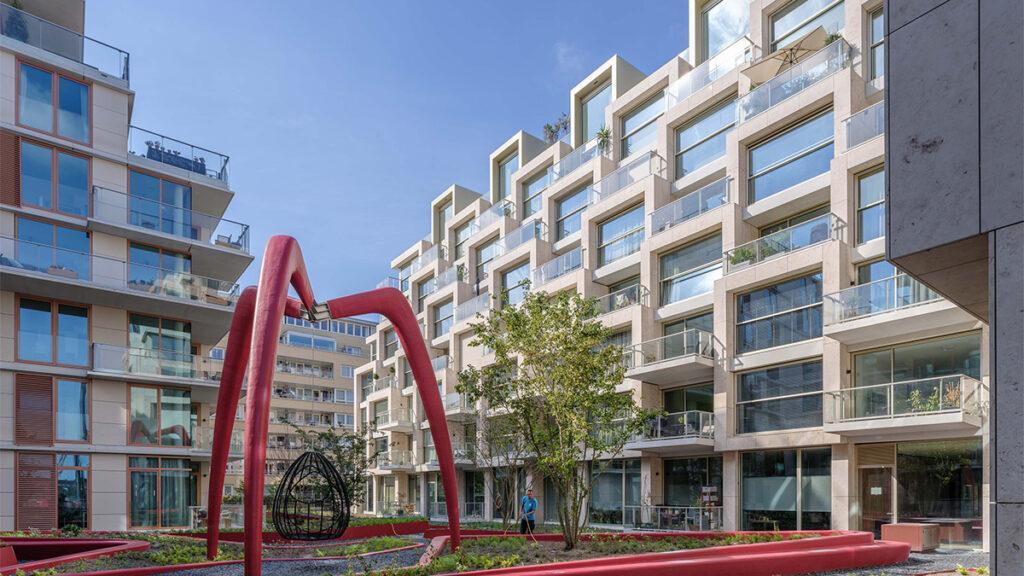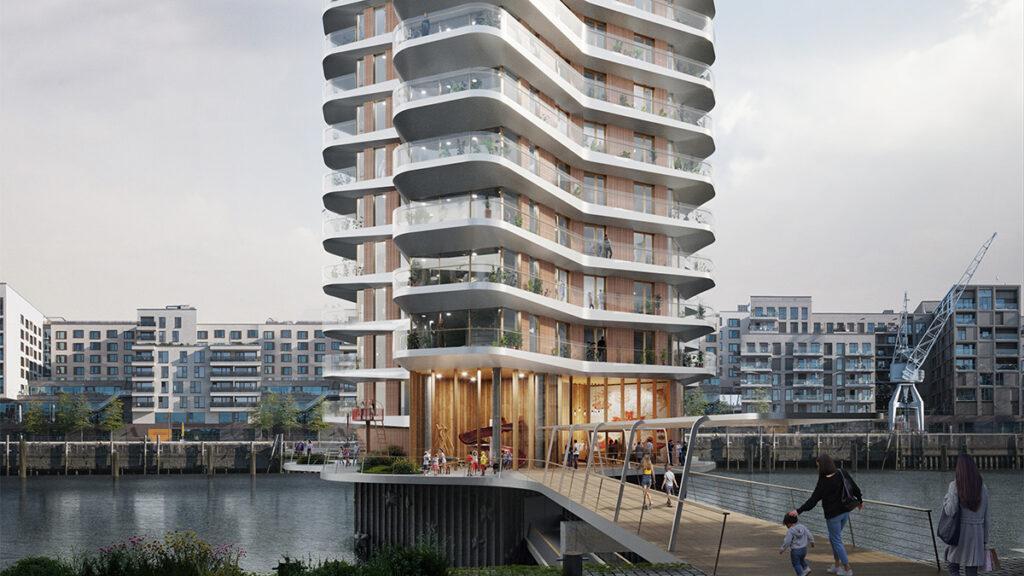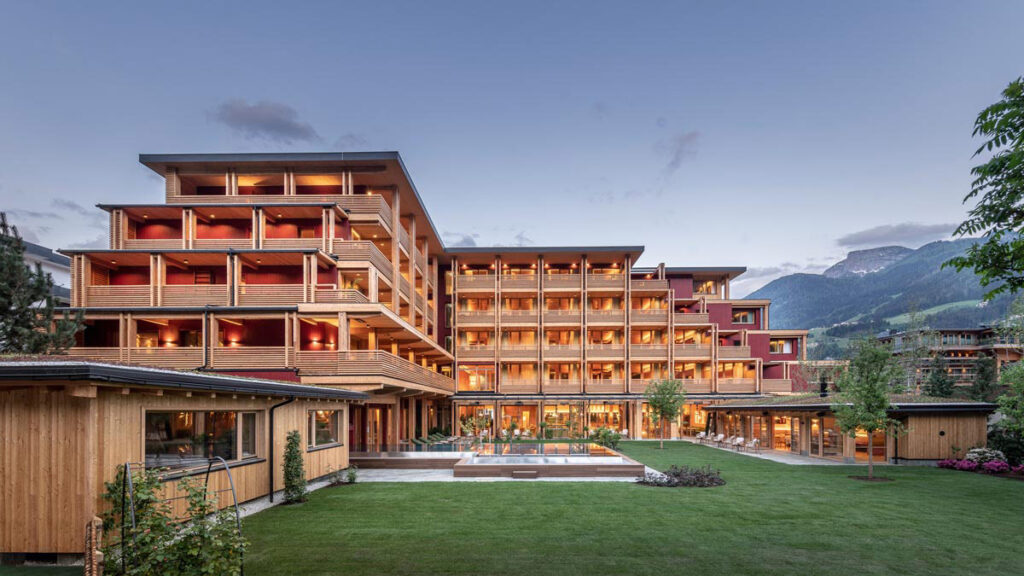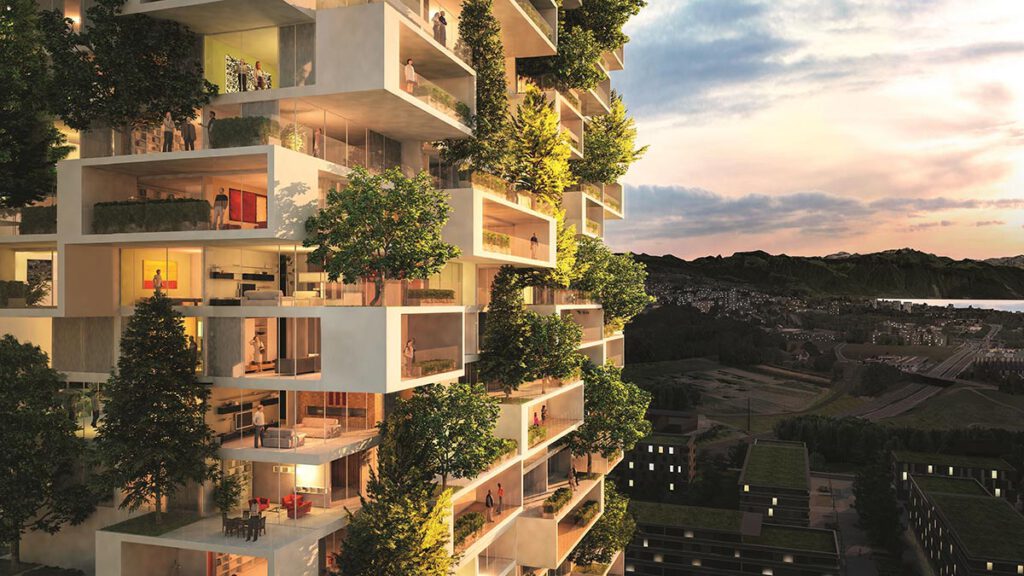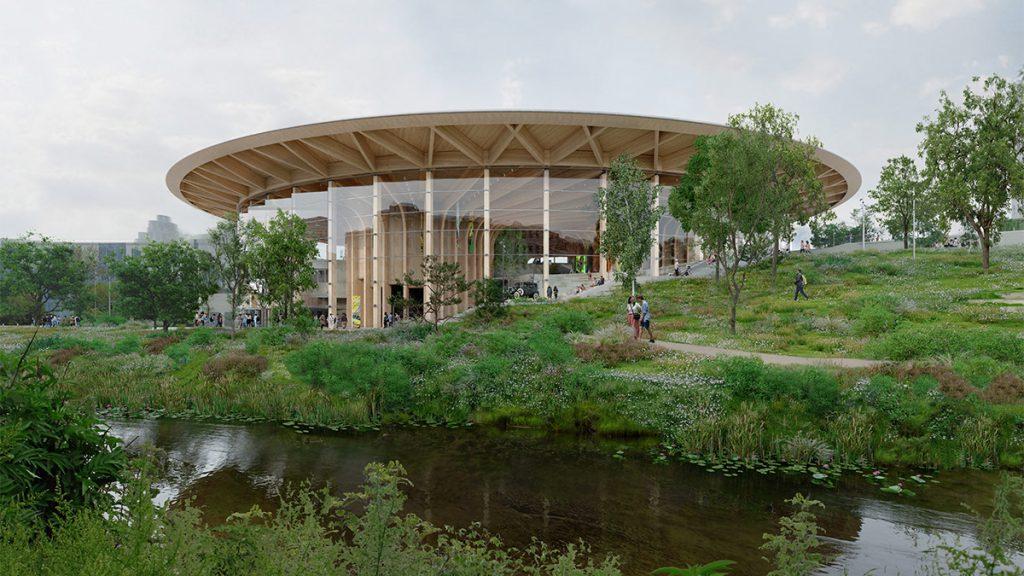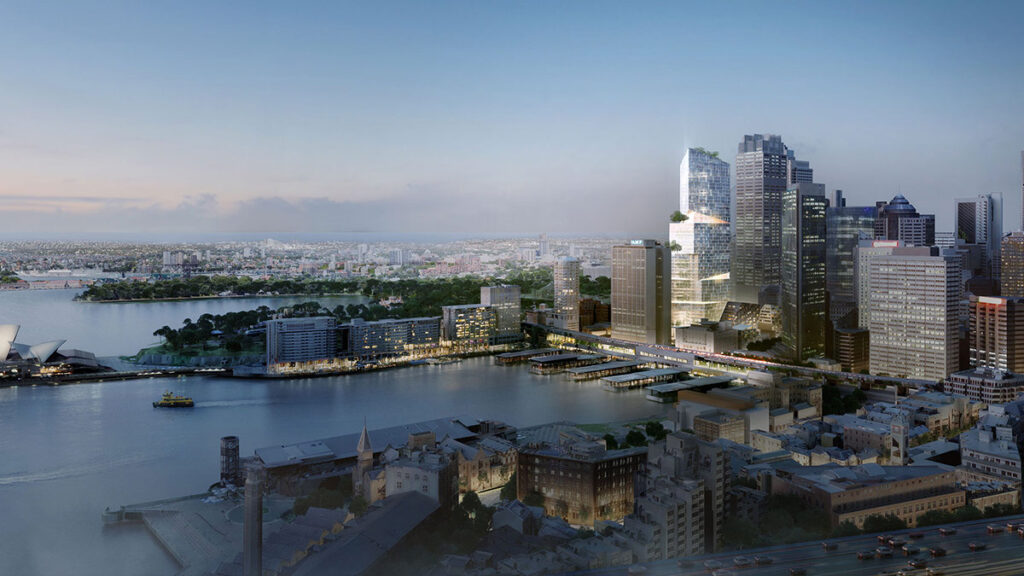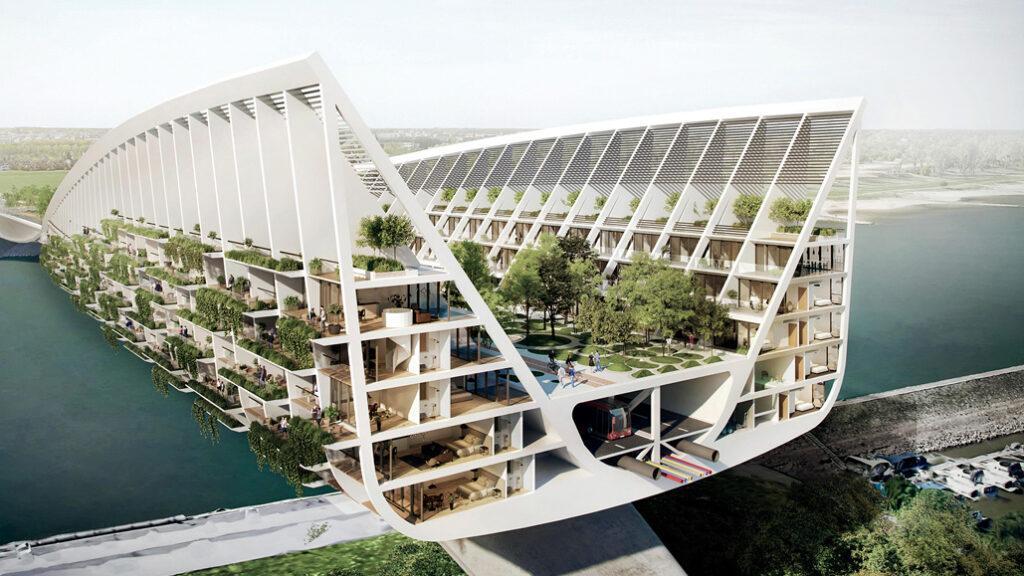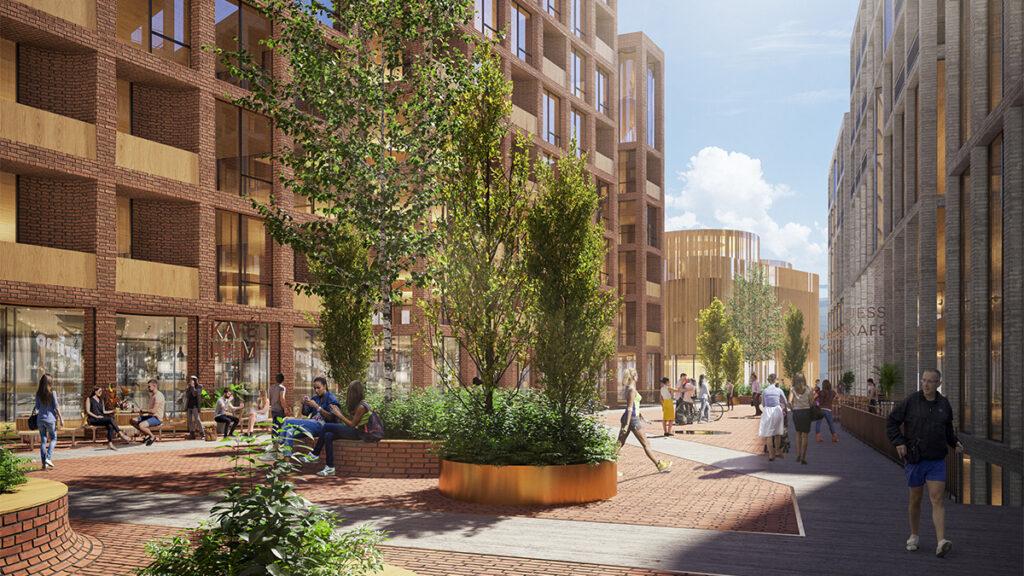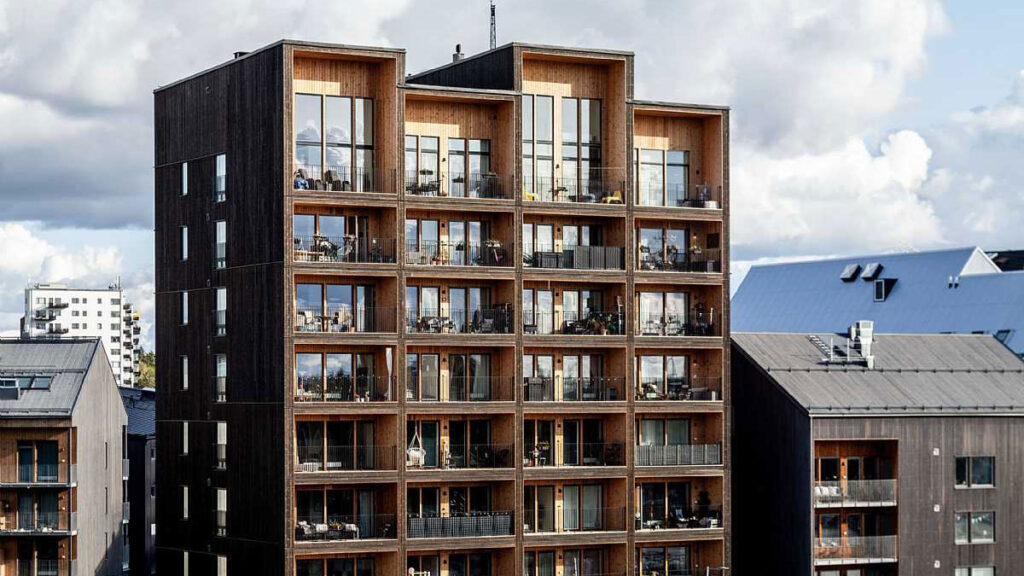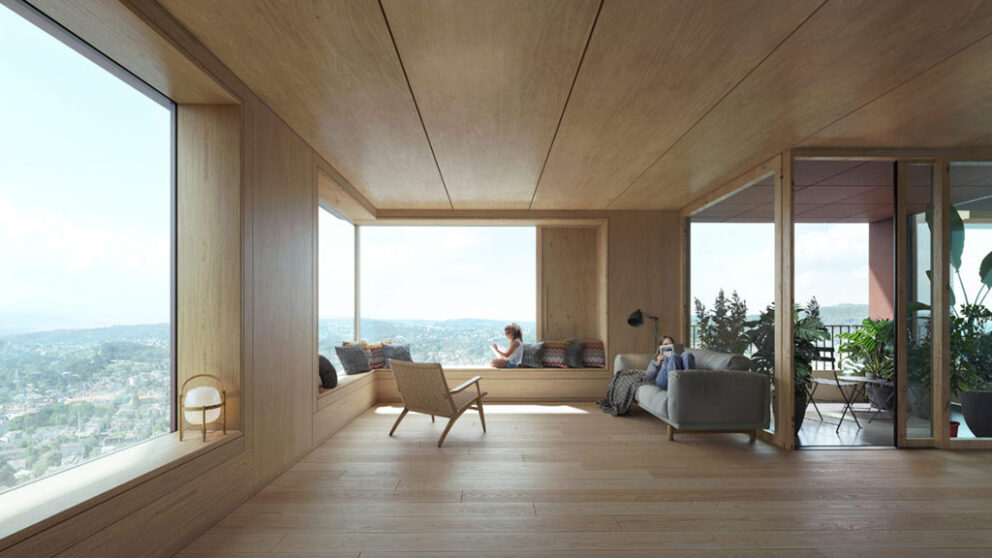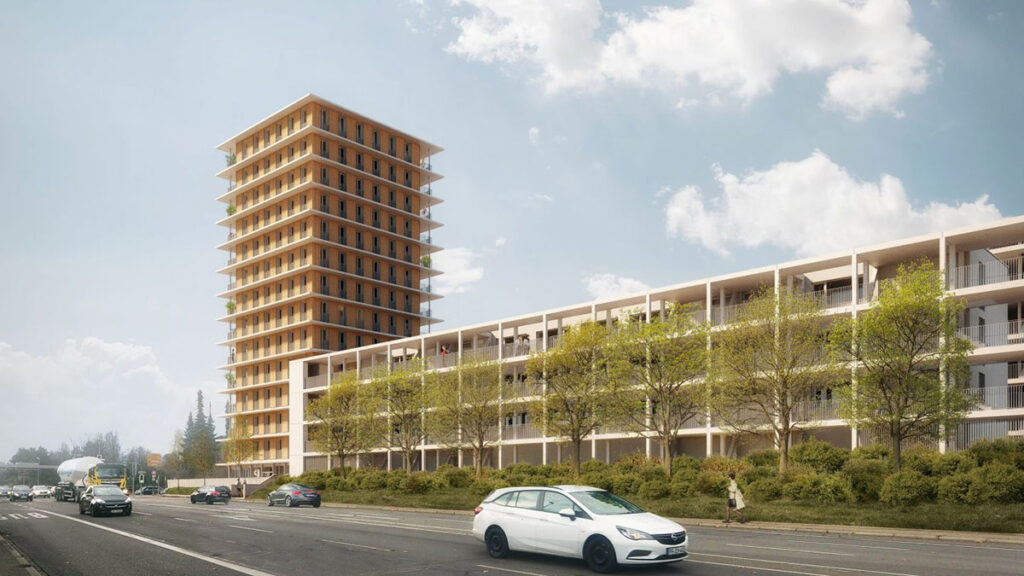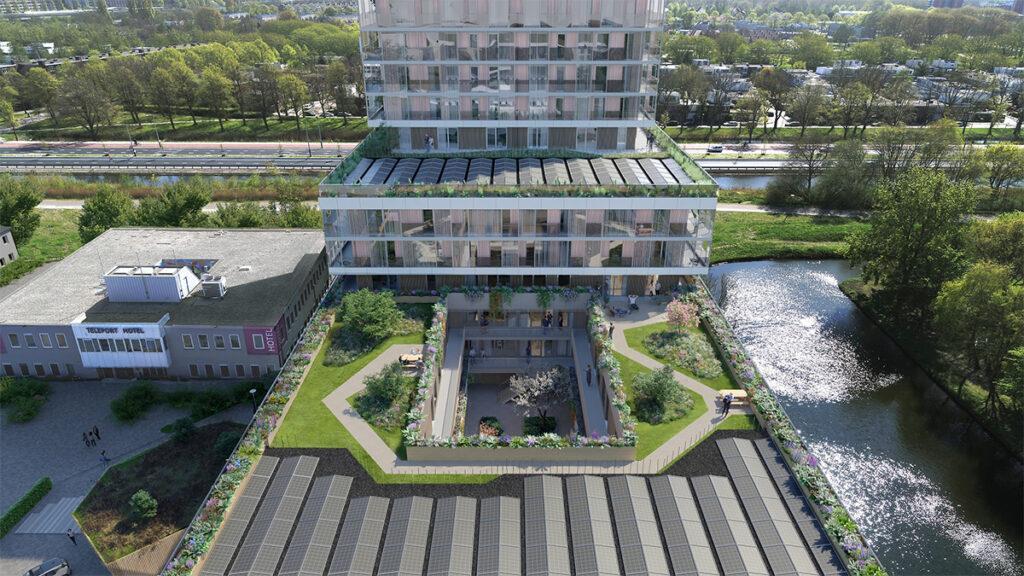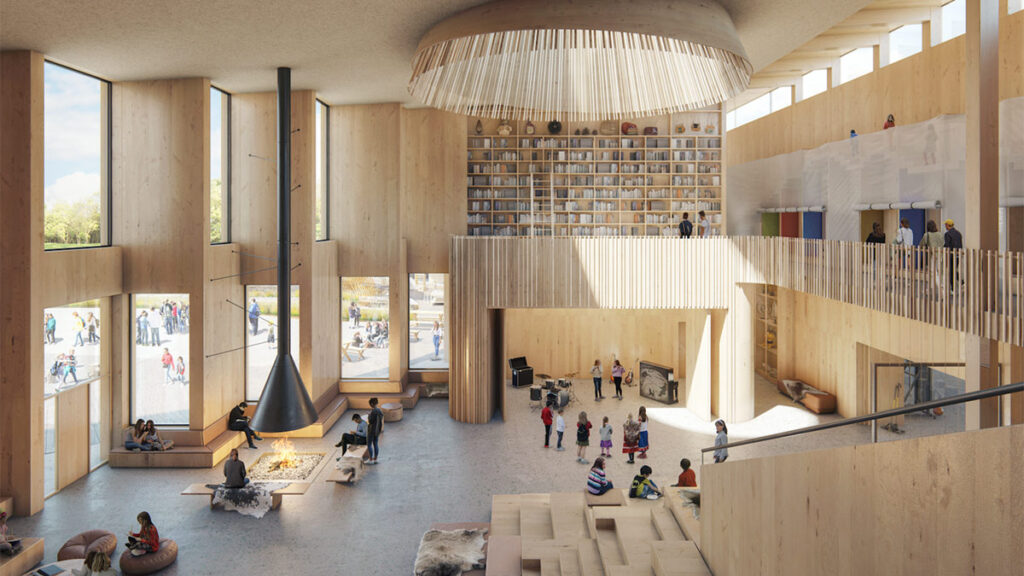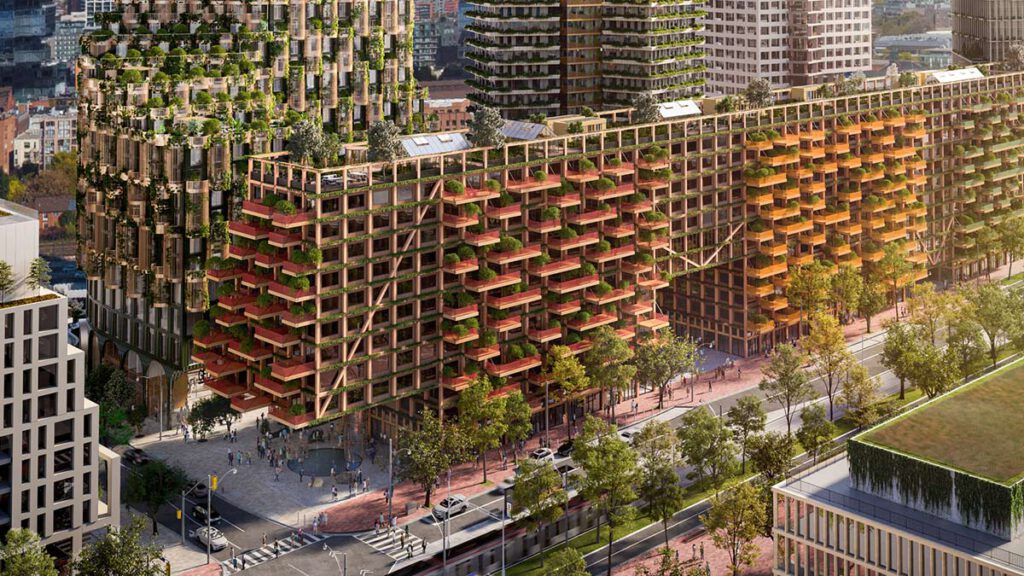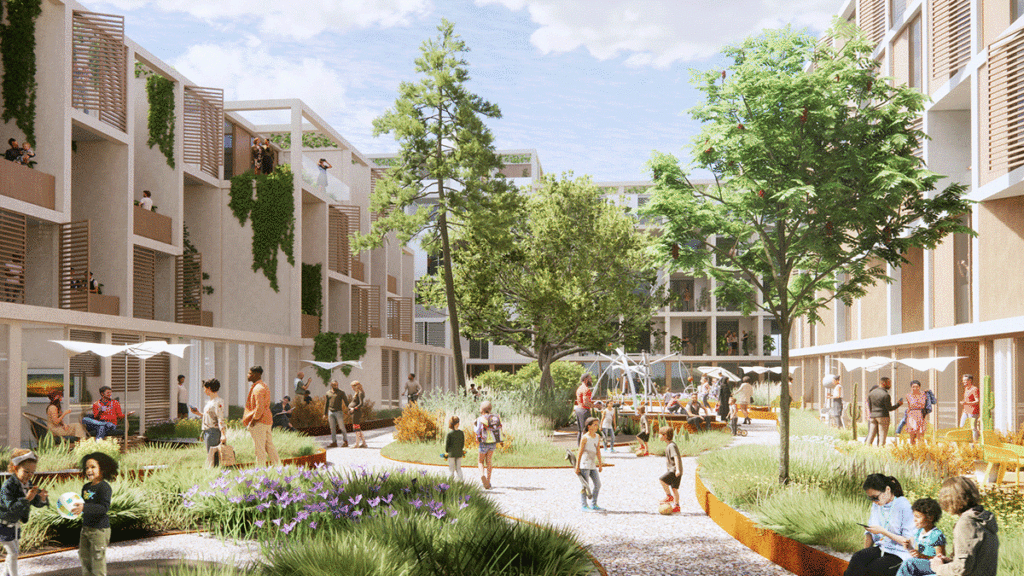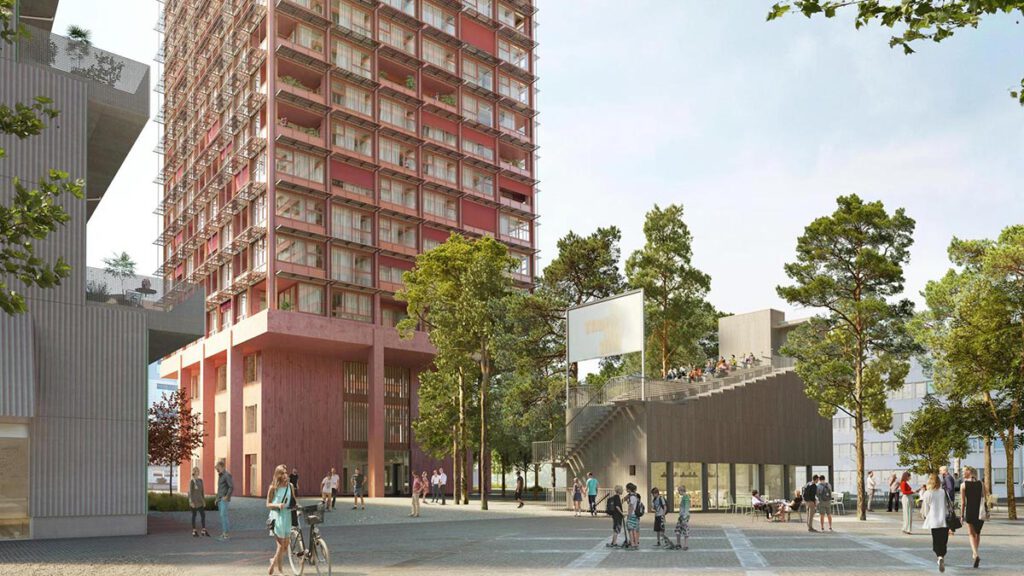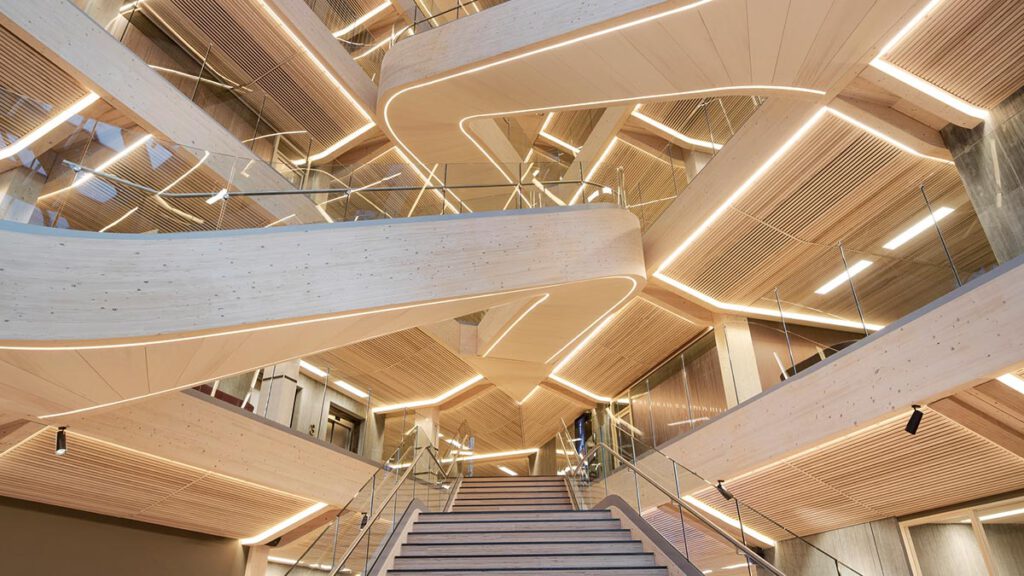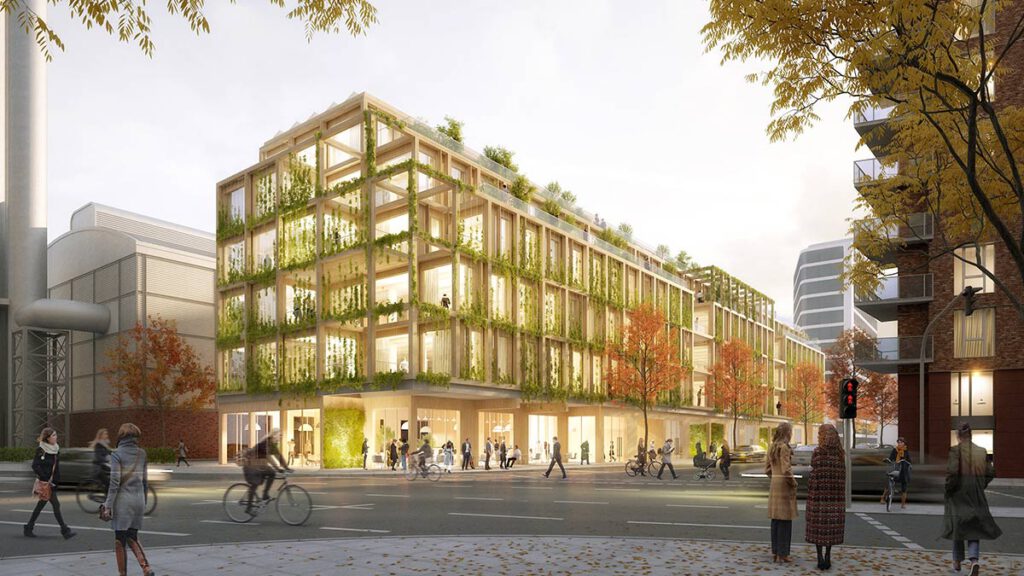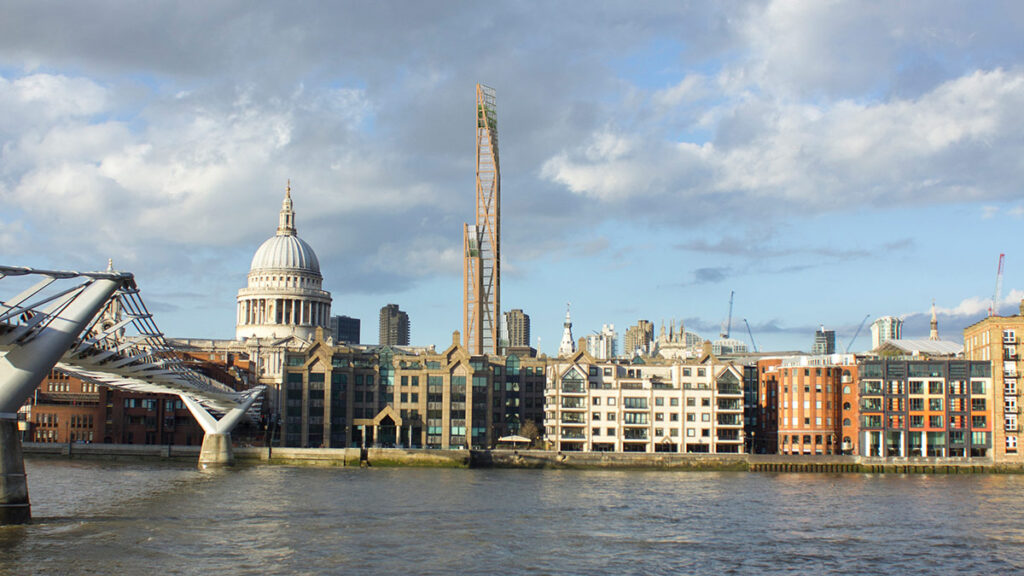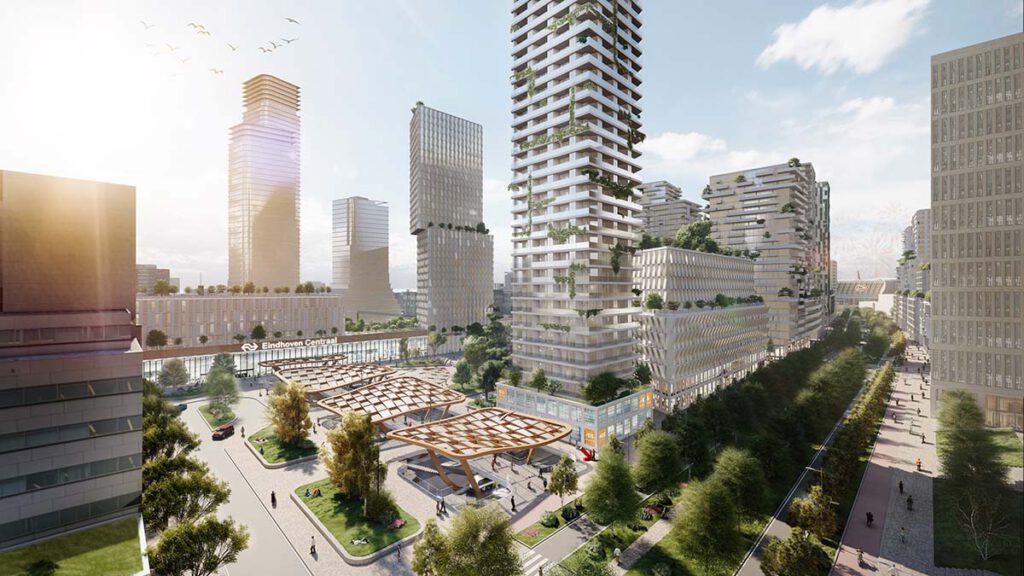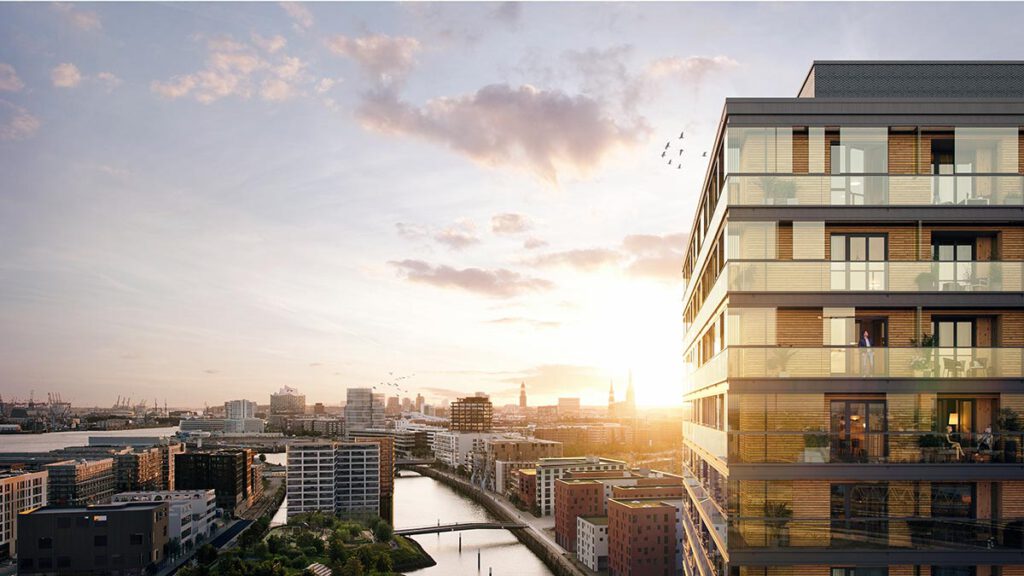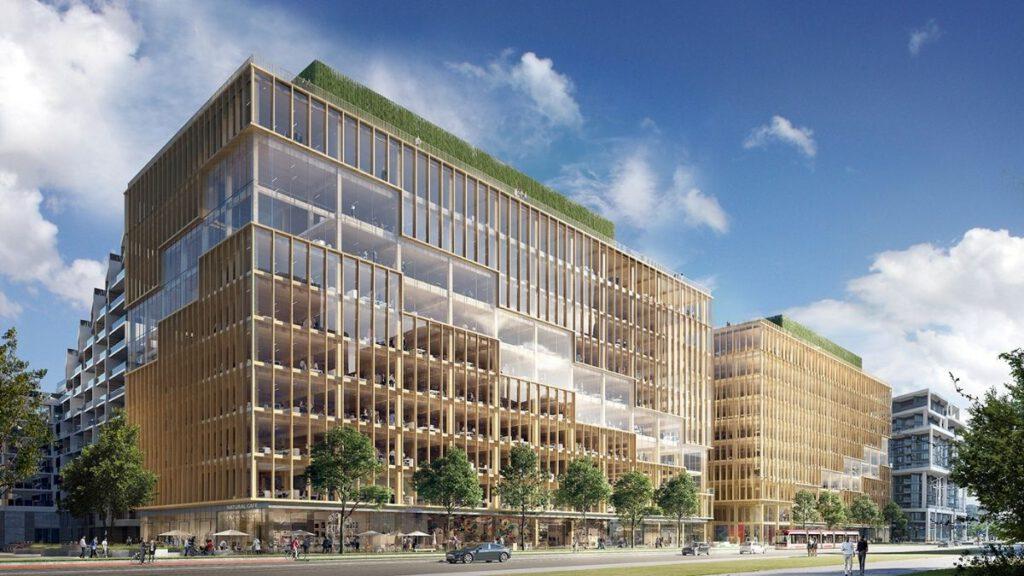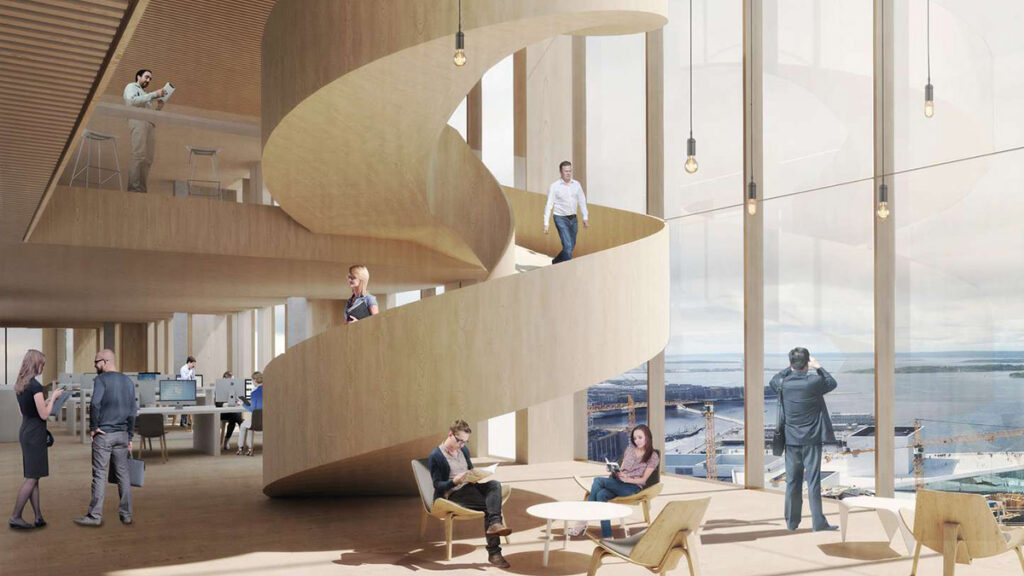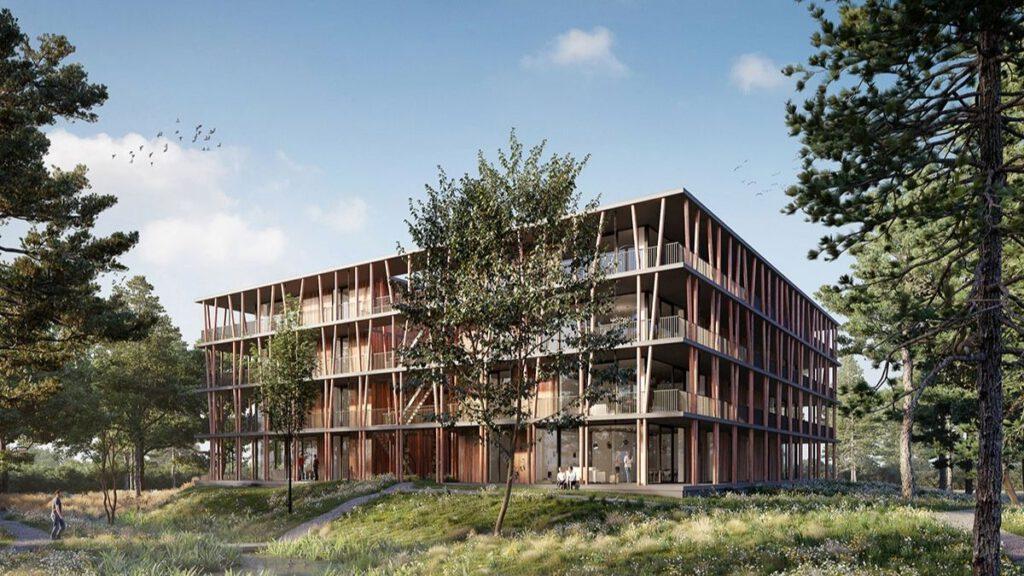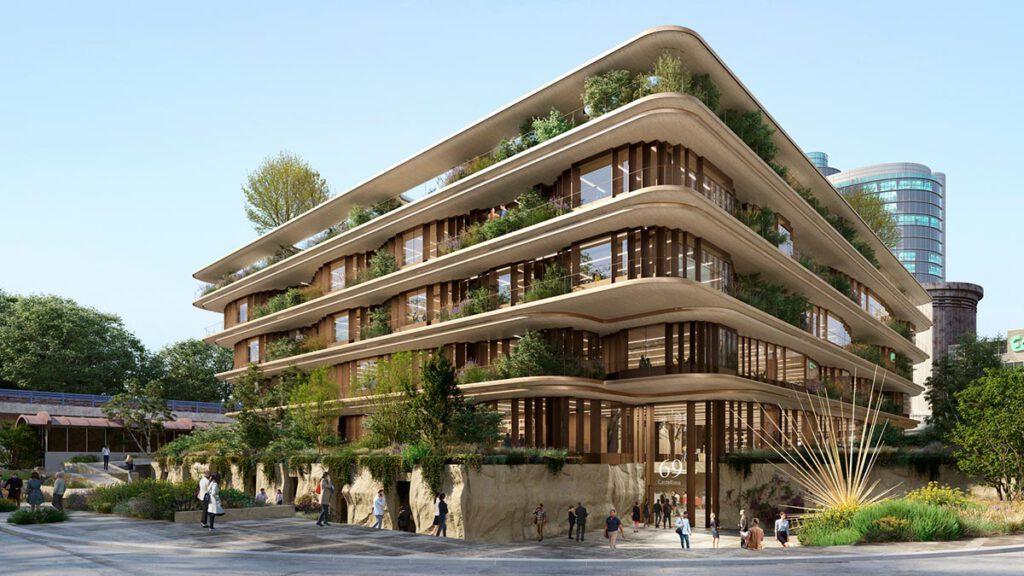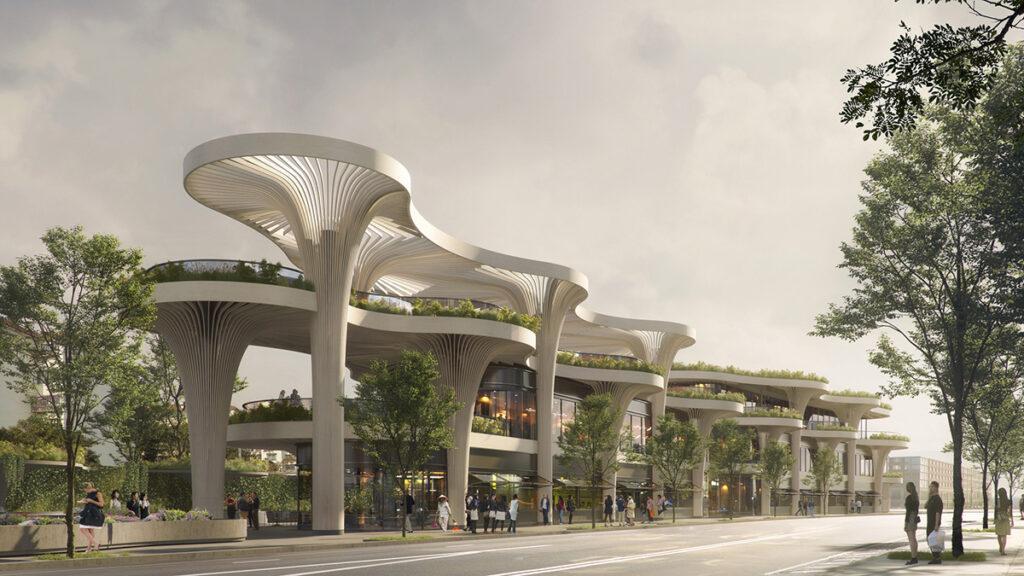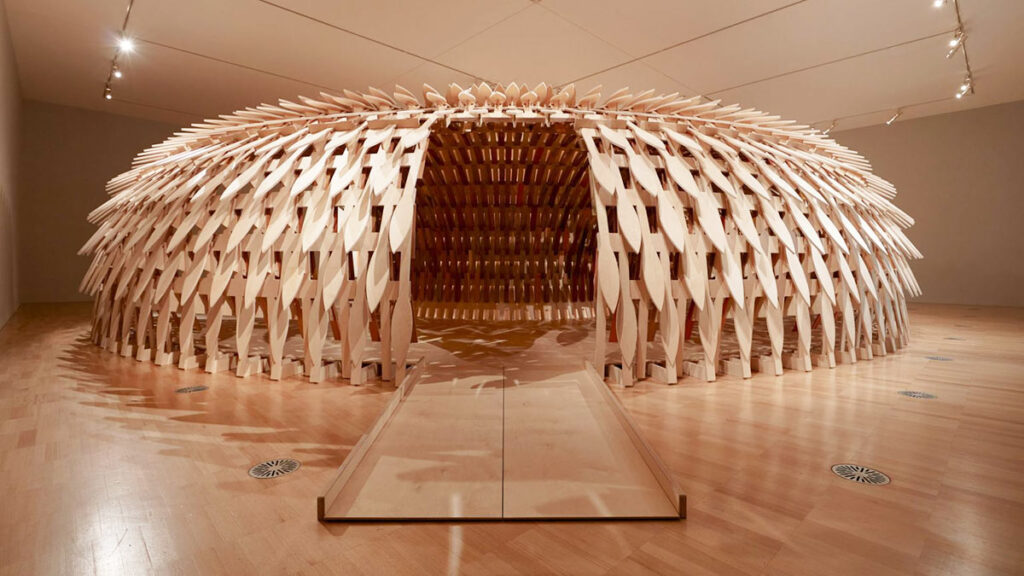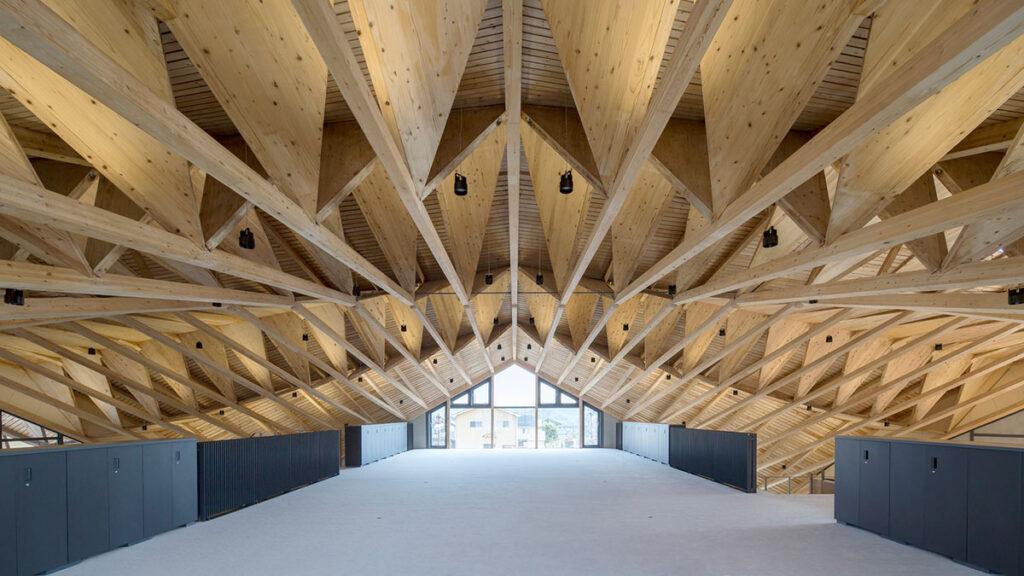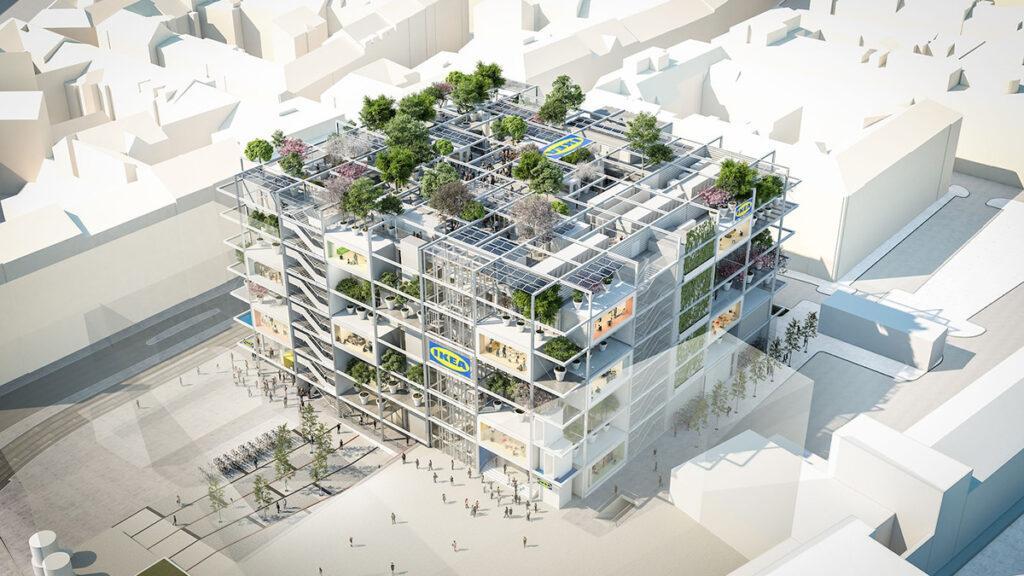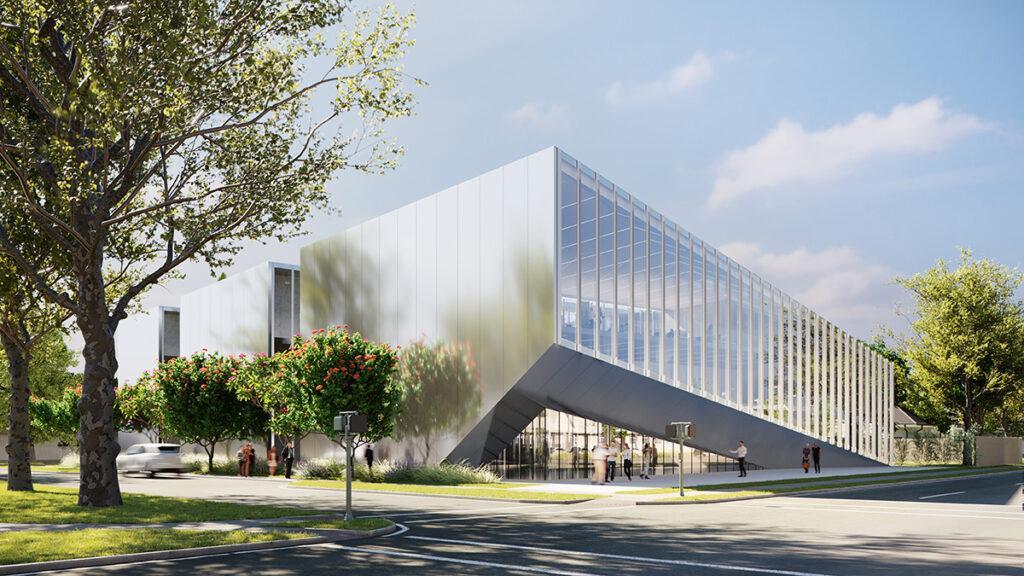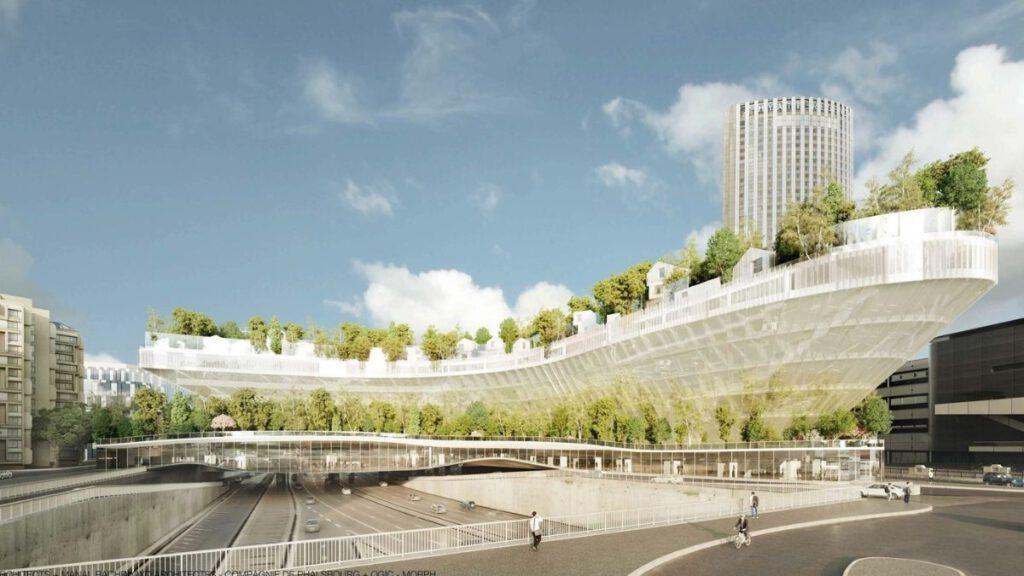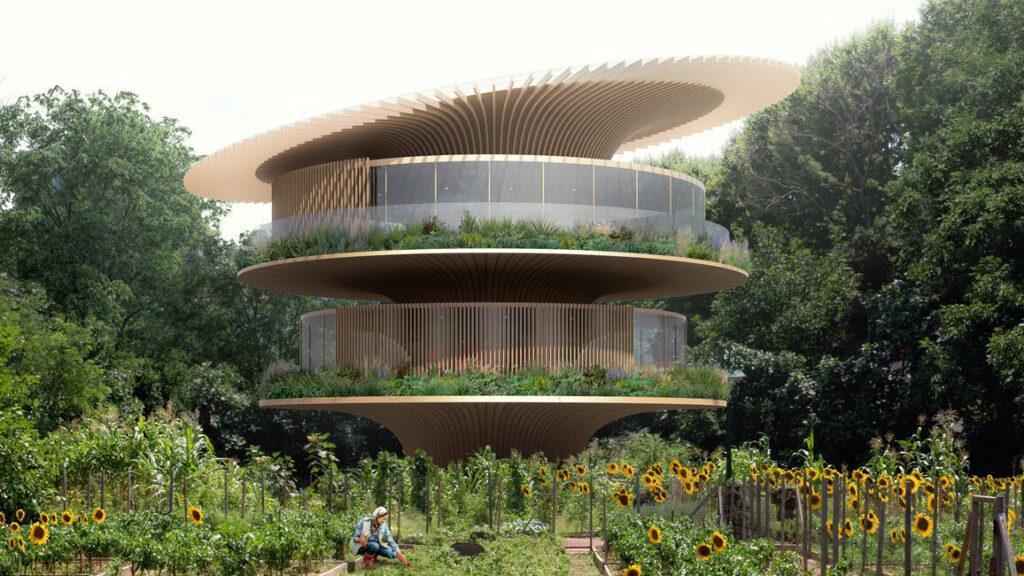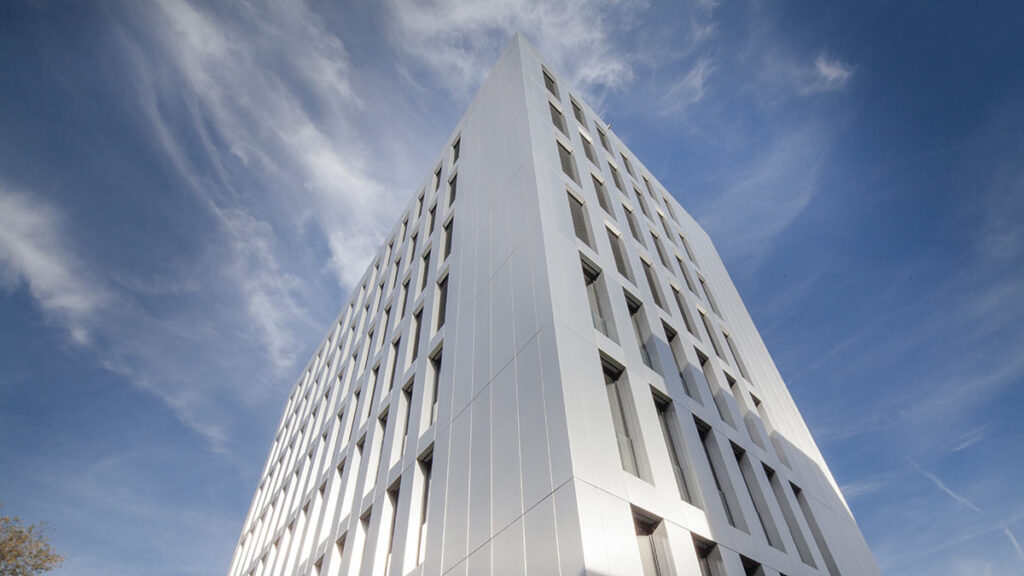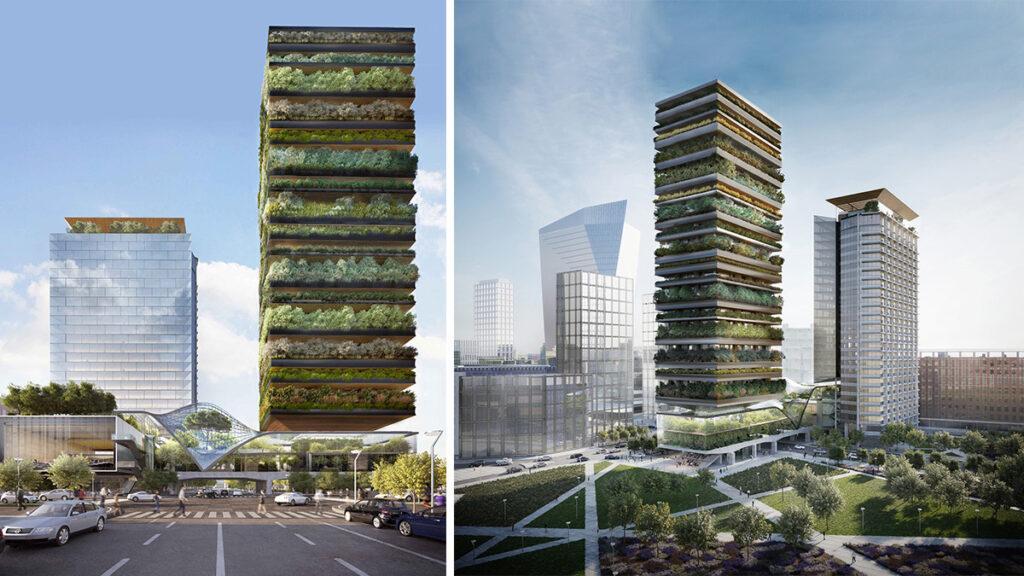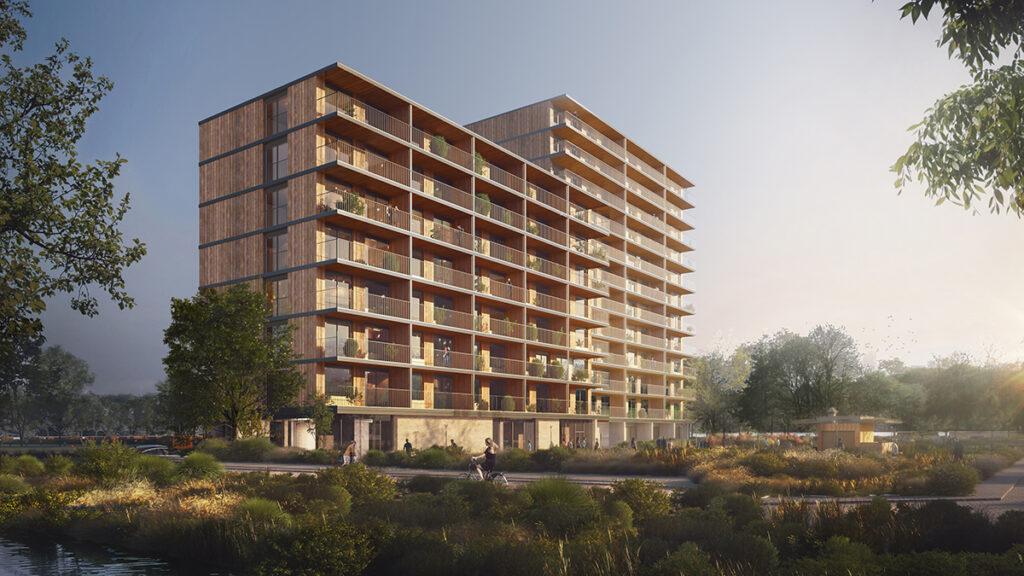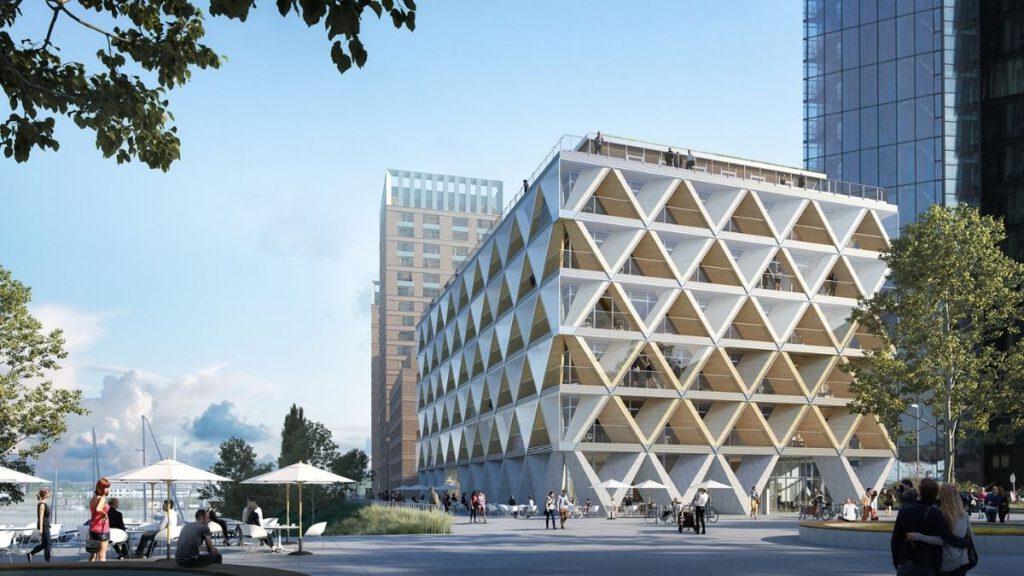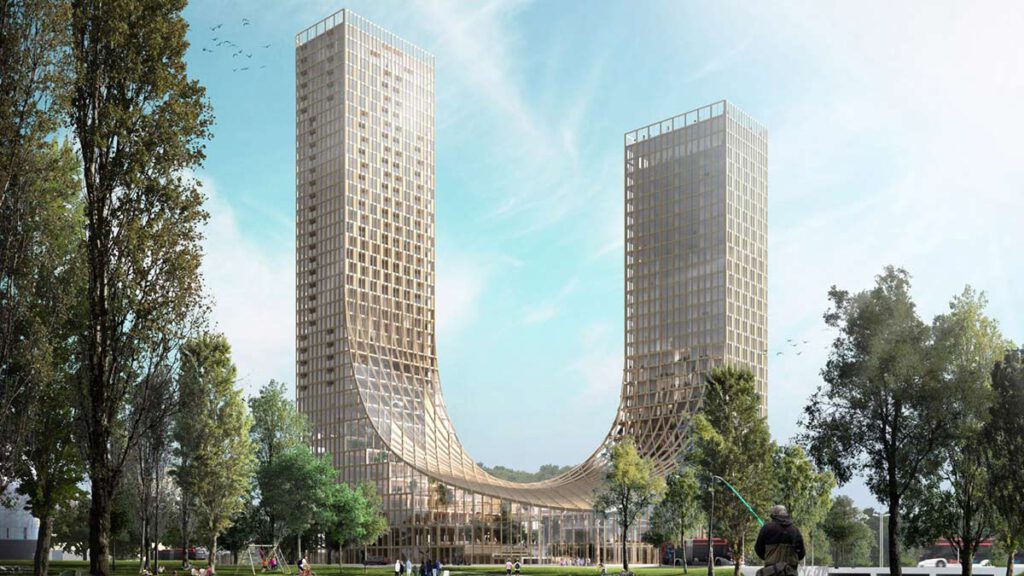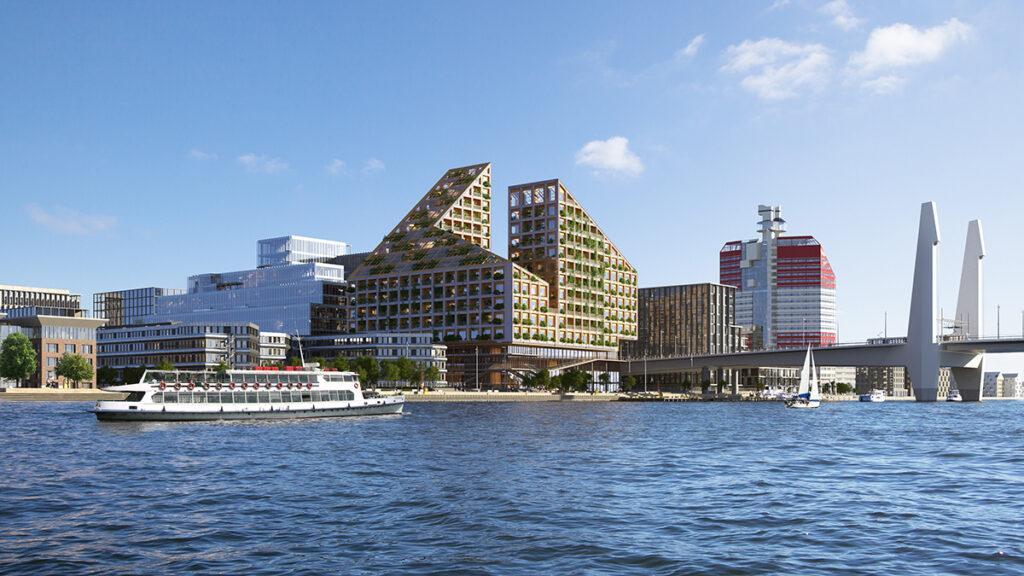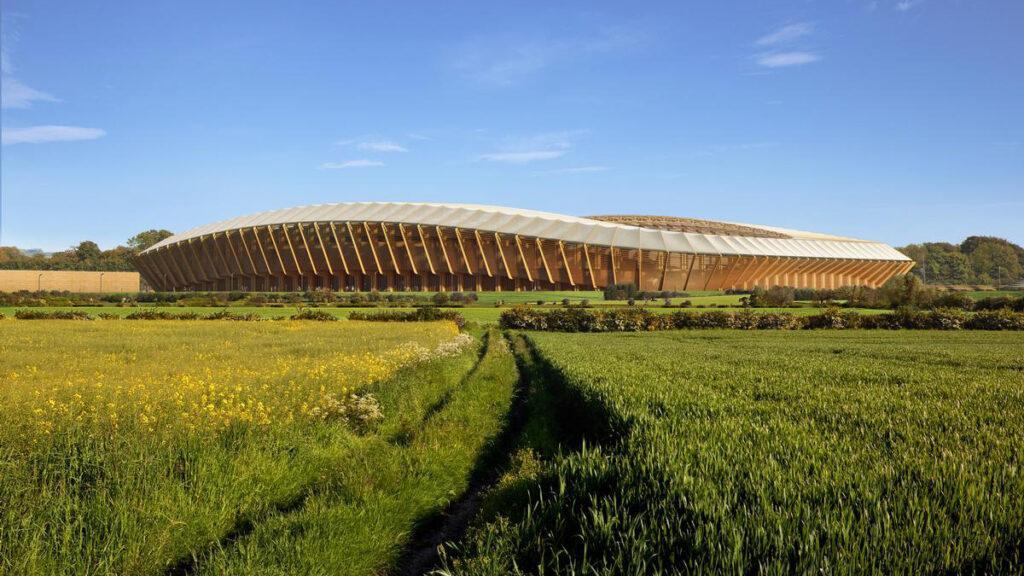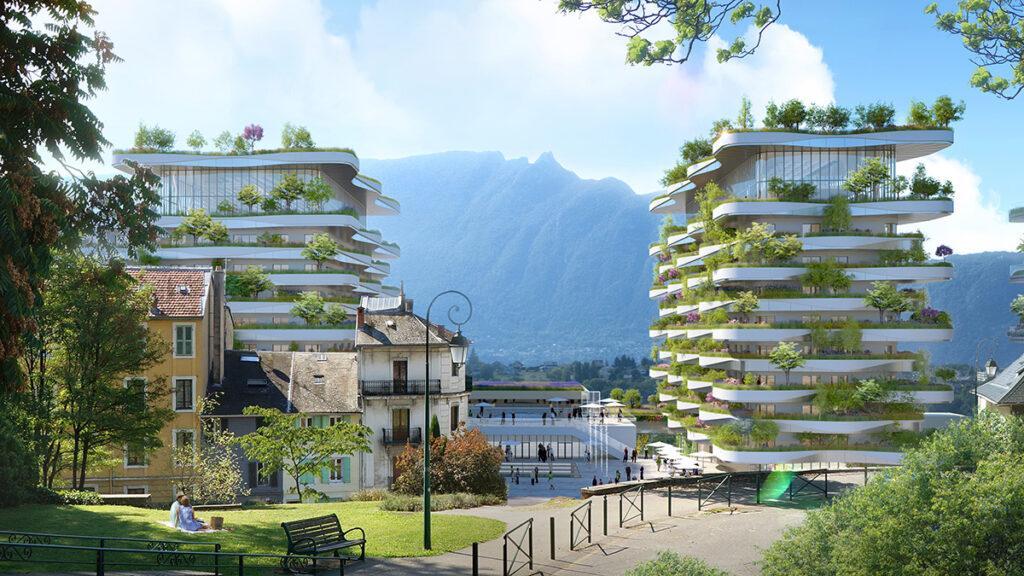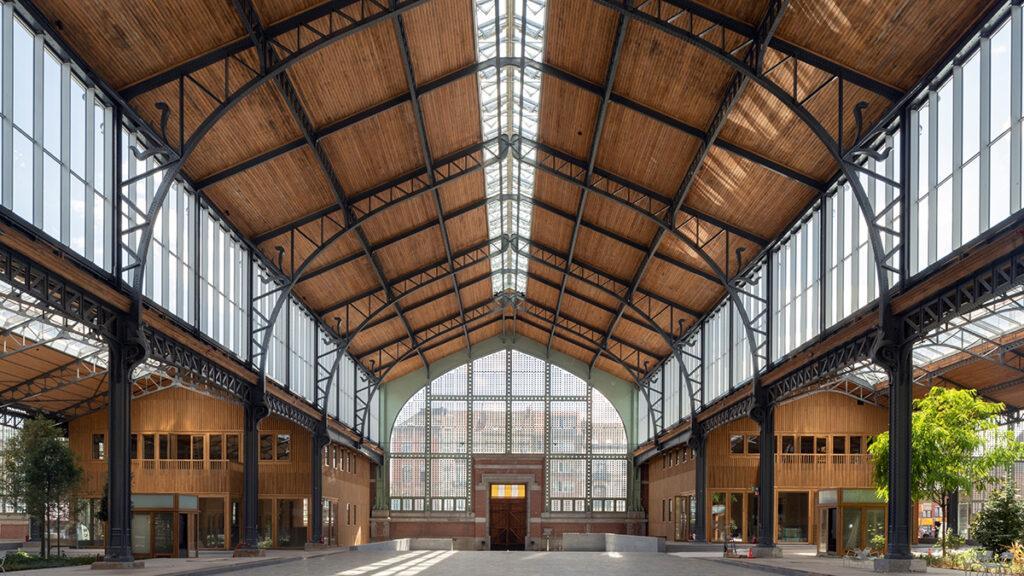
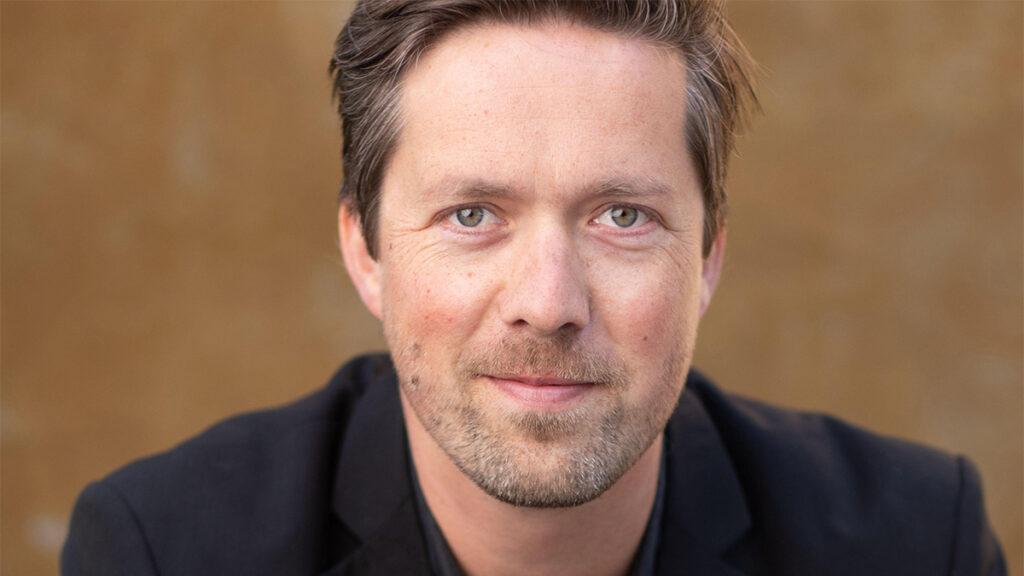
“Climate change changes everything”
Sustainability is a top priority for the Powerhouse Company. In an interview, partner Stefan Prins explains why this means more than just a careful choice of materials and energy efficiency, and how essential it is to consider all the changes brought about by climate change when building.
It’s quite something when a young team of architects earns a reputation as one of the most innovative in the world within just a few years. This is what happened with Powerhouse Company, an office that started out in 2005 “on kitchen tables” in Rotterdam and Copenhagen. These creative Dutch professionals have long since been operating from studios in Beijing, Oslo and Munich as well. And they have expert status when it comes to sustainability. Projects such as their timber floating office and their wooded urban district “HOLT” have received international acclaim. The same applies to their timber residential building “Valckensteyn”, which makes sustainable family housing affordable for smaller budgets.
Architecture for people and the environment
Architect Stefan Prins from the award-winning firm’s management team explains why it is essential to keep all the effects of climate change in mind when designing and building. And the Powerhouse Company partner describes what it takes to create buildings that promise a bright future for both people and the environment.
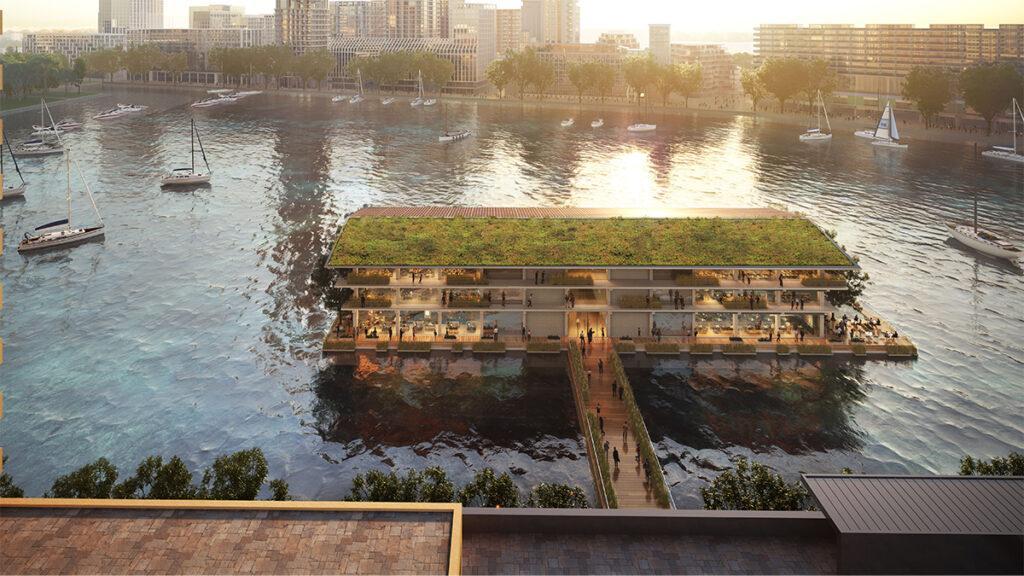
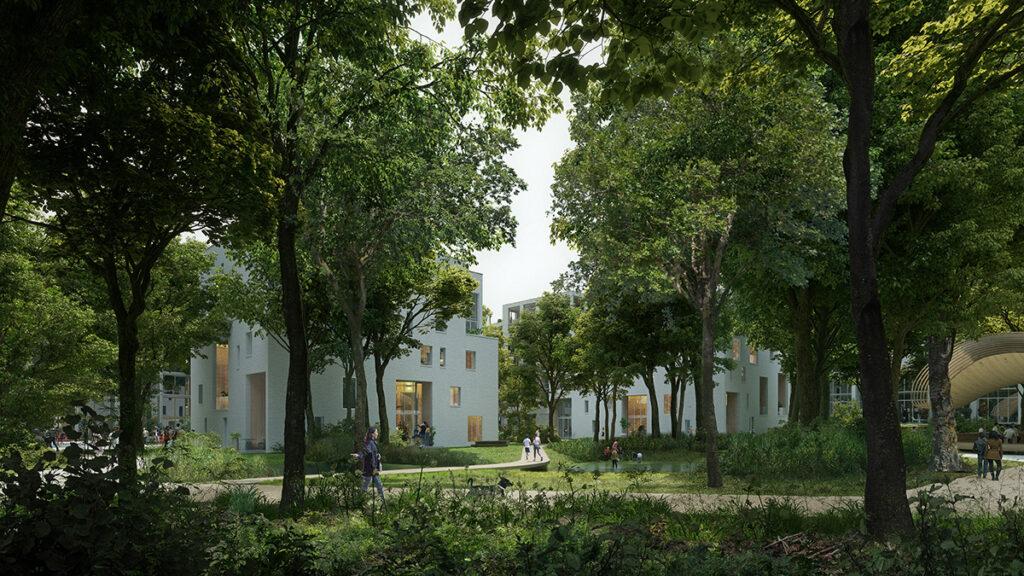
The Powerhouse Company is known for its innovative liveable, environmentally friendly projects. What are the top priorities when planning such new buildings?
Stefan Prins: We consider sustainability to be firmly integrated into our design process. It always plays a role. There are also different options for different requirements – development and innovation find each other. When we talk about top priorities, it’s always a kind of momentum. We check what innovations are available at the moment, what we can use in each case, and combine them in the best possible way. The important thing is that the project works as a whole. It has to result in a good answer to the requirements of the customer and the users.
What does that mean for the design work?
For example, if it’s about a residential tower in the city, you usually end up with a concrete structure. But you can give it more flexibility and comfort, for example by creating higher rooms and as few structural walls as possible. A university building, on the other hand, like the one we are currently designing for the Dutch city of Tilburg, can be made entirely of wood.
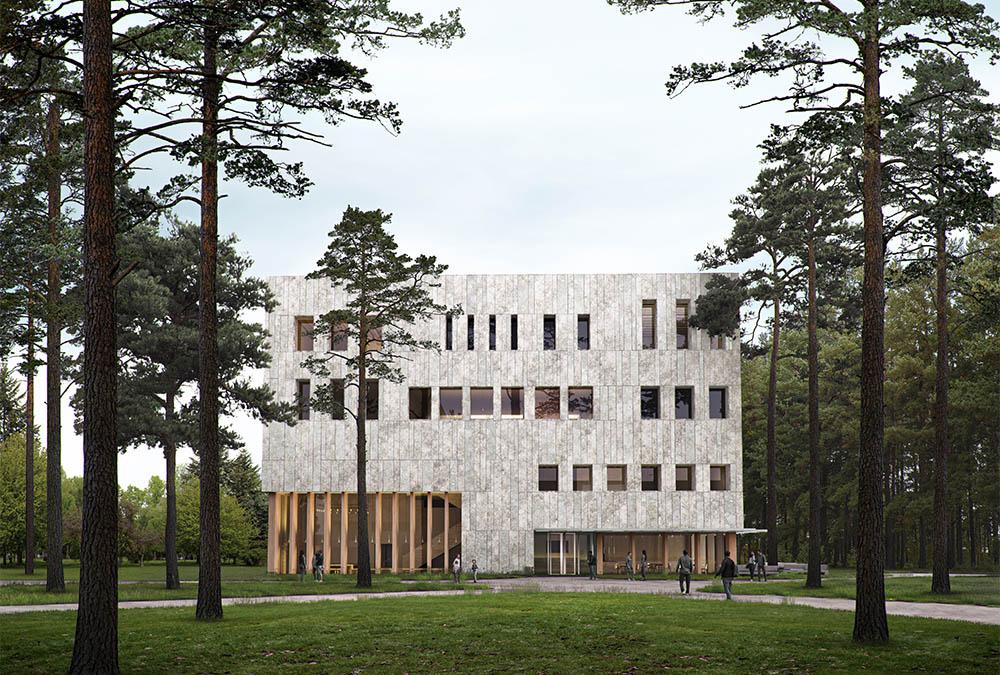
Modern apartments in sustainable new buildings tend to be rather expensive. However, the “Valckensteyn” timber complex in Pendrecht created by your office makes them affordable for families on a smaller budget as well …
The customer was a housing association that wanted an innovative pilot project made of wood. The location was well suited to this. We were given the chance to design a building with 82 apartments in wood and did everything we could to make the best possible use of the available resources. After all, a housing association has a different budget than a commercial developer, for instance, who then offers the apartments for sale.
So how was it possible to realize the project?
We developed a very simple structure with many repeated elements. One that optimizes costs, but also works as a design. With a lot of small solutions. Steel plates on the balconies, for example, give a special look and at the same time solve the problem that wood needs to be protected against moisture from the rain.
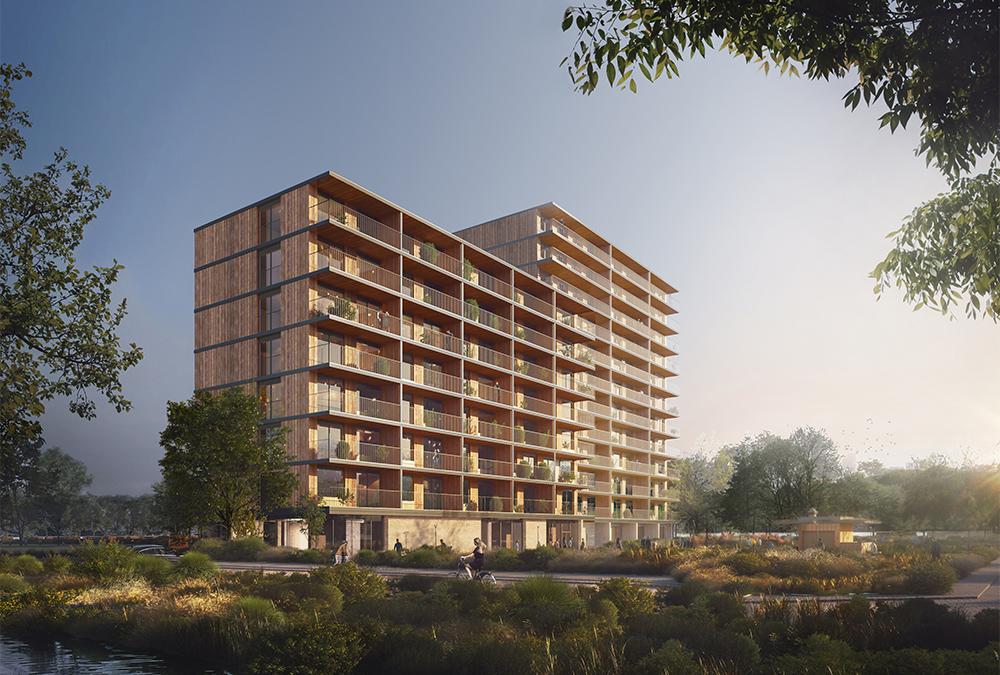
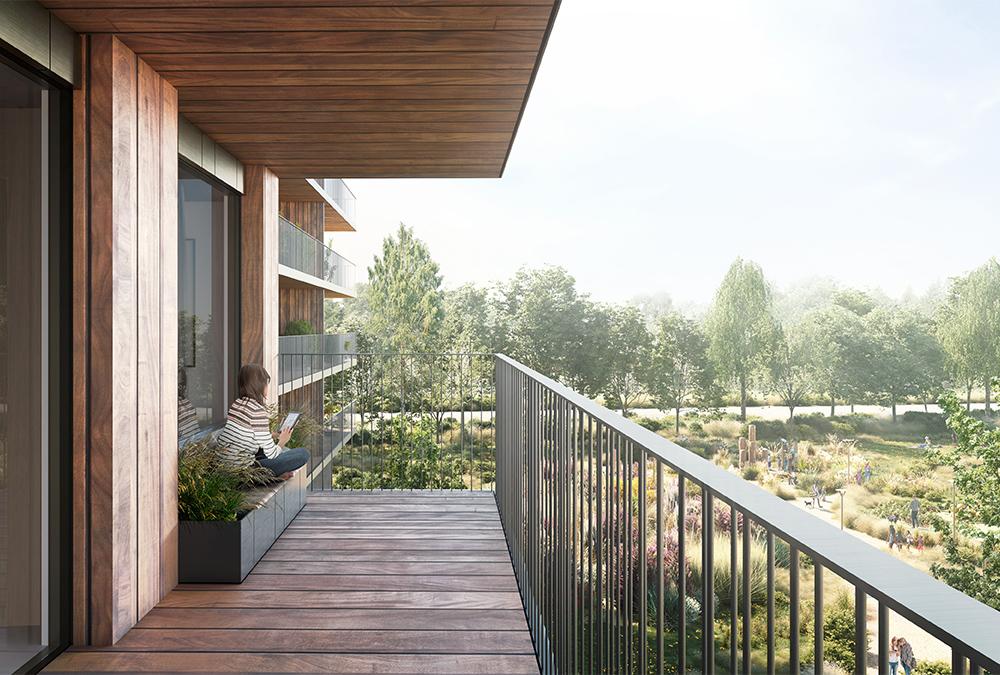
For some time now, everybody has been talking about sustainability. But is enough really being done?
The dilemma is that unfortunately there is also misuse in this area and some things are in danger of going wrong. Demand is high in the Netherlands as well. There are countless factories offering automated housing, which they publicize as sustainable. In a way, this type of prefabrication can actually be called sustainable. But it is extremely repetitive. We saw this in the 1990s: suddenly we had these neighbourhoods everywhere with the same type of house dominating the picture. Like an urban setup with a dry facade in front and a garden behind it. Neighbourhoods where everything looks the same – and today they are unpopular. Our big concern is that the current huge demand for housing and sustainability will have similar consequences.
How could this be prevented?
We naturally have to solve the housing problem. But in an intelligent way. In a way that we won’t regret in ten or 20 years. We have to think seriously about the context of comfortable living. Flexibility is an important aspect here. So is sustainability. Everyone talks about conserving resources and using natural materials. But what is often forgotten is the reason that makes all this so important: climate change. And in many areas it is bringing its own changes as well, albeit slowly, in many areas that should not be overlooked.
Everyone talks about conserving resources and using natural materials. But what is often forgotten is the reason that makes all this so important: climate change, which is bringing its own changes in many areas that should not be overlooked.
Stefan Prins, architect and Powerhouse Company partner
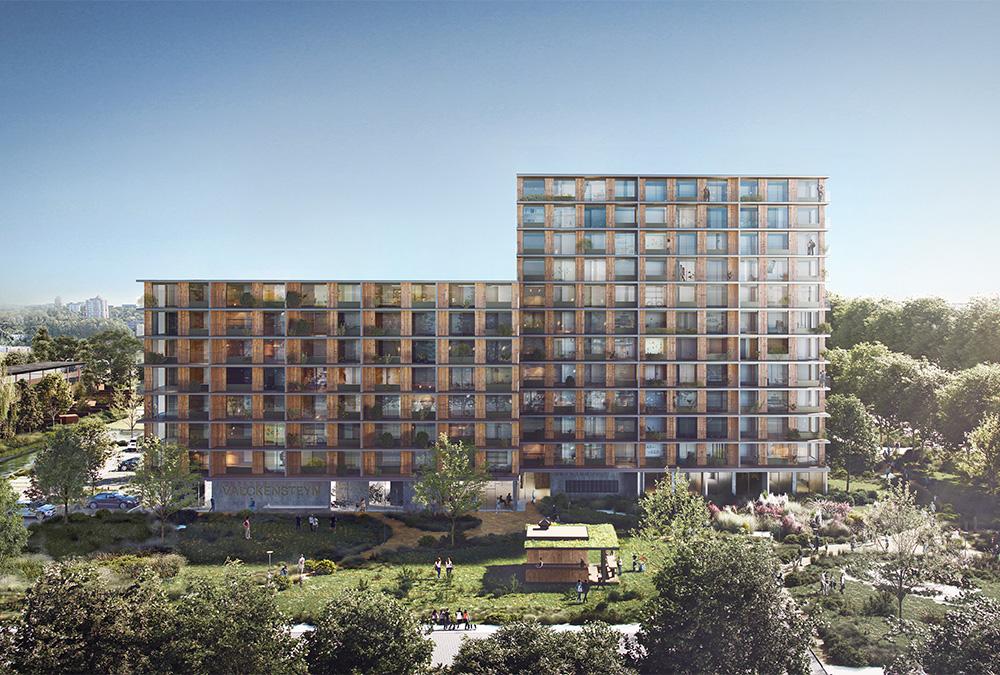
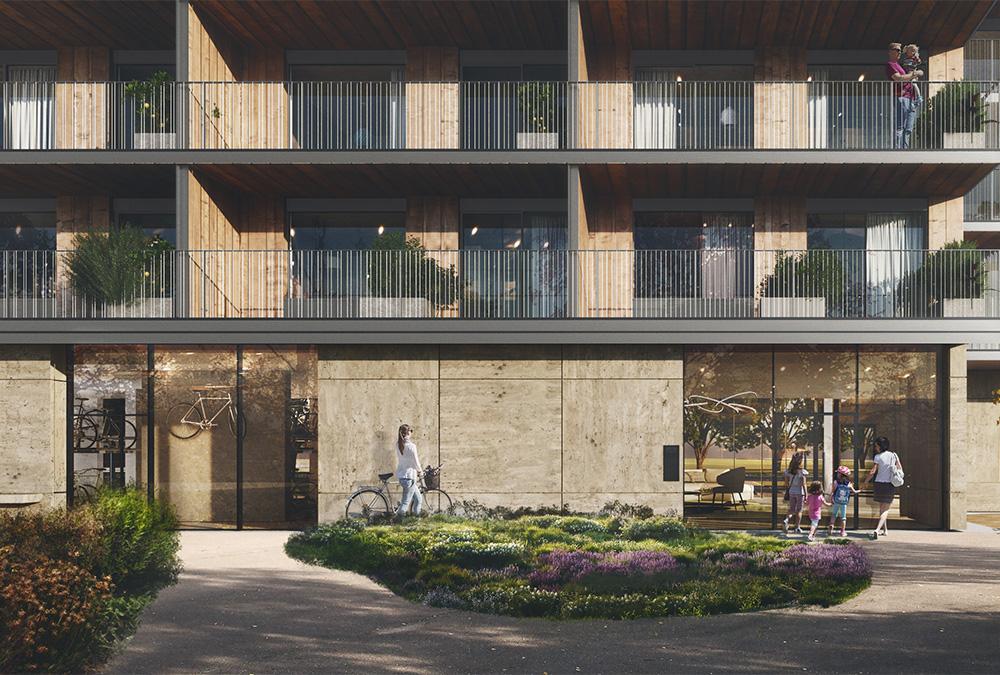
So what are the consequences of climate change that are being overlooked?
If you tell someone that we will soon have a climate like Bordeaux in the Netherlands, it is a real eye-opener. Take our “HOLT” project in Groningen, for example: climate change will increase the temperature by one and a half degrees within the next ten years. So we have to be prepared for climatic conditions like those currently experienced in central France. Houses there are built completely differently than they are here, though. Understanding the consequences of this development was a main starting point of our design.
How did this affect the “HOLT” project?
We had to consider that in ten years, people in Groningen will probably no longer want a south-facing balcony because it will simply be too hot for that. People will crave outdoor areas in the shade or with shading. This turns everything upside down, because in our part of the world we have so far learned to always orient outdoor areas towards the south or west. We need new solutions and we need to adapt. So this urban neighbourhood is getting its own new forest. And the existing mature trees on the southeast side already protect against heat.
So trees are more or less a guarantee of future living quality?
Yes. If they lose their leaves in the winter, the apartments get plenty of light. In the summer, the foliage provides pleasant shade. Somehow the incredible efficiency of trees has been forgotten. Sitting in the shade of a tree is ten times more efficient than air conditioning. We’re trying to incorporate these qualities into our project. I also think it’s nice to live in a house that changes with the seasons.
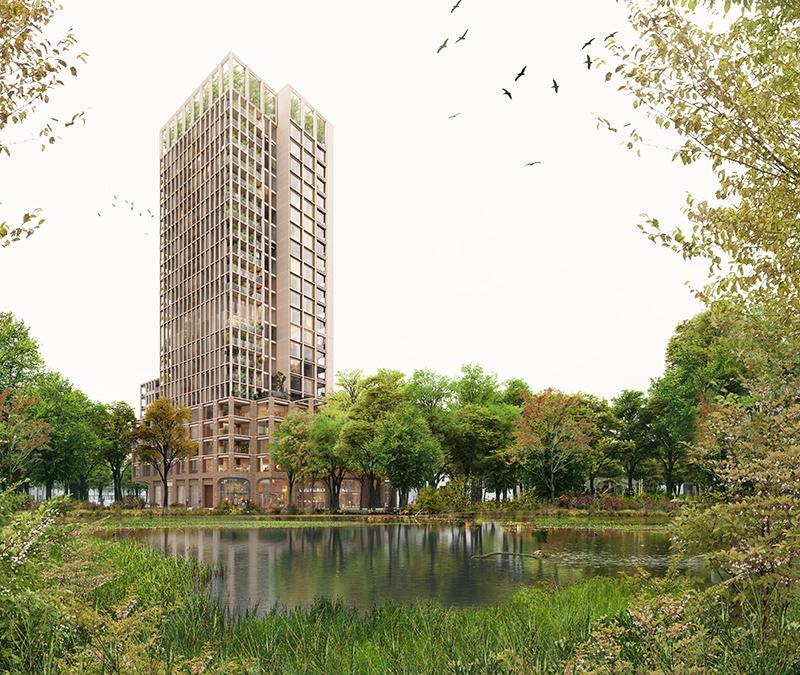
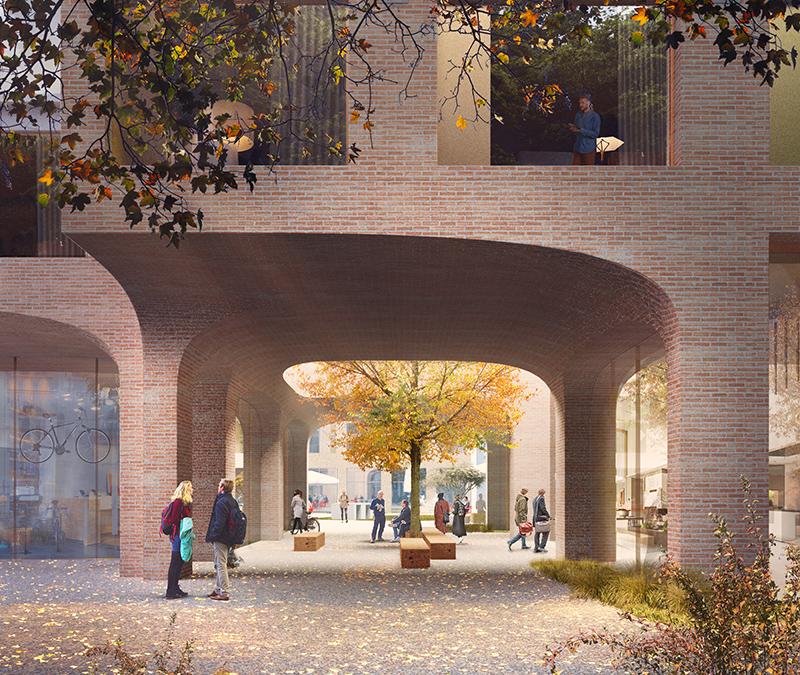
Has it become easier to build sustainably in recent years?
I think so. Because there is a common understanding among customers, architects and contractors about certain solutions.
And is it cheaper now, too?
I don’t know… In some ways, installation costs have increased. But in the long run, the solutions we’re putting into a building now reduce energy costs considerably. So if you look at the construction price, sometimes it’s actually significantly more expensive. But if you consider the usage over 20 to 30 years, it becomes a profitable investment.
If you build for the end user, it is usually easier to implement more sustainable solutions. After all, end users know that they themselves will benefit. Other developers sometimes prioritize differently, preferring to reduce the cost of the building and accept lower energy efficiency. When our office works with developers, we try to add value to the project. For example, so that the solutions used make it easier to sell the building to an investor. There are many ways to help the client.
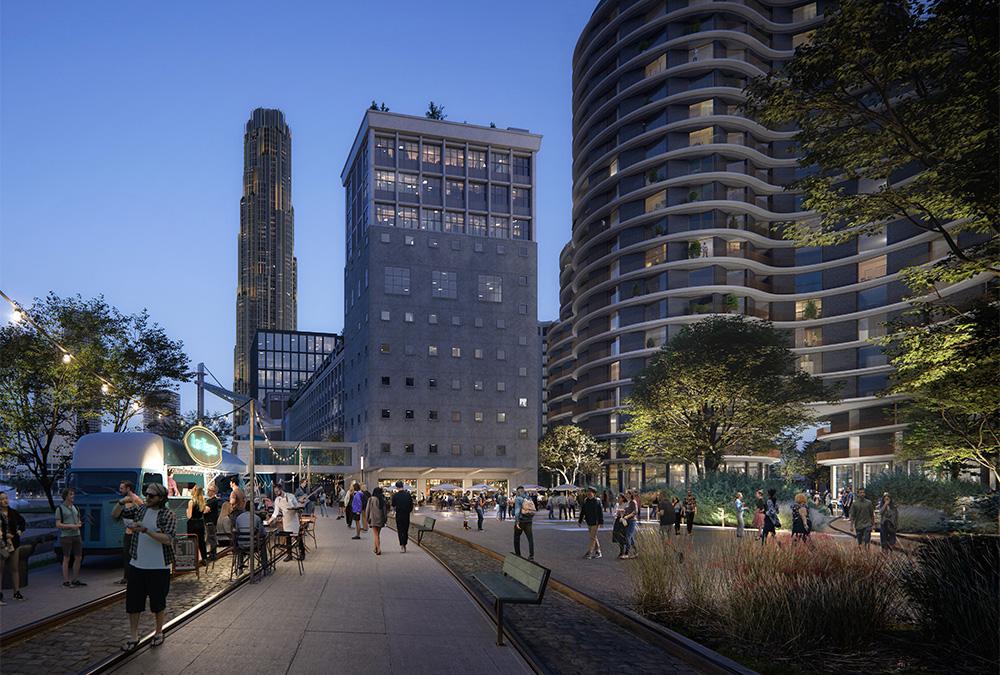
You have already been your own “customer” as well: the energy self-sufficient timber house you built for your family is in line with the dream of sustainable living that many people have today…
It’s also a really beautiful place. We feel blessed to live here. It’s in the city of Rotterdam, on a former hockey field. On an area that had been abandoned. We sketched ideas on a small sheet of paper and were lucky enough to get a plot of land there. By prefabricating according to our plans, we were able to build the house in a few months. Everything works purely electrically. We don’t use gas. Solar panels generate energy. And we did a lot of the interior work ourselves.
What were the crucial elements for the design of the house?
The main idea was the large glass front. It’s a building based on daylight and sunlight. In summer we want to keep the sun outside. But in winter, it falls nicely into the kitchen and dining area, and warms the house. Our goal was also to use the passive energy of each season and create a comfortable home.
Would it have been cheaper to build with conventional materials and techniques?
No, I don’t think so. The fact that I am an architect helped us to develop custom designs for some solutions. Simple solutions that result in simple but beautiful details. You could say the house looks luxurious, even though it was relatively cheap to build.
As a layman, you probably can’t create something like that without digging deep into your pockets, right?
It’s more difficult, of course. But designing and building your own home or buying one in a larger housing project is about the same price-wise. If you do your research well, it doesn’t have to be too expensive.
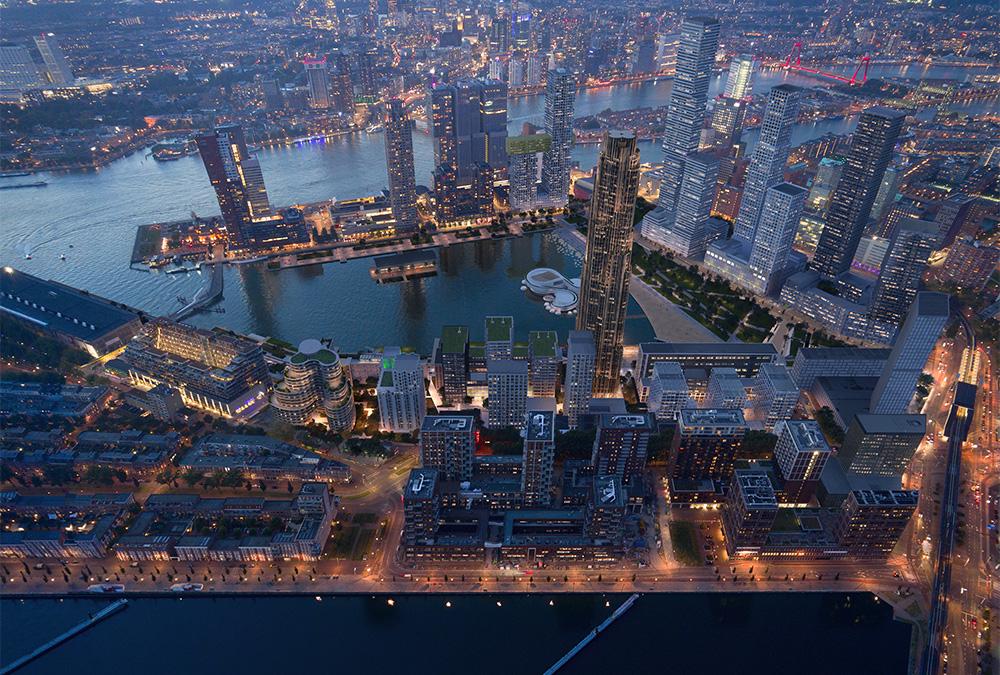
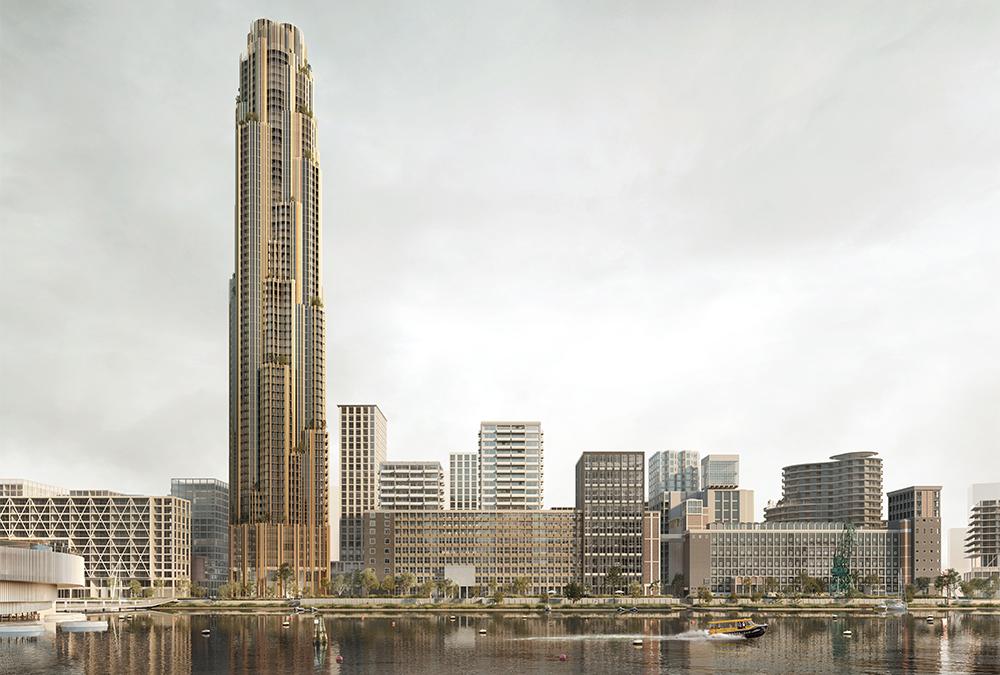
What makes “old” building materials like wood so interesting again today?
There have been important innovations with wood. Cross-laminated timber in particular has become competitive alongside steel and concrete. And, of course, CO2 pollution is reduced immensely when you use wood instead of concrete. You also never build a wooden building exactly the same way as a concrete one. At Powerhouse Company, we always strive to design something that fits the context.
And bricks?
Bricks offer many design possibilities. For example, we designed a contemporary building with a brick facade for downtown Groningen because it fits the historical context and the existing brick buildings there. I think this approach is also behind the many great new brick buildings you see now.
How do you and your team approach the design of new projects?
We talk to clients, define their main goals, and look for ideas and innovations that fit them. Then we strive to conceive a unique project from the client’s ideas, our design idea and the new solutions. It is all the nicer when this then turns out to be especially sustainable – like “HOLT”, for example – and has a positive impact on its surroundings as well.
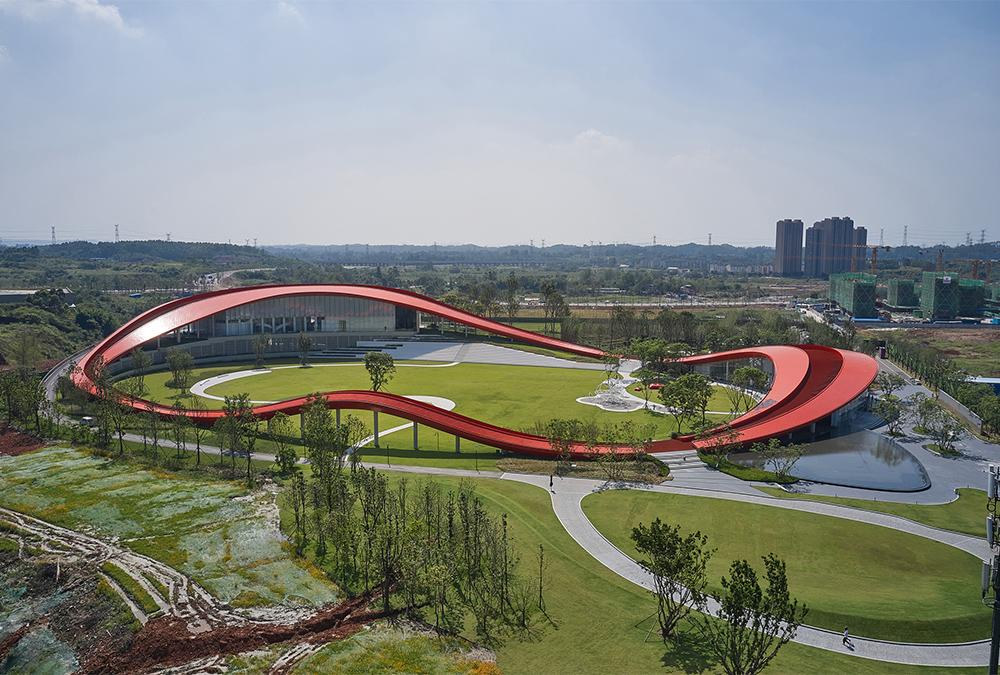
I assume that digitalization and building information modeling now make this process much easier?
Oh yes. I’m 39 now, I’ve been an architect with heart and soul for years, and I am incredibly fascinated by the ever new possibilities opened up by digitalization. You have to imagine it: 100 years ago, an architect’s office consisted of a large room with drafting tables where 100 people in white shirts and ties drew for a single project. Today, we’re almost 100 people working on 20 to 30 projects at the same time. And in the future, 20 people will do the work of 100…
How – and particularly with what means – do you use these new technologies?
At Powerhouse Company, we work with a lot of parametric design tools. Even in engineering. This has tremendous advantages. For example, in our “Loop of Wisdom” project in China, we were able to provide the manufacturer with 3D models to create thousands of uniquely curved elements. Through such interaction, we can make buildings even better. And it saves a lot of time, which is especially important for projects in China, where everything always has to go extremely fast.
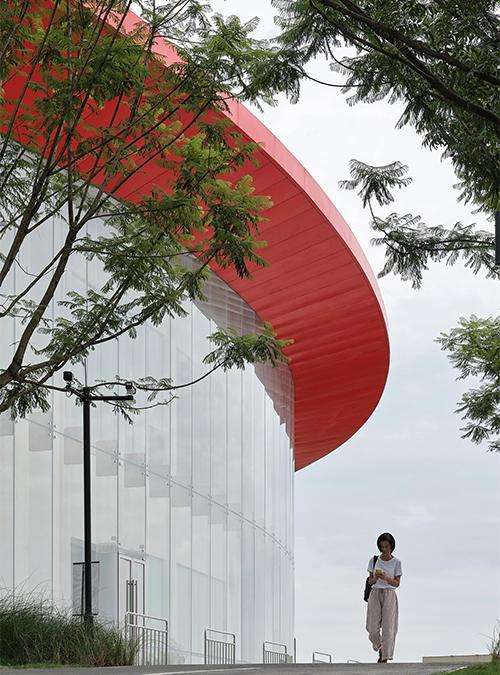
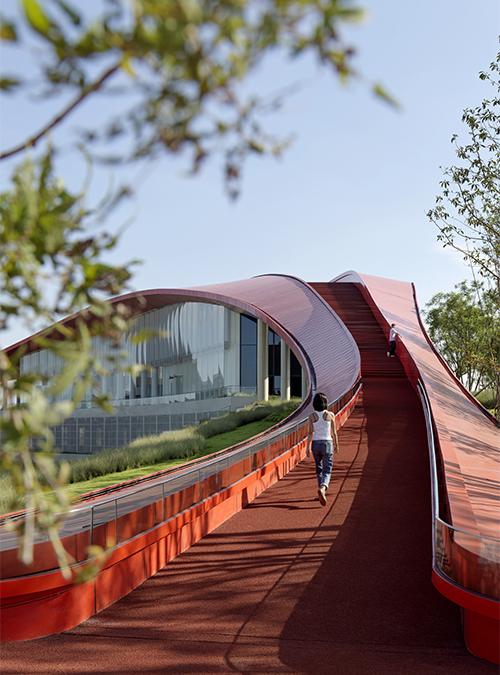
What should we pay particular attention to in contemporary housing?
The pandemic has greatly changed our needs in terms of housing and living space. I think flexibility now has to be an essential part of floor plan design. We strive to design in a way that makes it easy to convert rooms from working to living areas or to partition them flexibly. In larger projects, we plan for common spaces that ensure social interaction remains possible at all times. There are solutions that turn residential buildings into a kind of safe “social bubble”. The social aspect is an important part of modern architecture. After all, this pandemic might not be the last. We need to create places where people can come together and feel safe.
What should people-friendly, environmentally friendly, future-oriented housing look like overall?
I think people who have nothing to do with the construction industry are usually not that focused on sustainability. There are other needs in the foreground. Of course, designers, developers and builders should definitely create very sustainable solutions. But these should also be logical. People looking for a new home need to see quality.
So what actually convinces people who are looking for an apartment or house?
It’s not enough to hear that a building is sustainable. People also have to like the neighbourhood, the spaces and the design to want to live there. “HOLT”, for example, is a sustainable project. But when I show it to people, they don’t know that yet – and still they say they love it and would like to live there.
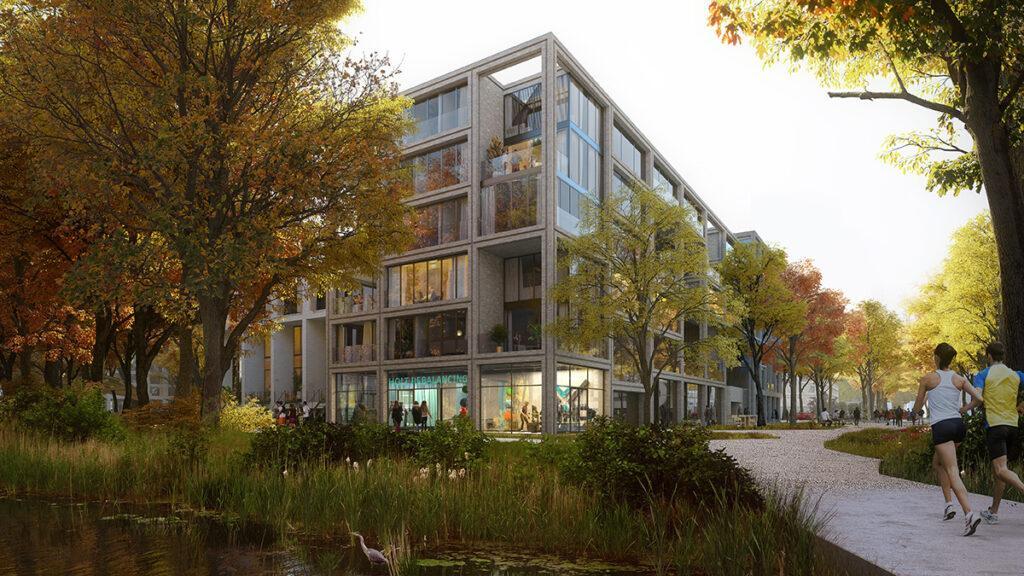
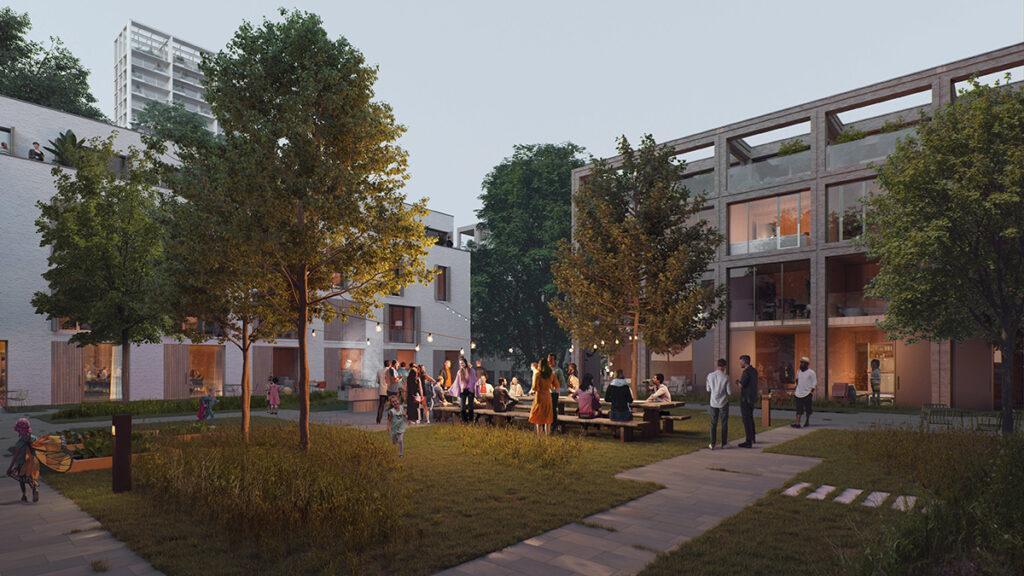
The world of work has also changed a lot. Will that affect the size and design of new office buildings?
They won’t get much smaller. However, we’ve already seen in recent years with the design of the headquarters of the big companies ASICS and Danone that you really don’t need that much space anymore.
What are people looking for right now, then?
What is also desired in current projects are fewer desks and more shared space. Offices are increasingly becoming social meeting places. You can work there as well as at home. Flexible design is therefore essential. Video conference rooms with professional digital setups are also very much in demand now. This in turn makes lighting and daylight an important issue. Our company will be moving into the floating office building that we designed, and we’ll be setting up a meeting room with multiple webcams there as well. So that we can broadcast presentations almost as perfectly as a TV studio.
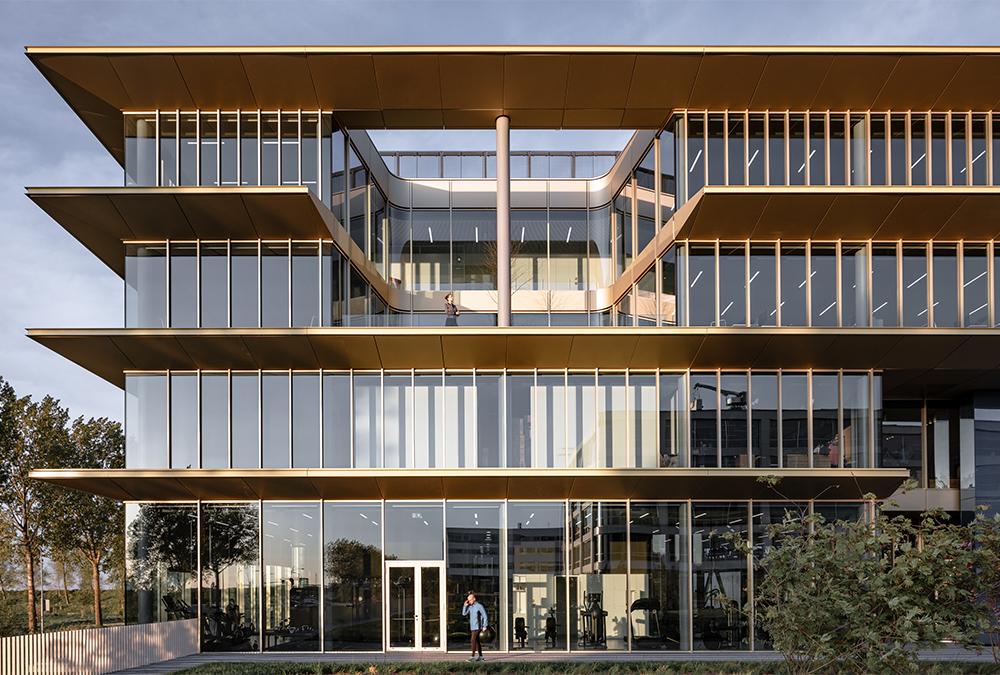
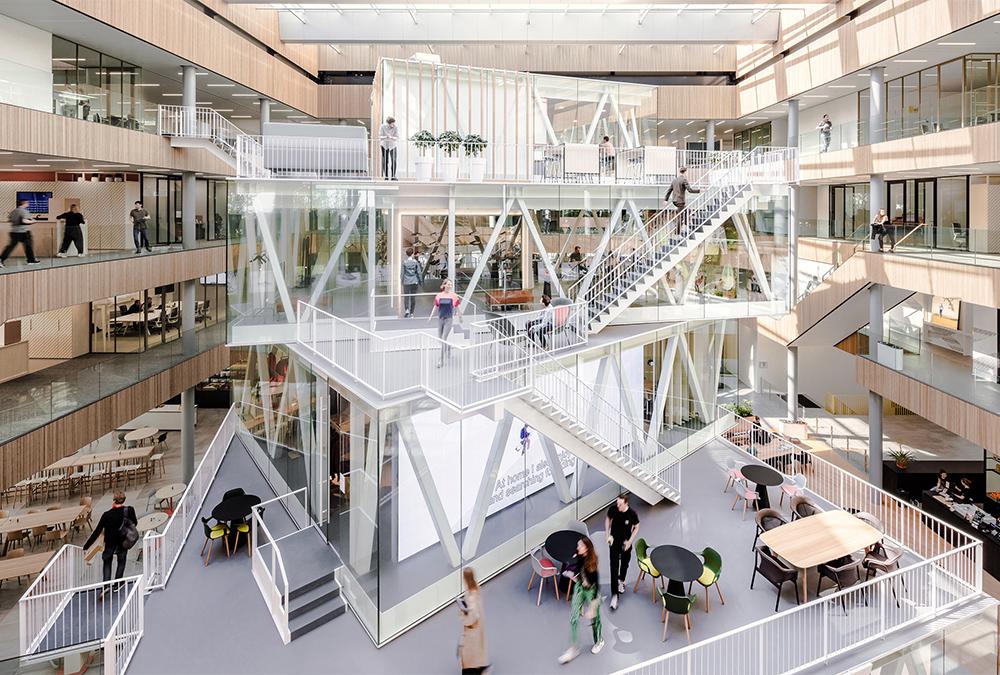
This “floating” office building that Powerhouse Company designed for the Rotterdam headquarters of the Global Center on Adaptation has attracted a great deal of international interest. Where did the idea to put a wooden building on the water come from?
We designed the master plan for the adjacent Codrico site. The idea for the floating office building developed in discussions with the municipality. The Global Center on Adaptation, which deals with measures against climate change, was looking for a special place that would fit its goals and profile. We thought about urban development and said to ourselves, let’s design something on the water! And suddenly it became a project.
What was the biggest challenge in implementing it?
Building it in a short period of time and in the process keeping in mind that there are a lot of things we are tackling for the first time. We squeezed a lot of new ideas into this design. You know: a floating building in itself is nothing new. But to create the largest floating office made of wood that is energy neutral and offers the greatest comfort? THAT was really absolutely new and makes the project unique.
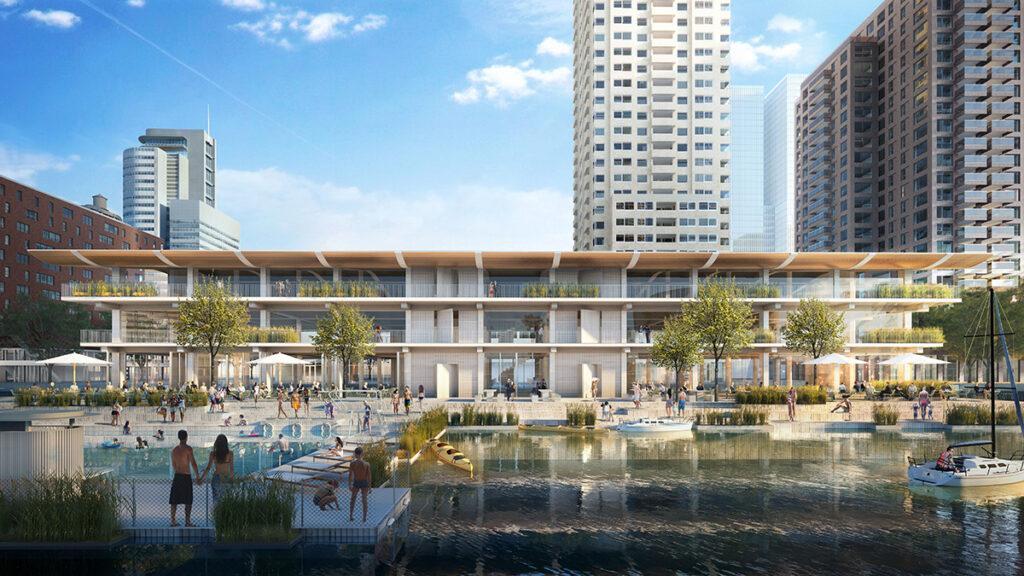
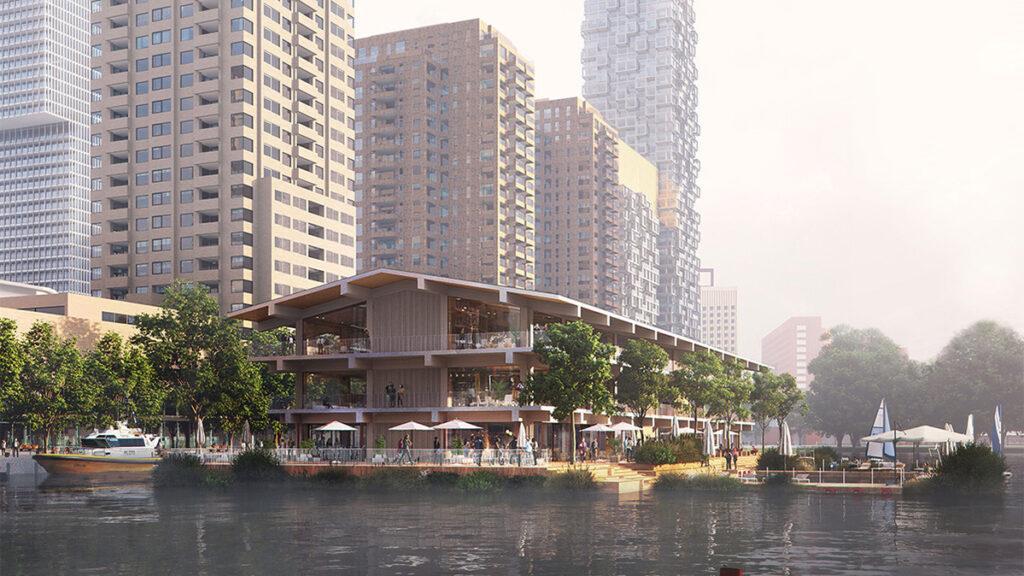
Could this project set a precedent elsewhere – such as in dense waterfront cities in need of housing?
I think so. In the Netherlands, we have a lot of experience with houseboats. And our floating office building is a climate-adaptive project. Residential buildings on water are a good option if they are affordable. The first ones probably won’t be, but there is a kind of learning curve here. I imagine the scale will have to be even larger to make such projects affordable. But I think we will see this happening.
Soil sealing is visibly becoming a problem. At the same time, more and more living space is needed. How can this problem be solved?
If architects and designers understand the impact a building has on the soil on site, the first step has already been taken. I’m thinking of the redesign of the train station in Assen, which we did a few years ago. The question was, with 3,000 square metres of space, what do you do with the rainwater? We created a large green roof that collects the water and drains it away in a controlled way. In other words, an attractive design element that also solves a problem. At “HOLT”, on the other hand, the forest and trees provide efficient rainwater harvesting and natural ground surfaces. I think there is a suitable solution for every location.
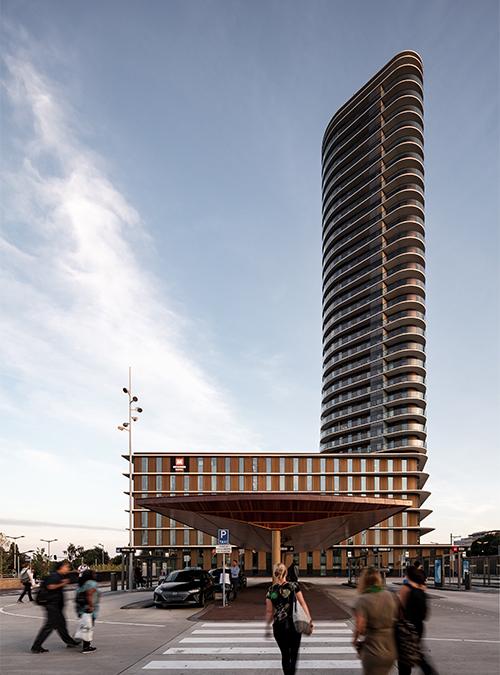
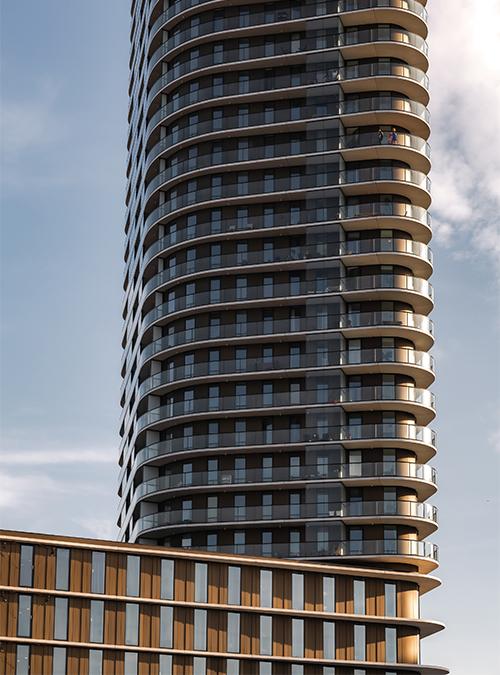
What about “future-oriented urban planning”? What plays a special role here?
Sustainable construction, a network of public transportation that is as perfect as possible, and a well thought-out mix. Anything that attracts additional cars into the city should be avoided. We need comfortable, short connections between work and home – and attractive, communicative public spaces.
How can we prevent veritable “ghetto districts” from developing – such as in France’s suburbs?
Architecture can help here, but this is a very complex problem. At “Valckensteyn” in Pendrecht, for example, we created a very open, transparent first floor, a large entrance lobby and a bright, particularly attractive bicycle room. These are comfortable zones that create a pleasant connection with the outside world. And in projects in downtown Rotterdam, we combine social housing with upscale developments, hotels and office buildings. So that, as it were, a city within the city is created – instead of a neighbourhood dominated by a particular focus group.
What are you currently working on?
Oh, there are so many projects! For example, the Conradhuis, a 24,000-square-metre building that is being built for the Amsterdam University of Technology. Or the redesign of the Codrico site in the port of Rotterdam and a square in the city centre where we are designing “Rise”, the tallest tower in the Netherlands. We’re also working on a new project in China similar to the “Loop of Wisdom” I mentioned earlier. And, of course, the first university in the Netherlands to be built of wood, in Tilburg.
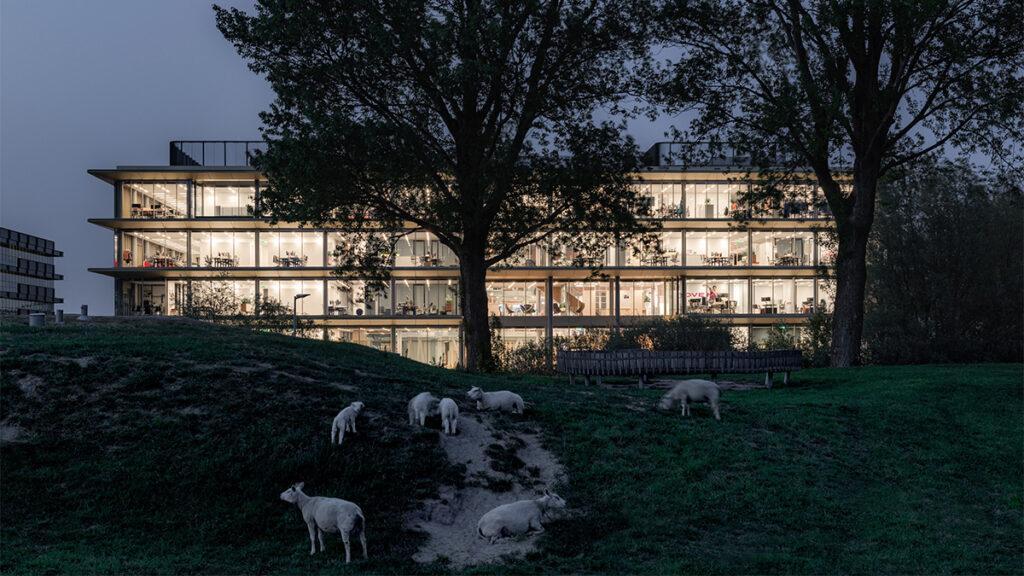
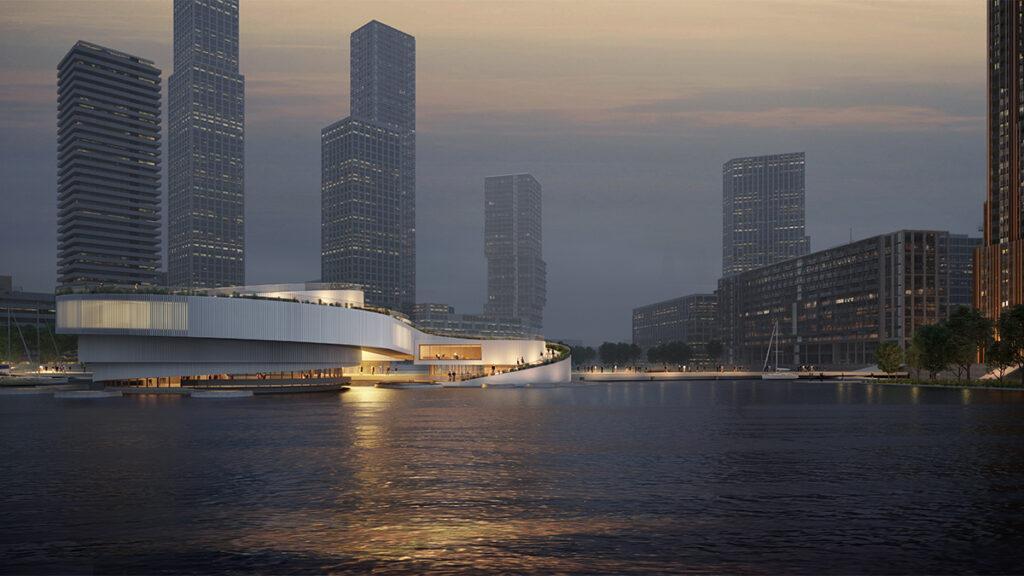
As a successful architect, you know your industry very well. In your opinion, what are the current mega-trends?
We have already discussed the fact that sustainability is a crucial topic. I think that through digitalization and the way we build, automation and robotization will have a big impact. I think artificial intelligence will also play a major role in the coming decades. It is, after all, already being used in the design process. You enter all the ideas, parameters and constraints into the computer and, in the same amount of time as before, you can check ten to 20 optional solutions at once instead of just three. There is this famous quote: “Artificial intelligence will not make any work superfluous. But it will ensure that highly skilled jobs are no longer needed.” Innovation can happen very quickly.
That sounds scary…
Yes and no. Because jobs can also change and everything is in flux.
What advice do you have for students who still dream of becoming successful architects?
The more and dedicated you work, the faster you gain experience. At the same time, you need a bit of luck to get the chance to implement and realize projects. You can help out here, because experience and knowledge are a great advantage. Just like good teamwork with inspiring people and mentors who offer support on the way to your goal.
Interview: Elisabeth Schneyder
Images: Powerhouse Company / Casper Rila, Plomp, Atchain, Filippo Bolognese, Proloog, Jonathan Leijonhufvud, Sebastian van Damme

